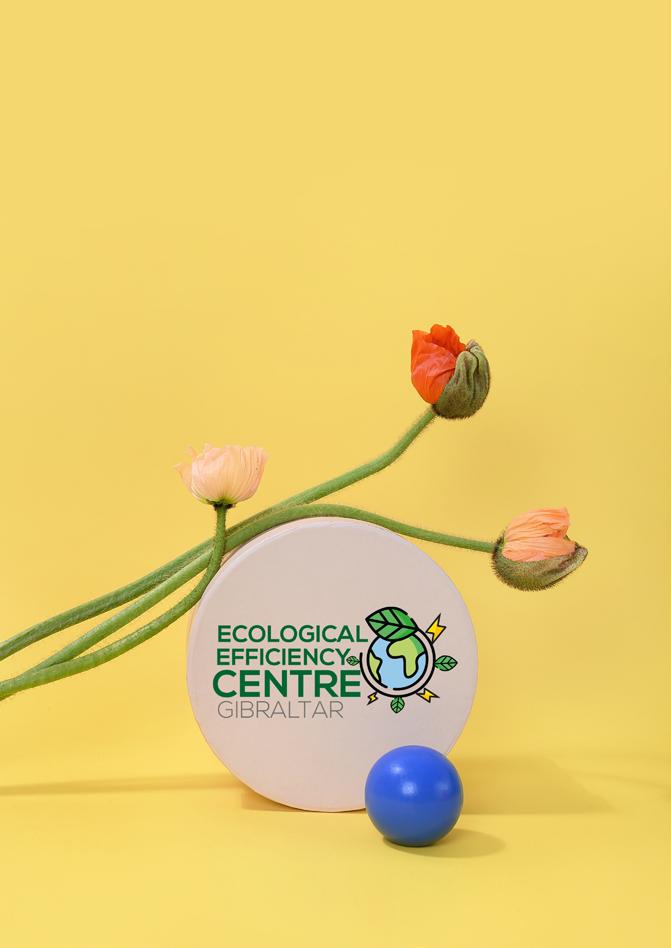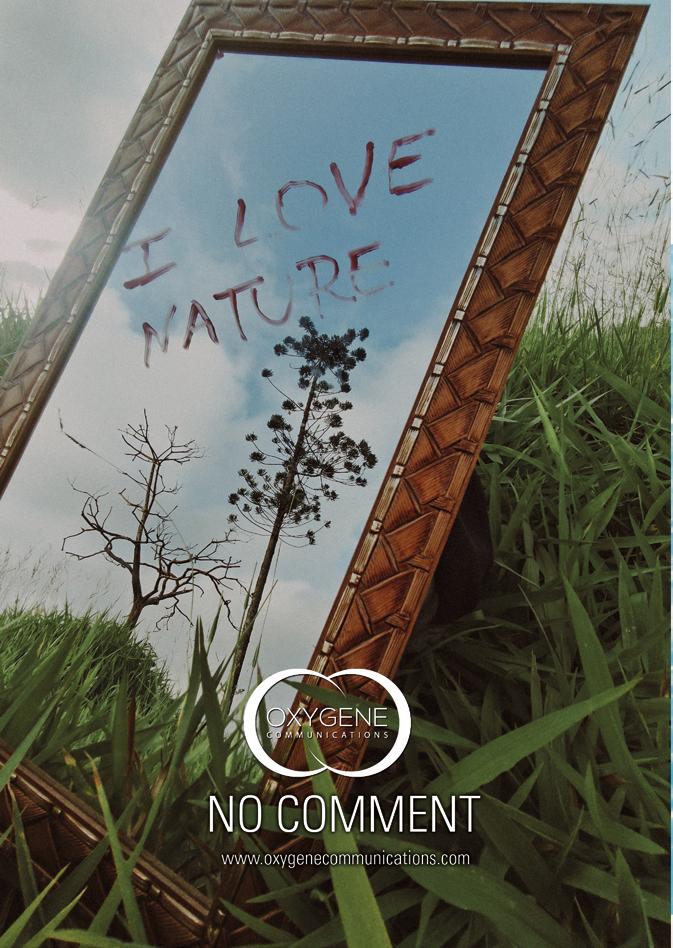
















A bright welcome to our new, fresh-looking OTWO Magazine. This month Juanjo has spoilt us with this bright and clean design to carry us forward for many months to come. Juanjo; always an artist, never disappoints.
This month marks Gibraltar’s very first Eco Festival. OTWO are so proud to be taking this new venture forward. So many details, preparations and work that are being done behind the scenes to make this festival the very best it can be is beyond comparison. We are so excited to host this event that would showcase the many sustainable and eco-friendly services and products that are available in Gibraltar. From small handmade creations to large corporations, we will bring you a wide variety of services and products that will prove just how easy it is to be a little bit more Eco friendly. We cannot be more grateful to the GSLA and Department of the Environment for helping us out in every way possible to make this possible. Just a few weeks away, remember to book your ticket.
This month has indeed been a busy month for the OTWO team. We have also closed off another sustainable bus advert to run for another year, that’s two buses’ now spreading the positive word. Due to the popularity of the first bus, another amazing 30 companies have opted to go for another bus to help spread the word of calming our roads. These important steps are essential if we are ever to calm our streets and make it at all appealing for those opting for sustainable transport. Let’s face it, there’s only so much road space – we need people to get on bikes
and opt for another mode of transport or else there will be a day that Gibraltar will be at a standstill. The future of Gibraltar will be grateful for it.
50 different companies in total have joined us in the sustainable transport promotion campaign. One more bicycle on our roads equals one less car, we must make it appealing and safe - this won’t happen overnight or on its own.
Hopefully the people elected in power will see the immense support his has and will start making some very necessary changes to our road network. They don’t have to be drastic - but any positive changes, signs, the right policing, no overtaking in some roads. - will start creating positive trends and in turn result in a safer more pleasant environment for all.
This month we say farewell to the lovely Yvette de la Rosa. A very sad moment for us at OTWO magazine. Yvette has been with us almost from the start of the magazine, with pre pandemic days at Nosha’s, promoting her incredibly tasty foods at the ICC and then giving us the honour of starting her very own column on our magazine. We will dearly miss our month-to-month delicious recipes from Yvette but not doubt she will smash her new venture. We wish you all the best Yvette and thank you so much for sharing your gorgeous recipes with us and support throughout the years. X
And on that note, I bid you all farewell for another month, I’m off to paint some palettes and start with the decorations for the Eco Festival. Hope to see you all there.
Peace and love to all, always
Una gran bienvenida a nuestra nueva y fresca revista OTWO. Este mes Juanjo nos ha mimado con este diseño brillante y sencillo para que nos acompañe durante muchos meses. Juanjo, siempre un artista, nunca decepciona.
Este mes se celebra el primer Festival Ecológico de Gibraltar. OTWO está muy orgullosa de llevar adelante esta nueva aventura. Hay tantos detalles, preparativos y trabajos que se están haciendo entre bastidores para que este festival sea el mejor posible, que no tiene comparación.
Estamos muy contentos de acoger este evento que mostrará los muchos servicios y productos sostenibles y ecológicos que están disponibles en Gibraltar. Desde las pequeñas creaciones artesanales hasta las grandes corporaciones, le traeremos una amplia variedad de servicios y productos que demostrarán lo fácil que es ser un poco más ecológico. No podemos estar más agradecidos a la GSLA y al Departamento de Medio Ambiente por ayudarnos en todo lo posible para que esto sea viable. Faltan pocas semanas, recuerde reservar su billete.
Este mes ha sido realmente un mes muy ocupado para el equipo de OTWO. También hemos cerrado el anuncio de otro autobús sostenible que funcionará un año más, es decir, dos autobuses que difunden un mensaje positivo. Debido a la popularidad del primero, otras increíbles 30 empresas han optado por otro autobús para ayudar a difundir el mensaje de calmar nuestras carreteras. Estos importantes pasos son esenciales si queremos que nuestras calles sean lo más atractivas posible para quienes optan por el transporte sostenible. Reconozcámoslo, el espacio en las carreteras es limitado: necesitamos que la gente se suba a la bicicleta y opte por otro medio
de transporte o, de lo contrario, habrá un día en que Gibraltar se paralice. El futuro de Gibraltar lo agradecerá.
En total, 50 empresas diferentes se han unido a nosotros en la campaña de promoción del transporte sostenible. Una bicicleta más en nuestras carreteras equivale a un coche menos, debemos hacerla atractiva y segura; esto no ocurrirá de la noche a la mañana ni por sí solo.
Esperemos que las personas elegidas en el poder vean el inmenso apoyo que tiene y empiecen a hacer algunos cambios muy necesarios en nuestra red de carreteras. No tienen por qué ser drásticos, pero cualquier cambio positivo, señales, una vigilancia adecuada, la prohibición de adelantar en algunas carreteras, creará tendencias positivas y, a su vez, dará lugar a un entorno más seguro y agradable para todos.
Este mes nos despedimos de la encantadora Yvette de la Rosa. Un momento muy triste para nosotros en la revista OTWO. Yvette ha estado con nosotros casi desde el inicio de la revista, con los días previos a la pandemia en Nosha’s, promocionando sus increíblemente sabrosas comidas en el ICC y luego dándonos el honor de comenzar su propia sección en nuestra revista. Echaremos mucho de menos nuestras deliciosas recetas mensuales de Yvette, pero no dudamos de que triunfará en su nueva aventura. Te deseamos todo lo mejor, Yvette, y te agradecemos mucho que hayas compartido con nosotros tus magníficas recetas y tu apoyo a lo largo de los años. X Y con esto, me despido de todos vosotros un mes más, me voy a pintar unos palets y a empezar con la decoración del Eco Festival. Espero veros a todos allí. Paz y amor para todos.

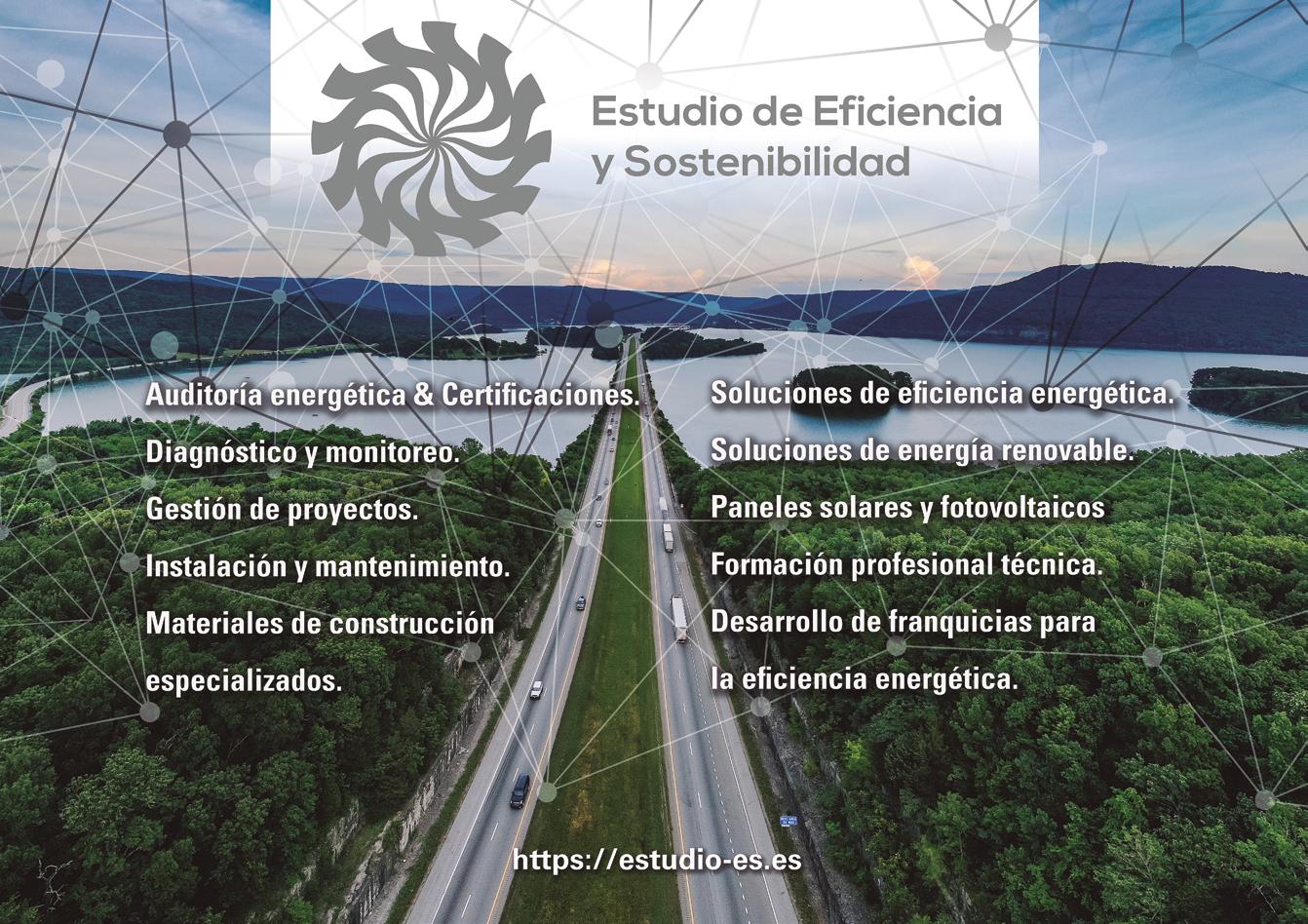
The European Commission Joint Research Centre (EC-JRC) has warned that the current drought affecting large parts of Europe could be the worst in 500 years.
Following an abnormally dry winter and spring, record temperatures and multiple heatwaves, some of Europe’s largest rivers such as the Danube, the Rhine and the Po have been so badly affected that some areas have been reduced to a mere trickle. Reservoirs in the UK, Portugal and Spain are also running dry. Scientists believe climate change has fuelled this year’s extreme heat and drought.
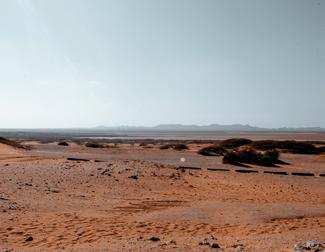
The very low water levels and rising temperatures have impacted everything from freight transportation, power production, water supplies, wildlife, irrigation and farming.
The EC-JRC has also warned that the severe drought will likely worsen, potentially reaching 47% of the continent.
In France, the usually lush and green wine-producing region of Bordeaux is dry and arid and suffering terrible wildfires. Energy production across the country has also been affected, with Nuclear Power Plants forced to reduce output due to high temperatures in the Garonne, the Rhône and Loire rivers.
Low water levels in the Rhine in Germany have forced a significant reduction in freight, leading to a fivefold increase in shipping costs. The Rhine serves as a major thoroughfare for the movement of goods and raw materials from the North Sea into Europe. If water levels continue to drop and barge transportation is further reduced or even temporarily halted, Germany and Europe will take a big economic hit.
Due to more than nine months of no rainfall, water levels in Italy’s longest river, the Po, are 2 metres below normal levels, and flow has also fallen to one-tenth its usual rate. Rice growers may lose up to 60% of their crops due to lack of water.
Across other parts of Europe, Britain has declared a drought in the south and imposed hose pipe bans in several regions. Water restrictions are due to be announced in London, potentially affecting up to 15 million people. Authorities in Serbia, Romania and
Bulgaria have begun dredging parts of the Danube to reduce disruption to vital freight routes. In Bavaria, a stark reduction in oxygen levels in the Danube due to warming will likely kill local species such as trout. The extreme heat and dry conditions have also caused severe wildfires across the continent. A record 1.6 million acres of land has burned between January and mid-August this year, equivalent to an area one-fifth the size of Belgium.
La peor sequía de Europa en 500 años
El Centro Común de Investigación de la Comisión Europea (CCI-CE) ha advertido que la actual sequía que afecta a amplias zonas de Europa podría ser la peor de los últimos 500 años.
Tras un invierno y una primavera anormalmente secos, temperaturas récord y múltiples olas de calor, algunos de los mayores ríos de Europa, como el Danubio, el Rin y el Po, se han visto tan afectados que en algunas zonas se han reducido a un mero goteo. Los embalses del Reino Unido, Portugal y España también se están secando. Los científicos creen que el cambio climático ha impulsado el calor extremo y la sequía de este año.
Los bajísimos niveles de agua y el aumento de las temperaturas han afectado a todo, desde el transporte de mercancías hasta la producción de energía, pasando por el suministro de agua, la vida silvestre, el riego y la agricultura.
El CE-CCI también ha advertido que la grave sequía probablemente se agravará, pudiendo alcanzar el 47% del continente.
En Francia, la región vinícola de Burdeos, habitualmente exuberante y verde, está seca y árida y sufre terribles incendios forestales. La producción de energía en todo el país también se ha visto afectada, y las centrales nucleares se han visto obligadas a reducir la producción debido a las altas temperaturas en los ríos Garona, Ródano y Loira.
El bajo nivel de las aguas del Rin en Alemania ha obligado a reducir considerablemente el transporte de mercancías, lo que ha quintuplicado los costes de envío. El Rin es una de las principales vías de transporte de mercancías y materias primas desde el Mar del Norte hacia Europa. Si el nivel de las aguas sigue bajando y el transporte por barcaza se reduce aún más o incluso se detiene temporalmente, Alemania y Europa sufrirán un gran golpe económico.
Debido a los más de nueve meses de ausencia de lluvias, el nivel de agua del río más largo de Italia, el Po, está dos metros por debajo de los niveles normales, y el caudal también ha descendido a una décima parte de su ritmo habitual. Los cultivadores de arroz pueden perder hasta el 60% de sus cosechas por falta de agua.
En otras partes de Europa, Gran Bretaña ha declarado la sequía en el sur y ha impuesto la prohibición de usar mangueras en varias regiones. En Londres se van a anunciar restricciones de agua que podrían afectar a 15 millones de personas. Las autoridades de Serbia, Rumanía y Bulgaria han comenzado a dragar partes del Danubio para reducir la interrupción de las rutas de transporte vitales. En Baviera, la drástica reducción de los niveles de oxígeno en el Danubio debido al calentamiento probablemente matará a especies locales como la trucha.
El calor extremo y las condiciones de sequedad también han provocado graves incendios forestales en todo el continente. Entre enero y mediados de agosto de este año se ha quemado la cifra récord de 1,6 millones de acres de tierra, lo que equivale a una superficie equivalente a una quinta parte de Bélgica.
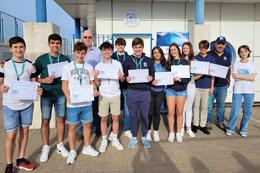
TNP has launched a new awards scheme for this summer, recognising the magnificent efforts of participants to help protect Gibraltar’s coastline and marine wildlife.
There are 12 different awards available, and participants will be given a lapel pin to recognise their contributions.
The first lapel pins have already been presented to the Duke of Edinburgh Bronze Award cohort for
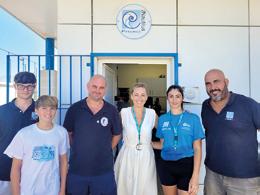


their successful completion of service to the Nautilus Project. Several #MarineLifeRescuer awards have also been handed out in recognition of those who have rescued marine wildlife within Gibraltar’s coastline.
Some of the other awards include Custodians of The Bay, Nemo Citizen Scientists and Med Ocean
Heroes. All of the 12 awards focus on recognising the good environmental work by members of the community.
Congratulations to all those who have picked up an award, and thank you for all your great work!
El Proyecto Nautilus lanza un nuevo plan de verano
El TNP ha puesto en marcha un nuevo programa de premios para este verano, que reconoce los magníficos esfuerzos de los participantes para ayudar a proteger el litoral y la fauna marina de Gibraltar.
Hay 12 premios diferentes disponibles, y los participantes recibirán un pin de solapa para reconocer sus contribuciones.
Las primeras insignias de solapa ya se han entregado a la cohorte del Premio Duque de Edimburgo de Bronce por haber completado con éxito su servicio al Proyecto Nautilus. También se han entregado varios premios #MarineLifeRescuer en reconocimiento a quienes han rescatado la fauna marina dentro del litoral de Gibraltar.
Algunos de los otros premios incluyen Custodios de la Bahía, Científicos Ciudadanos Nemo y Héroes del Océano Med. Los 12 premios se centran en reconocer el buen trabajo medioambiental de los miembros de la comunidad.
Enhorabuena a todos los que han recibido un premio y gracias por su gran trabajo.
President Biden has signed a landmark climate and healthcare bill worth $700bn to tackle medical costs and drastically reduce emissions by 2030.
Although significantly smaller than the $3.5tn package originally proposed by the Democrats, scientists and activists have welcomed the bill as a significant step toward reaching the United States emissions goals but also warned that a considerable amount more investment and work will be needed to limit warming.
More than half of the $700bn will go toward tackling climate change, the biggest federal investment in history allocated to fighting the climate crisis.
According to analyse by the independent research organisation Rhodium Group, prior to the new climate
bill, the US was projected to reduce emissions by up to 35% by 2030. The new bill now means that emissions could be cut by up to 44% in the next 8 years.
The bill will offer tax incentives to companies to invest in renewable energies and rebates for individuals who invest in energy-efficient home improvements such as better insulations, heat pumps and solar panels and to purchase electric vehicles.
The investment will also go towards climate and weather forecasting at NOAA, research into eco-friendly jet fuels and clean-energy technologies.
Some scientists feel that the bill signals to the world that the US is prepared to take the climate crisis seriously, especially as the United States has historically pumped more greenhouse gases into the atmosphere than any other country in the world. The bill will hopefully encourage other nations to invest more heavily in tackling their own emissions.
However, others have signalled that the investment falls short. Even if every country reaches their current emissions targets, global temperatures will still exceed 1.5C.
Estados Unidos aprueba un proyecto de ley histórico sobre el clima
El Presidente Biden ha firmado un histórico proyecto de ley sobre el clima y la sanidad por valor de 700.000 millones de dólares para hacer frente a los costes médicos y reducir drásticamente las emisiones de aquí a 2030.
Aunque es significativamente menor que el paquete de 3,5 billones de dólares propuesto originalmente por los demócratas, los científicos y activistas han acogido con satisfacción el proyecto de ley como un paso importante para alcanzar los objetivos

de emisiones de Estados Unidos, pero también han advertido que se necesitará una cantidad considerable de inversión y trabajo adicional para limitar el calentamiento.
Más de la mitad de los 700.000 millones de dólares se destinarán a la lucha contra el cambio climático, la mayor inversión federal de la historia destinada a combatir la crisis climática.
Según un análisis de la organización de investigación independiente Rhodium Group, antes del nuevo proyecto de ley sobre el clima, se preveía que EE.UU. reduciría las emisiones hasta un 35% de aquí a 2030. Ahora, el nuevo proyecto de ley significa que las emisiones podrían reducirse hasta un 44% en los próximos 8 años.
El proyecto de ley ofrecerá incentivos fiscales a las empresas para que inviertan en energías renovables y rebajas a los particulares que inviertan en mejoras energéticas en sus hogares, como mejores aislamientos, bombas de calor y paneles solares, y en la compra de vehículos eléctricos.
La inversión también se destinará a la previsión climática y meteorológica de la NOAA, a la investigación de combustibles ecológicos para aviones y a tecnologías de energía limpia.
Algunos científicos consideran que el proyecto de ley indica al mundo que Estados Unidos está dispuesto a tomarse en serio la crisis climática, sobre todo teniendo en cuenta que históricamente ha bombeado más gases de efecto invernadero a la atmósfera que cualquier otro país del mundo. Es de esperar que el proyecto de ley anime a otros países a invertir más en la lucha contra sus propias emisiones.
Sin embargo, otros han señalado que la inversión se queda corta. Incluso si todos los países alcanzan sus actuales objetivos de emisiones, las temperaturas globales seguirán superando los 1,5C.
Since May, thousands of volunteers have transformed the Dutch city of Leeuwarden into an ever-moving green route.
The ‘walking’ forest is part of the Arcadia art festival, which sees artists, performers and speakers all come together to promote a greener, more sustainable future.
The mobile art installation is called Bosk (‘forest’ in Frisian) and was developed by landscape architect Bruno Doedens.
For the last few months, volunteers have been slowly transporting nearly a thousand native trees planted in wooden containers across the city so that ‘every day for a hundred days, a different part of the city centre of Leeuwarden will be coloured green’.
The idea behind the project is to ‘focus our attention on the urgent need to change our view of the relationship between humanity and nature’.
Once the trees are positioned in their new location, seated areas are set up for people to enjoy, and QR codes provide information on the tree species.
Many locals have embraced the project, with hotels providing picnic baskets for guests to enjoy the green spaces, a local brewery has produced a special beer for the festival called BoskBier with 10 cents for each one sold going to the tree planting programme - Plan boom and all the volunteers helping to move Bosk around the city are locals of all ages and backgrounds.
The installation ends in mid-August, after which the trees will be permanently planted around the city.

Una ciudad holandesa transformada por un bosque «ambulante»
Desde mayo, miles de voluntarios han transformado la ciudad holandesa de Leeuwarden en una ruta verde en constante movimiento.
El bosque “ambulante” forma parte del festival de arte Arcadia, en el que se reúnen artistas, intérpretes y conferenciantes para promover un futuro más verde y sostenible.
La instalación artística móvil se llama Bosk (“bosque” en frisón) y fue desarrollada por el arquitecto paisajista Bruno Doedens.
Durante los últimos meses, los voluntarios han ido
transportando poco a poco cerca de mil árboles autóctonos plantados en contenedores de madera por toda la ciudad para que “cada día, durante cien días, una parte diferente del centro de Leeuwarden se tiña de verde”.
La idea del proyecto es “centrar nuestra atención en la urgente necesidad de cambiar nuestra visión de la relación entre la humanidad y la naturaleza”.
Una vez colocados los árboles en su nueva ubicación, se instalan zonas de descanso para que la gente pueda disfrutar de ellos, y los códigos QR proporcionan información sobre las especies de árboles.
Muchos habitantes de la ciudad han acogido el proyecto: los hoteles proporcionan cestas de picnic para que los huéspedes disfruten de los espacios verdes, una cervecería local ha producido una cerveza especial para el festival, llamada BoskBier, y 10 céntimos de cada una vendida se destinan al programa de plantación de árboles - Plan boom y todos los voluntarios que ayudan a trasladar a Bosk por la ciudad son habitantes de la ciudad de todas las edades y procedencias.
La instalación finaliza a mediados de agosto, tras lo cual los árboles se plantarán de forma permanente por toda la ciudad.
OTWO are proud to have acquired Eco Passion from Sarah and Steph to continue to share with you a variety of hand-picked eco-friendly products to help protect this earth which we all love.
These lovely ladies dedicated much time and effort to researching and hand-picking products which best helped our mission for a cleaner planet. We at OTWO share the passionate drive to reduce waste, reduce plastic in oceans, increase awareness of environmental issues, and above all offer zero waste and plastic-free alternatives to daily products.
Eco Passion will now become our brand, one that guarantees that together we can make meaningful improvements to our environment and one that will be uncompromising in the delivery of our mission to help us all take better care of our planet.
OTWO se enorgullece de haber adquirido Eco Passion de Sarah y Steph para continuar compartiendo con ustedes una variedad de productos ecológicos cuidadosamente seleccionados para ayudar a proteger esta tierra que todos amamos.
Estas encantadoras damas dedicaron mucho tiempo y esfuerzo a investigar y seleccionar a mano los productos ecológicos que mejor ayudaron a nuestra misión por un planeta más limpio. En OTWO compartimos el impulso apasionado de reducir los desechos, reducir el plástico en los océanos, aumentar la conciencia sobre los problemas ambientales y, sobre todo, ofrecer alternativas sostenibles a los productos diarios que nadie debería cuestionar.
Eco Passion ahora se convertirá en nuestra marca, una que garantiza que juntos podemos lograr mejoras significativas en nuestro medio ambiente y que será intransigente en el cumplimiento de nuestra misión de ayudarnos a cuidar mejor el planeta.
Seguimos creciendo
OTWO se enorgullece de haber adquirido Eco Passion de Sarah y Steph para continuar compartiendo
con ustedes una variedad de productos ecológicos cuidadosamente seleccionados para ayudar a proteger esta tierra que todos amamos.
Estas encantadoras damas dedicaron mucho tiempo y esfuerzo a investigar y seleccionar a mano los productos ecológicos que mejor ayudaron a nuestra misión por un planeta más limpio. En OTWO compartimos el impulso apasionado de reducir los desechos, reducir el plástico en los océanos, aumentar la conciencia sobre los problemas ambientales y, sobre todo, ofrecer alternativas sin desechos y sin plástico a los productos diarios que muchos no piensan cuestionar.
Eco Passion ahora se convertirá en nuestra marca, una que garantiza que juntos podemos lograr mejoras significativas en nuestro medio ambiente y que será intransigente en el cumplimiento de nuestra misión de ayudarnos a todos a cuidar mejor nuestro planeta.

#reuse#savingourenviroment#sustainability#letsturnthisaround #recycle#greenchoice#earthmatters
Since 2015 we are very proud to say that Metalrok Ltd has been providing Gibraltar with a Recycling Service at the premises delivered by the government of Gibraltar Ecopark which is a joint public and private partnership located at 8 Flint Road. There has been an increase in Recycling but even so our daily waste stream contains goods which are perfectly suited to be reused not been recycled ending up in the landfill polluting the environment.
Together we can turn this around by reusing, preventing pollution, reducing usage of raw materials, sustaining the environment for future generations thus preventing them from ending in landfill and sea.
There is a need for these items in places like Senegal in West Africa were there are areas of extreme Poverty. with your cooperation we would like to meet their necessities by helping to provide them with donated unwanted items like:
All Clothing, Furniture inc Mirrors, Linen, household items, toys, office equipment, medical equipment electro domestics, bicycles, scooters, books. Car seats, doors windows, sinks, Showers, toilets.
We are collecting items that are still good for purpose and in usable condition in a bid to give them a new lease of life. Kindly take note that we will not make ourselves responsible for the collection of broken down items. The circumstances these people unfortunately live in deserve a sense of dignity and pride. Please only get in touch for items that will enhance and enrich their livelihoods.
Drop of points are:
Nanot Ltd 27 New Harbours: Mon To Fri from 10am to 3pm.
Ecopark 8 Flint Road: every day from 8am to 8pm.
Collections Mon to Fri 5pm to 7pm pre booked only ( Sat only Prebooked) this may change depending on demand. Is limited to more than 5 bags or large items only please send pics post collection.
WATSAPP ONLY: No 00350 56003361
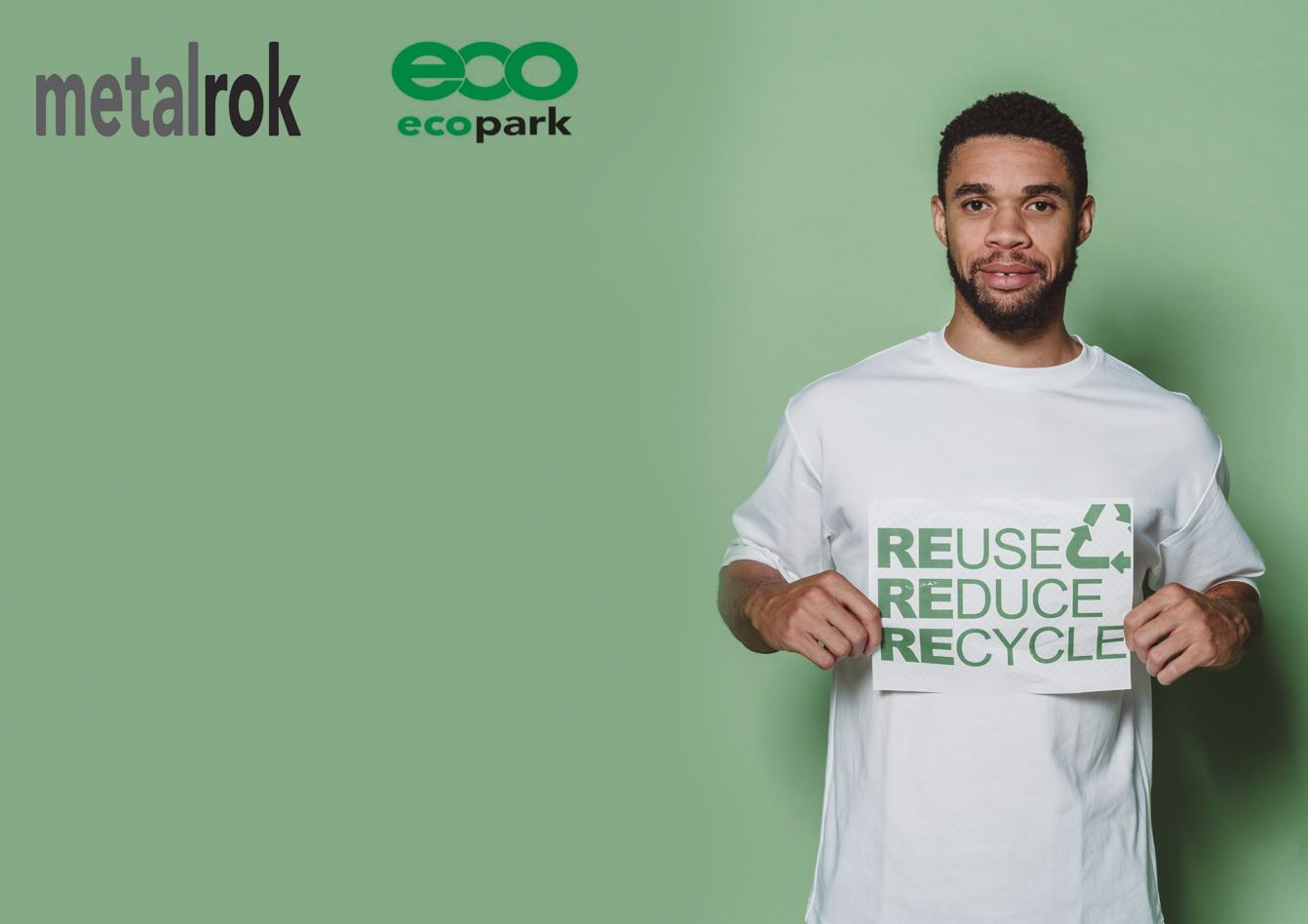
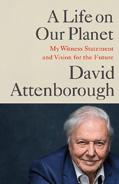
A Life on our Planet:
My witness statement and my vision for the future
By Sir David Attenborough
Optimistic in places, but often heart-wrenching, David Attenborough’s Life on our Planet is an account of a remarkable life and career as one of the world’s most prolific and well-known natural history documentarians, where he also describes how he has witnessed our natural world change and decline.
This first-hand account from a person who has practically been everywhere and seen everything in the world of natural history
delivers a dire warning of the inevitability of climate and biodiversity breakdown if we do not act now.
But there is hope; Attenborough highlights the ways in which we can alter the course we are on, and if we take swift action, we can make things right.
Una vida en nuestro planeta: Mi declaración como testigo y mi visión del futuro
Por Sir David Attenborough
Optimista en algunos puntos, pero a menudo desgarrador, La vida en nuestro planeta de David Attenborough es un relato de una vida y una carrera extraordinarias como uno de los documentalistas de historia natural más prolíficos y conocidos del mundo, donde también describe cómo ha sido testigo del cambio y el declive de nuestro mundo natural.
Este relato de primera mano de una
persona que prácticamente ha estado en todas partes y lo ha visto todo en el mundo de la historia natural ofrece una advertencia funesta sobre la inevitabilidad del colapso del clima y la biodiversidad si no actuamos ahora.
Pero hay esperanza; Attenborough subraya las formas en que podemos alterar el rumbo que llevamos y, si actuamos con rapidez, podemos arreglar las cosas.

The exhausted critique of José Manuel Naredo
The lucidity with which Naredo dissects the lies around the environment is moving, but it also makes you stupefied and angry at how they manipulate us with bombastic terms that lack real meaning. The “No-Concept” show the suffocation of the ecological discourse,
which has assumed these semantic traps with an alarming ingenuity to remain entangled in a paralysis that becomes more evident every moment. These rhetorics of emptiness are used —I used them until recently— with a lightness that is as unconscious as it is unfortunate. Words like “Sustainable Development”, “Evil Neo-liberalism” or “Tyranny of the Markets” come out of our mouths as defensive arguments to fight in favor of the environment to disappear into the air turned into pure smoke, something like the rhinoceros of the end from the movie “James and the Giant Peach”. it is an essential read. This book is an antidote to the strategies of deception and manipulation offered by José Manuel Naredo, perhaps the most lucid mind in ecological economics. National Prize for the Environment in Spain, International Prize for Geocriticism, Golden Panda among many other awards.
La crítica agotada de José Manuel Naredo.
Emociona la lucidez con que Naredo disecciona las
mentiras alrededor del medioambiente, pero también te provoca estupor y enfado de como nos manipulan con términos muy rimbombante pero carentes de un sentido real. Los «No-Conceptos» muestran el la asfixia del discurso ecologista, que ha asumido con una ingenuidad alarmante estas trampas semánticas para quedar enredado en una parálisis que se hace más evidente a cada momento.
Estas retóricas de lo vacuo se usan —yo la he usado hasta hace poco— con una ligereza tan inconsciente como desafortunada. Palabras como «Desarrollo Sostenible», «Neo-liberalismo Maligno» o «Tiranía de los Mercados» salen de nuestras bocas como argumentos defensivos para luchar a favor del medioambiente para desaparecer en el aire convertidas en puro humo, algo así como el rinoceronte del final de la película «James y el Melocotón Gigante». Es imprescindible leerlo. Este libro que nos ofrece Naredo es un antídoto contra las estrategias del engaño y la manipulación. Sin duda alguna
una de las mente más lucida de la economía ecológica. Premio Nacional de Medio Ambiente en España, Premio Internacional de Geocrítica y Panda de Oro entre otros muchos galardones.
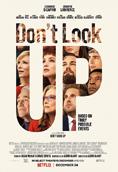
Don’t look up (2021)
Director: Adam McKay . Two astronomers make a once-in-a-lifetime discovery, a giant comet! The problem is, it’s on a collision course with Earth and worst of all, no one cares. With just six months until impact, they scramble desperately to warn the world of impending doom. But unfortunately, the president is completely indifferent, the media think it is all a bit of a joke, and the rich only see an opportunity to make themselves richer.
The immensely cynical and satirical take on a world dominated
by mass and social media, amoral politicians, disinformation and corporations paints a bleak picture of humanity’s refusal to accept its catastrophic fate.
Sound familiar?
Don’t Look Up may be extravagant in its delivery, but hits the mark as a metaphor for climate change and the pushback climate scientists have had to deal with for decades and is simultaneously hilarious and maddening to watch.
No mires hacia arriba (2021)
Director: Adam McKay
Dos astrónomos hacen un descubrimiento único en la vida: ¡un cometa gigante! El problema es que está en curso de colisión con la Tierra y, lo peor de todo, a nadie le importa.
A sólo seis meses del impacto, se apresuran a advertir al mundo de la inminente catástrofe. Pero, por desgracia, el presidente se muestra completamente indiferente, los medios de comunicación creen que todo es una broma y los ricos sólo ven una oportunidad para hacerse más ricos.
Esta visión enormemente cínica y satírica de un mundo dominado por los medios de comunicación de masas y sociales, los políticos amorales, la desinformación y las corporaciones pinta un panorama sombrío de la negativa de la humanidad a aceptar su destino catastrófico.
¿Te resulta familiar?
Don’t Look Up puede ser extravagante en su presentación, pero da en el clavo como metáfora del cambio climático y la reacción violenta que los científicos del clima han enfrentado durante décadas, y es a la vez hilarante y enloquecedor de ver.
Exhibition Exposición
In the Air Wellcome Collection, London
Until 16th October 2022
Through historical documentation, immersive contemporary artwork and installations, In the Air explores the relationships between us, the earth, and the air around us, by investigating how it is both vital for life and hazardous to our health.
Artists including Tacita



Dean, David Rickard, Dryden Goodwin and Forensic Architecture take us through the long history of our air, from the introduction of oxygen in the earth’s atmosphere 3.5 billion years ago to early and current anti-pollution activism and the geopolitical issues surrounding air quality. This imaginative exhibition drives home the need to protect the air we breathe, or we could be left gasping for breath.
En el aire Colección de bienvenida, Londres
Hasta el 16 de octubre de 2022
A través de documentación histórica, obras de arte contemporáneas inmersivas e instalaciones, «In the Air» explora las relaciones entre nosotros, la tierra y el aire que nos rodea, investigando cómo es a la vez vital para la vida y peligroso para nuestra salud.
Artistas como Tacita Dean, David Rickard, Dryden Goodwin y Forensic Architecture nos llevan a través de la larga historia de nuestro aire, desde la introducción del oxígeno en la atmósfera
terrestre hace 3.500 millones de años hasta el activismo anticontaminación temprano y actual y las cuestiones geopolíticas que rodean la calidad del aire.
Esta imaginativa exposición pone de manifiesto la necesidad de proteger el aire que respiramos, o podríamos quedarnos sin aliento.
Abundant Futures
Centro de Creacion Contemporanea de Andalucia, Cordoba
Until 5th March 2023
Abundant Futures, the first exhibition in a three-year collaboration between the City of Córdoba and the Thyssen-Bornemisza Art Contemporary (TBA21) brings together works from 40 outstanding international artists to create an exhibition that explores new ways of living together and invites us to conceive of a world and an ecological future that is constructed from a place of plenitude.
The collection from TBA21 represents the ethical and ecological spirit of the foundation and the Abundant Futures Exhibition was curated to reimagine
concepts of a better future where sustainability and regeneration provide abundance and a fruitful co-existence with nature.
Abundant Futures
Centro de Creacion Contemporanea de Andalucia, Cordoba Hasta el 5 de marzo de 2023
Abundant Futures, la primera exposición de una colaboración de tres años entre el Ayuntamiento de Córdoba y la Fundación Thyssen-Bornemisza Art Contemporary (TBA21) reúne obras de 40 destacados artistas internacionales para crear una exposición que explora nuevas formas de convivencia y nos invita a concebir un mundo y un futuro ecológico que se construye desde la plenitud.
La colección de TBA21 representa el espíritu ético y ecológico de la fundación y la exposición Abundant Futures fue comisariada para reimaginar conceptos de un futuro mejor en el que la sostenibilidad y la regeneración proporcionen abundancia y una coexistencia fructífera con la naturaleza.
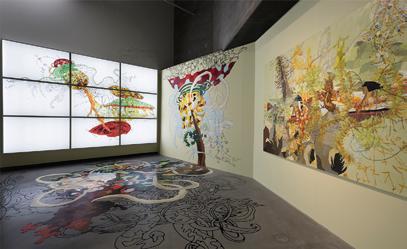

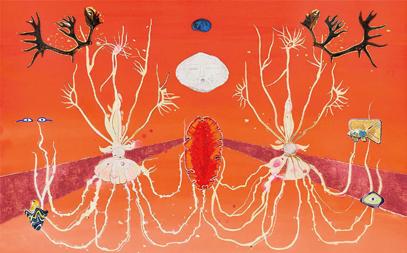
In 2020, 13 Member States met their respective 20202029 national emission reduction commitments for each of the five main pollutants. However, 14 Member States failed to meet their emission reduction commitments for at least one of the five main air pollutants. The biggest challenge for the period 2020-2029 is reducing emissions of ammonia, with 11 Member States needing to cut their emission levels. Reductions of sulphur dioxide over time have been considerable, and only one Member State needs to reduce emissions to meet the 2020-2029 commitment. Looking further ahead, two Member States have already achieved all their respective national emission reduction commitments for 2030 and beyond. Almost two thirds of Member States will need to reduce emissions of ammonia, nitrogen oxides and fine particulate matter to meet their 2030 commitments.
En 2020, 13 Estados miembros cumplieron sus respectivos compromisos nacionales de reducción de emisiones para 2020-2029 para cada uno de los cinco contaminantes principales. Sin embargo, 14 estados miembros no cumplieron sus compromisos de reducción de emisiones para al menos uno de los cinco principales contaminantes atmosféricos. El mayor desafío para el período 2020-2029 es reducir las emisiones de amoníaco, con 11 estados miembros que necesitan reducir sus niveles de emisión. Las reducciones de dióxido de azufre a lo largo del tiempo han sido considerables y solo un estado miembro necesita reducir las emisiones para cumplir el compromiso de 2020-2029. De cara al futuro, dos estados miembros ya han alcanzado todos sus respectivos compromisos nacionales de reducción de emisiones para 2030 y más allá. Casi dos tercios de los estados miembros deberán reducir las emisiones de amoníaco, óxidos de nitrógeno y partículas finas para cumplir sus compromisos para 2030.
National Emission reduction Commitments
Directive reporting status 2022. European Environment Agency


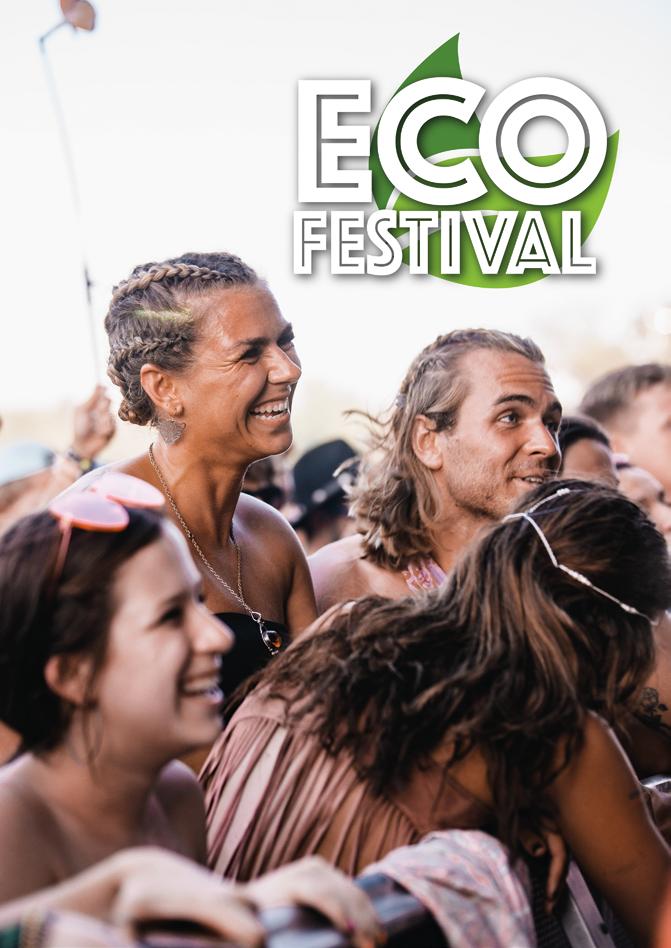
The festival of ecological awareness
fiesta
Everyone here at OTWO has been working flat over the last couple of months to bring you the first (and hopefully not last) ECO Festival.
The ECO Festival is all about bringing people of all ages together to learn more about local sustainability projects and businesses that offer an evergrowing array of eco-friendly options and spread awareness. But most of all, it is about having a good time and enjoying the last of the summer sun in the most sustainable way possible!
The first annual ECO Festival is on Saturday 24th September 2022, from 10:30 am to 7 pm at Europa Pool. The event will include activities for everyone to enjoy, such as pool access, great food, marquee stalls promoting and showcasing their eco-conscious businesses and stalls selling environmentally friendly products. There will also be live music and entertainment to give the day that special festival feel!
OTWO is very fortunate to have some fantastic local businesses supporting and sponsoring the event. We would like to say a big thank you to Isola’s Law firm, Metalrok Ltd and renewable energy companies EVG and AMA Services for giving us so much help and support!
Local distillery Spirit of the Rock will be there to showcase its fantastic products at one of several confirmed marquess stalls. The local gin producer is a great example of a modern eco-conscious business who have taken steps to ensure its production process and packaging have a low environmental impact. They also offer their customers the opportunity to return empty bottles for discounts.
The Cycle Centre and EBike Gibraltar will be there to promote their great selection of bicycles and e-bikes and will offer people the chance to test them out for themselves!
AMA Services will be showcasing and providing information on their solar energy product range and local eco-friendly stores Unpacked, Backing the Planet and Eco Passion will demonstrate just how easy

Todo el mundo aquí en OTWO ha estado trabajando a tope durante los últimos dos meses para traerte el primer (y espero que no último) Festival ECO. El Festival ECO trata de reunir a personas de todas las edades para que conozcan los proyectos locales de sostenibilidad y los negocios que ofrecen una gama cada vez mayor de opciones ecológicas y para que se conciencien. Pero, sobre todo, se trata de pasarlo bien y disfrutar de los últimos rayos de sol del verano de la forma más sostenible posible. El primer Festival ECO anual se celebrará el sábado 24 de septiembre de 2022, de 10:30 a 19:00 en la Piscina Europa. El evento incluirá actividades para que todo el mundo pueda disfrutar, como el acceso a la piscina, buena comida, puestos de carpa que promocionan y muestran sus negocios eco conscientes y puestos de venta de productos respetuosos con el medio ambiente. También habrá música en directo y algunos espectáculos únicos para dar a la jornada ese toque especial de festival.
OTWO tiene la suerte de contar con el apoyo y el patrocinio de algunas fantásticas empresas locales. Nos gustaría dar las gracias al bufete de abogados Isola, a Metalrok Ltd y a las empresas de energías renovables EVG y AMA Services por su ayuda y apoyo. La destilería local Spirit of the Rock estará allí para mostrar sus fantásticos productos en uno de los varios puestos marquistas confirmados. Este productor local de ginebra es un gran ejemplo de empresa moderna con conciencia ecológica que ha tomado medidas para garantizar que su proceso de producción y su envasado tengan un bajo impacto medioambiental. También ofrecen a sus clientes la posibilidad de devolver las botellas vacías para obtener descuentos.
El Cycle Centre y EBike Gibraltar estarán presentes para promocionar su gran selección de bicicletas y bicicletas eléctricas y ofrecerán a la gente la oportunidad de probarlas por sí mismos.

it is to access products that have a low environmental impact, made from sustainable materials or naturally sourced ingredients.
There will be some great activities arranged for all to enjoy, including a bouncy castle, introductory beach volleyball access on the sand pitches, aqua aerobics and more to be announced.
Finally, we have some fantastic entertainment lined-up for you all to enjoy! DJ Daliflow will set the vibe for the day with a chilled-out DJ set and will play throughout the event and local guitarist Yousef will be performing an acoustic set.

The UCM Road & MTB Club Gibraltar will also be joining the ECO Festival and will spend the day completing a unique fundraising feat…. Everesting!
The concept of Everesting is simple but not for the faint-hearted! The idea is for a single rider or group of riders to cycle uphill repeatedly throughout the day until they complete a total of 8,848m – the height of Mount Everest!
UCM has decided to do Everesting a little differently, with groups taking turns until they collectively complete the 8848m climb.
Groups of three riders will cycle from Europe Pool via the lighthouse and up the Rock. The descent will go past the Moorish Castle, through Flat Bastion Road, down past the Rock Hotel, along Jumpers Battery and back to Europa Pool; the next three cyclists will then head off and do the same route until 8 trips have been completed, totalling the height of Everest.
The UCM & MTB Club hope to make this an annual event, and all the funds they raise on 24th September will go to GBC Open Day!
Tickets for the ECO Festival are available at buytickets.gi and include pool access for the day, a bouncy castle, access to the marquee and food stalls, activities and much more to be announced. Proceeds from the sale of the Eco Festival reusable cups will also go to GBC Open Day!
AMA Services mostrará e informará sobre su gama de productos de energía solar y las tiendas ecológicas locales Unpacked, Backing the Planet y Eco Passion demostrarán lo fácil que es acceder a productos de bajo impacto ambiental, hechos con materiales sostenibles o con ingredientes de origen natural.
Tenemos preparadas algunas actividades estupendas, incluyendo un castillo hinchable para niños, acceso introductorio al campo de arena para practicar voleibol de playa, aerobic acuático y mucho más por anunciar.
Por último, tenemos una fantástica oferta de entretenimiento para que todos disfruten. El DJ Daliflow pondrá el ambiente del día con un set de DJ relajado y tocará durante todo el evento y el guitarrista local Yousef tocará un set acústico.
Evento de recaudación de fondos UCM Everesting
El UCM Road & MTB Club Gibraltar también se unirá al ECO Festival y pasará el día completando una hazaña única para recaudar fondos.... ¡Everesting!
El concepto de Everesting es simple, pero no es para los débiles de corazón. La idea es que un solo ciclista o un grupo de ciclistas suban repetidamente a lo largo del día hasta completar un total de 8.848 metros, ¡la altura del Monte Everest!
La UCM ha decidido hacer el Everest de una manera un poco diferente, con grupos que se turnan hasta completar colectivamente la subida de 8848m.
Los grupos de tres ciclistas irán desde el estanque Europa pasando por el faro y subiendo por el Peñón. El descenso pasará por el Castillo de los Moros, a través de Flat Bastion Road, bajando por el Rock Hotel, a lo largo de Jumpers Battery y de vuelta a Europa Pool; los siguientes tres ciclistas se dirigirán y harán la misma ruta hasta completar 8 viajes, totalizando la altura del Everest.
El UCM & MTB Club espera hacer de este evento un acontecimiento anual, y todos los fondos que se recauden el 24 de septiembre se destinarán al Día de Puertas Abiertas del GBC.
Las entradas para el ECO Festival están disponibles en buytickets.gi e incluyen el acceso a la piscina durante el día, un castillo hinchable, el acceso a los puestos de la carpa, actividades y mucho más que se anunciará.
Los beneficios de la venta de los vasos reutilizables del Eco Festival también se destinarán al Día de Puertas Abiertas de GBC.
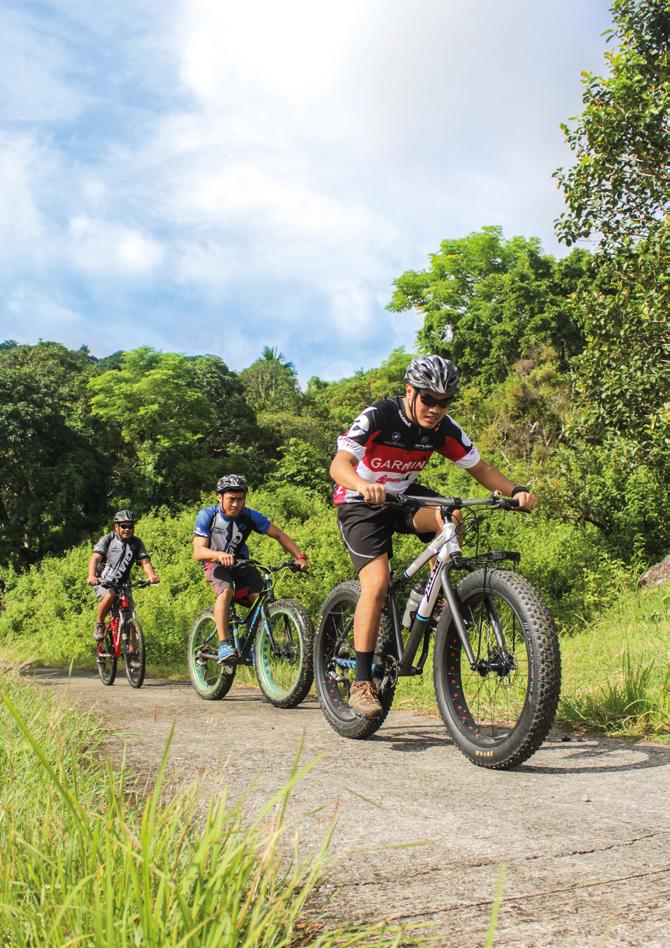


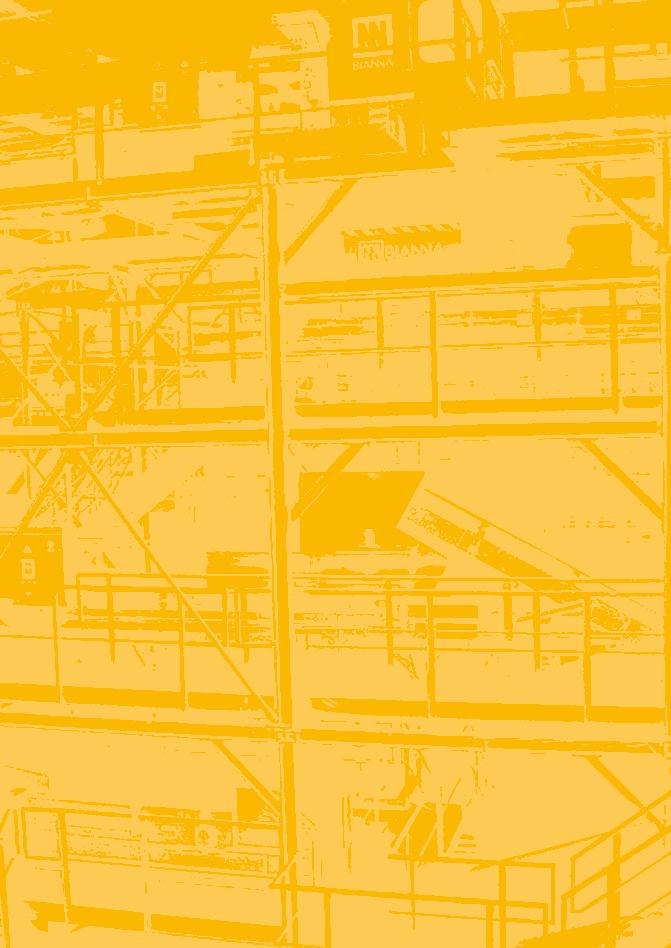
In April, OTWO went to Girona, Catalunya and met with Bianna Recycling, a global provider of top of the range recycling equipment and waste treatment plant installation, to learn more about what the company offers their clients and the range of heavy recycling equipment they supply.
As a multinational leader in waste treatment equipment, Bianna Recycling is a specialist in all aspects of the design and build of recycling and treatment plant setup. Their services include the design, manufacture, distribution and installation of heavy treatment equipment, entire treatment plant builds and other turnkey projects. They also offer consulting, engineering and maintenance services.
Established in 1990, Bianna has experienced more than 30 years of progress and advancements in the world of recycling. As an early adopter of waste treatment and management, the company witnessed the sector’s evolution, from its beginnings, when it was an underused and unexplored aspect of waste management, until now when it is considered a vital part of the environmental sector.
Bianna has summarised its purpose as: ‘to gene-
En abril, OTWO viajó a Girona, Cataluña, y se reunió con Bianna Recycling, un proveedor global de equipos de reciclaje de alta gama y de instalación de plantas de tratamiento de residuos, para aprender más sobre lo que la empresa ofrece a sus clientes y la gama de equipos de reciclaje pesado que suministran. Como líder multinacional en equipos de tratamiento de residuos, Bianna Recycling es especialista en todos los aspectos del diseño y la construcción de plantas de reciclaje y tratamiento. Sus servicios incluyen el diseño, la fabricación, la distribución y la instalación de equipos de tratamiento pesados, la construcción de plantas de tratamiento completas y otros proyectos llave en mano. También ofrecen servicios de consultoría, ingeniería y mantenimiento. Fundada en 1990, Bianna ha experimentado más de 30 años de progreso y avances en el mundo del reciclaje. Como pionera en el tratamiento y la gestión de residuos, la empresa ha sido testigo de la evolución del sector, desde sus inicios, cuando era un aspecto infrautilizado e inexplorado de la gestión de residuos, hasta ahora, cuando se considera una parte vital del sector medioambiental.

rate value through the reduction of the environmental impact of waste and ensure the sustainability of the planet’, with a company mission to: ‘design, manufacture and supply high-quality facilities, equipment and services for solid waste treatment plants, providing differentiation and economic profitability in our proposals’.
Over the last 30 years, Bianna has supplied, designed and built more than 200 treatment plants worldwide. Their specialist industrial and engineering knowledge and experience have seen the company grow to a 40,000 square metre production centre that employs over 100 workers.
This vast experience has led Bianna to become one of the national and international leaders in the engineering, design and manufacture of waste management and treatment equipment and solutions. And due to their industrial capacity, they guarantee the supply of suitable facilities for processing everything from urban, construction, industrial, biomass and metal waste.
Working directly with clients, they can offer comprehensive and tailor-made solutions to suit their needs. Depending on requirements, Bianna can supply carefully designed key machines and equipment, expert advice, rental offers, installations, and a full range of after-sale services to suit customer needs. This end-to-end service has distinguished them as market leaders with an international benchmark in design and engineering.
What differentiates Bianna is the variety and quality of key machines they offer, which cover all aspects of waste treatment and management needs. By surveying the needs of the client and their waste requirements, Bianna can design and equip a treatment plant that serves the area efficiently and guarantees profitability.
Bianna Recyclings’ range of machinery includes rotary screes, ballistic separators, vacuum systems, bag openers, conveyor belts and mobile machinery and the company provides specially designed and engineered technological solutions for waste treatment areas such as:
- Municipal Solid Waste (waste resulting from domestic and business activities of cities and towns).
- Biological Treatment (biodegradable products from municipal waste).
Bianna ha resumido su propósito como: «generar valor a través de la reducción del impacto medioambiental de los residuos y garantizar la sostenibilidad del planeta», con una misión empresarial para: «diseñar, fabricar y suministrar instalaciones, equipos y servicios de alta calidad para plantas de tratamiento de residuos sólidos, aportando diferenciación y rentabilidad económica en nuestras propuestas».
En los últimos 30 años, Bianna ha suministrado, diseñado y construido más de 200 plantas de tratamiento en todo el mundo. Sus conocimientos y experiencia en ingeniería e industria especializada han hecho que la empresa crezca hasta contar con un centro de producción de 40.000 metros cuadrados que emplea a más de 100 trabajadores.
Esta amplia experiencia ha llevado a Bianna a convertirse en uno de los líderes nacionales e internacionales en ingeniería, diseño y fabricación de equipos y soluciones de gestión y tratamiento de residuos. Y gracias a su capacidad industrial, garantizan el suministro de instalaciones adecuadas para procesar desde residuos urbanos, de la construcción, industriales, de biomasa y metálicos.
Trabajando directamente con los clientes, pueden ofrecer soluciones completas y a medida que se adapten a sus necesidades. En función de los requisitos, Bianna puede suministrar máquinas y equipos clave cuidadosamente diseñados, asesoramiento experto, ofertas de alquiler, instalaciones y una gama completa de servicios posventa que se adaptan a las necesidades del cliente. Este servicio integral les ha distinguido como líderes del mercado con una referencia internacional en diseño e ingeniería.
Lo que diferencia a Bianna es la variedad y calidad de las máquinas clave que ofrecen, que cubren todos los aspectos de las necesidades de tratamiento y gestión de residuos. Estudiando las necesidades del cliente y sus requisitos en materia de residuos, Bianna puede diseñar y equipar una planta de tratamiento que sirva a la zona de forma eficiente y garantice la rentabilidad.
La gama de maquinaria de Bianna Recyclings incluye cribas rotativas, separadores balísticos, sistemas de vacío, abridores de bolsas, cintas transportadoras y maquinaria móvil, y la empresa ofrece soluciones tecnológicas especialmente diseñadas y concebidas para áreas de tratamiento de residuos como:
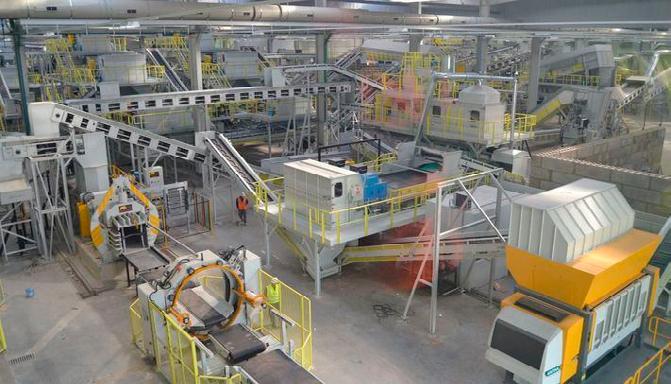

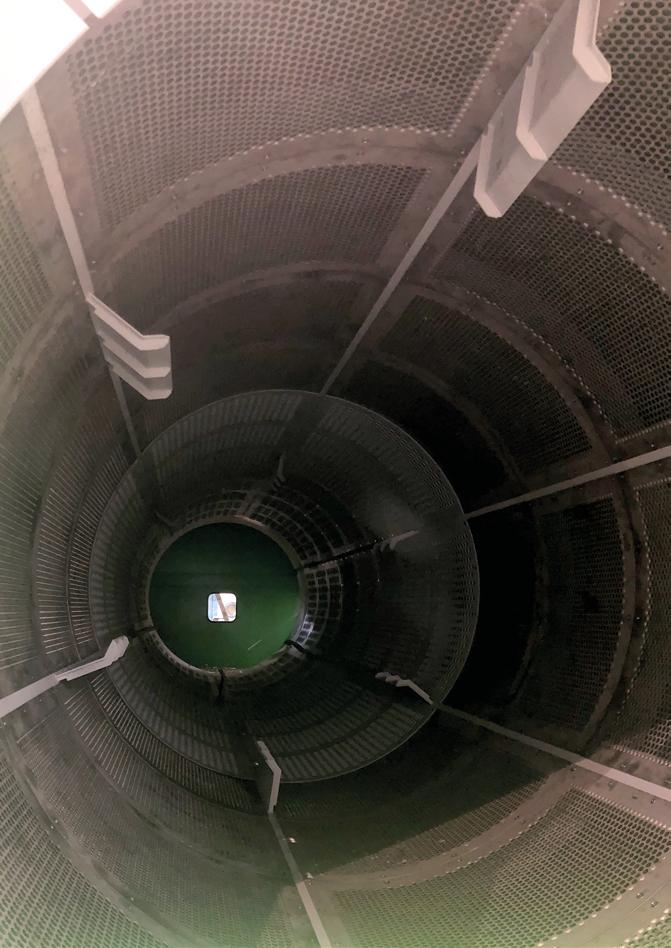

- Composting Covertech (biological treatment which obtains a decomposition degree suitable enough to achieve high-quality compost and bio-stabilized material).
- BC Covertech (technological solution for the treatment of biodegradable waste to convert it into alternative fuels).
- Light packaging (recovery of recyclable materials such as polymers, tetra bricks, cardboard, paper and Ferrous /non-ferrous metal to reduce the amount of rejected material sent to the landfill).
- Commingled facilities (dry recyclable materials plants to recover the recyclable fractions of materials such as glass, paper and cardboard to reduce the amount sent to the landfill).
Over the last 20 years, Bianna Recycling has successfully opened plants and supplied specialist machinery and equipment in more than 200 locations worldwide, including in Spain, the UK, Portugal, France, Italy, Turkey, Brazil, India, Philippines, Australia and South Korea.
Over the past few years, there has been an increase in start-ups and companies launching services and products with the environment in mind, from solar panel installation to plant-based food options, biodegradable products and zero-waste alternatives. These business models not only make economic sense as more and more consumers attempt to make better choices, but they fit into a sustainable circular economic model.
Countries such as the Netherlands are, as we speak, starting the transition towards a circular economy and aim to be 100% circular by 2050. Advocates of this model are calling on governments and businesses to adopt circular economic practices, which could ultimately lead to a worldwide system that eliminates waste, drastically reduces greenhouse gas emissions and preserves the natural environment.
Waste is one of the biggest issues facing the planet. Since the industrial revolution, we have consumed too many resources and disposed of them without a second thought. In 2020, the EU produced 225.7 million tonnes of municipal solid waste, which does not include waste from other sources such as agriculture, construction and big industry.
- Residuos sólidos urbanos (residuos resultantes de las actividades domésticas y empresariales de las ciudades y pueblos)
- Tratamiento biológico (productos biodegradables a partir de residuos municipales)
- Composting Covertech (tratamiento biológico que obtiene un grado de descomposición lo suficientemente adecuado para conseguir un compost de alta calidad y material bioestabilizado)
- BC Covertech (solución tecnológica para el tratamiento de residuos biodegradables para convertirlos en combustibles alternativos)
- Envases ligeros (recuperación de materiales reciclables como polímeros, tetra bricks, cartón, papel y metales ferrosos/no ferrosos para reducir la cantidad de material rechazado enviado al vertedero).
- Instalaciones mixtas (plantas de materiales reciclables en seco para recuperar las fracciones reciclables de materiales como el vidrio, el papel y el cartón para reducir la cantidad enviada al vertedero)
En los últimos 20 años, Bianna Recycling ha abierto con éxito plantas y suministrado maquinaria y equipos especializados en más de 200 lugares de todo el mundo, entre ellos España, Reino Unido, Portugal, Francia, Italia, Turquía, Brasil, India, Filipinas, Australia y Corea del Sur.
En los últimos años ha aumentado el número de empresas que lanzan servicios y productos pensando en el medio ambiente, desde la instalación de paneles solares hasta las opciones de alimentos de origen vegetal, los productos biodegradables y las alternativas de cero residuos. Estos modelos de negocio no solo tienen sentido desde el punto de vista económico, ya que cada vez son más los consumidores que intentan hacer mejores elecciones, sino que encajan en un modelo económico circular sostenible.
Países como los Países Bajos están, mientras hablamos, iniciando la transición hacia una economía circular y aspiran a ser 100% circulares en 2050. Los defensores de este modelo piden a los gobiernos y a las empresas que adopten prácticas económicas circulares, lo que podría conducir en última instancia a un sistema mundial que elimine los residuos, reduz-
When it comes to waste, the circular economic model could ensure that everything we make and use is biodegradable or can be recycled and repurposed again and again for as long as possible. Some materials, like metals, can be recycled and reused almost indefinitely.
As an integral part of a circular economy, installing efficient and effective recycling facilities and ensuring the efficient reuse of those materials should be at the top of local and national government agendas.
Companies like Bianna offer the tools, experience and know-how to help cities transition toward this model. An increase in local recycling facilities and more stringent recycling policies could significantly reduce the amount of waste we produce and ensure that more materials are recycled.
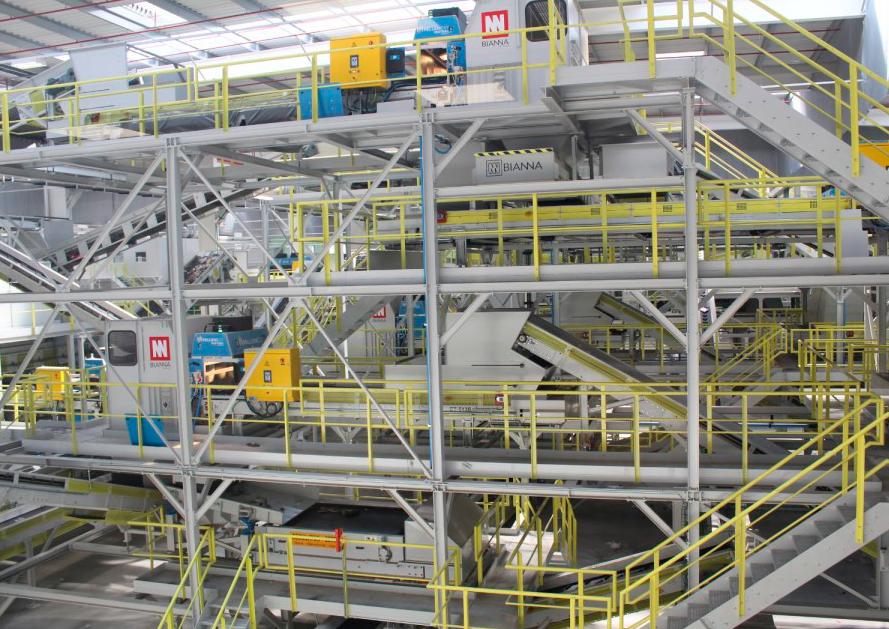
ca drásticamente las emisiones de gases de efecto invernadero y preserve el entorno natural.
Los residuos son uno de los mayores problemas a los que se enfrenta el planeta. Desde la revolución industrial, hemos consumido demasiados recursos y nos hemos deshecho de ellos sin pensarlo dos veces. En 2020, la UE produjo 225,7 millones de toneladas de residuos sólidos urbanos, lo que no incluye los residuos de otras fuentes como la agricultura, la construcción y la gran industria.
En cuanto a los residuos, el modelo económico circular podría garantizar que todo lo que fabricamos y utilizamos sea biodegradable o pueda reciclarse y reutilizarse una y otra vez durante el mayor tiempo posible. Algunos materiales, como los metales, pueden reciclarse y reutilizarse casi indefinidamente.
Como parte integrante de una economía circular, la instalación de instalaciones de reciclaje eficientes y eficaces y la garantía de la reutilización eficiente de esos materiales deberían ocupar un lugar destacado en las agendas de los gobiernos locales y nacionales.
Empresas como Bianna ofrecen las herramientas, la experiencia y los conocimientos necesarios para ayudar a las ciudades en su transición hacia este modelo. Un aumento de las instalaciones de reciclaje locales y unas políticas de reciclaje más estrictas podrían reducir significativamente la cantidad de residuos que producimos y garantizar que se reciclen más materiales.

Manifestaciones de un organismo vivo en sus tres años de existencia

The rosto is a traditional dish of Genoese cuisine that they bring to Gibraltar with their first settlements, from the sixteenth century. It is known that, after the Treaty of Utrecht, about thirty families of Genoese stayed in the Rock, mostly fishermen who lived in Catalan Bay. This population increased with the arrival of new Genoese emigrants -mostly men- to replace the Spanish labor force that, for the most part, had to flee after the loss of Gibraltar, taking refuge in what would be the founded city of San Roque. A few years later, in the Census of 1725, they were already the most numerous community, and they continued to be so in those carried out in 1753 and 1776, although in the latter they were already counted as “Catholics” together with the Spanish and Portuguese, as opposed to British (Anglicans) and Jews. This grouping of the population by religion is important because it tells us how these beliefs were shaping different social communities in the Rock, which were not very permeable to each other. It became common for male emigrants to seek Catholic wives in the nearby Spanish region. This meant that the cultural exchange - also of recipes - spread to both sides of the border, in a family network that is still preserved. These mixed marriages also explain the remarkable survival of Genoese surnames, by successive transmissions of the first paternal surname, in spite of the fact that the population of this origin was diminishing.
Unlike the city of Cadiz, which continued to receive new waves of emigrants directly from the terri-
El rosto es un plato tradicional de la cocina genovesa que éstos llevan a Gibraltar con sus primeros asentamientos, a partir del siglo XVI. Se tienen noticias de que, tras el Tratado de Utrech, unas treinta familias de genoveses se quedaron en el Peñón, la mayoría pescadores que habitaban Catalan Bay. Esta población aumentó con la llegada de nuevos emigrantes genoveses –la mayoría hombres- para suplir la mano de obra española que, en su mayor parte, debió huir tras la pérdida de Gibraltar, refugiándose en lo que sería la fundada ciudad de San Roque. Pocos años después, en el Censo de 1725, ya eran la comunidad más numerosa, y lo siguieron siendo en los que se realizaron en 1753 y 1776, aunque en este último ya se contaban como «católicos» junto a los españoles y portugueses, en contraposición a británicos (anglicanos) y judíos. Esta agrupación de la población por religiones es importante porque nos informa de cómo estas creencias fueron conformando en el Peñón distintas comunidades sociales, poco permeables entre sí. Se hizo frecuente que los varones emigrados buscaran esposa católica en la cercana comarca española. Lo que supuso que el intercambio cultural –también de las recetas- se propagase a ambos lados de la frontera, en un entramado familiar que aún se conserva. Estos matrimonios mixtos explican también la notable pervivencia de apellidos genoveses, por sucesivas transmisiones del primer apellido paterno, a pesar de que fue disminuyendo la población de este origen.
A diferencia de la ciudad de Cádiz, que siguió re-
tories of the former Republic of Genoa until the late nineteenth century, in Gibraltar this emigration was interrupted after the Napoleonic invasion, to be replaced by Spanish workers who were arriving, first as refugees from that war and then as salaried workers, already with strong restrictions to stay overnight on the Rock since the mid-nineteenth century. Thus, the old Genoese recipe, without new emigrants to bring it as it was still done in its place of origin, followed in Gibraltar a local evolution of its own.
Two problems arise when looking for the oldest reference of this recipe. On the one hand, the non-existence of specifically Genoese recipe books until the end of the 19th century. With the singularity of France, which is a century ahead of this trend, nationalist cookbooks began to be published in different European countries from the second half of the 18th century, as another expression of the idealized patriotism of Romanticism, when these historical territories —especially those that were already stateless— began a reconstruction of their folklore as a banner of identity. Although in recipe books of previous centuries we find some dishes and recipes specific to each place, this cuisine was mostly globalized in each civilization by the food standards of the great religions. On the one hand, popular cuisine was governed by an elementary sense of survival, which, by force, used the same cheap ingredients everywhere. On the other hand, haute cuisine, commanded by a few illustrious chefs who migrated from one country to another in the service of whoever paid them best, produced an interchangeable and cosmopolitan recipe book, which was easily codified as a representation of power by its wealthy recipients.
The second problem, related to the previous one, is that these older recipe books - and the first Genoese ones - are written in Italian. In that language, rosto is translated as arrosto, also as in the original Genoese name for two different meat preparations, roast and stew. With these two meanings, it appears in some of the earliest Genoese-Italian dictionaries. In Giovanni Casaccia’s (1851) it is roast and “cooking that is done without the aid of water”; that is, a stew. In Angelo Paganini’s (1857) it differentiates between arrosto as a roast and arrosto stracotto, as “meat stewed in one piece and cooked for a long time”. The rosto preserved in Gibraltar and La Linea is a stew.
cibiendo nuevas oleadas de emigrantes directamente desde los territorios de la antigua República de Génova hasta finales del siglo XIX, en Gibraltar esa emigración se interrumpió a partir de la invasión napoleónica, al sustituirse por los trabajadores españoles que fueron llegando, primero como refugiados de esa guerra y luego como asalariados, ya con fuertes restricciones para pernoctar en el Peñón desde mediados del XIX. Así, la antigua receta genovesa, sin nuevos emigrantes que la trajesen tal como aún se hacía en su lugar de origen, siguió en Gibraltar una evolución local propia.
Surgen dos problemas a la hora de buscar la referencia más antigua de esta receta. Por una parte, la inexistencia de recetarios específicamente genoveses hasta finales del XIX. Con la singularidad de Francia, que se adelanta un siglo a esta tendencia, comenzaron a publicarse libros de cocina nacionalista en distintos países europeos a partir de la segunda mitad del XVIII, como otra expresión del patriotismo idealizado del Romanticismo, cuando estos territorios históricos —en especial los que estaban ya sin Estado— comienzan una reconstrucción de su folclore como bandera de identidad. Aunque en recetarios de siglos anteriores encontramos algunos platos y recetas propias de cada lugar, esa cocina estaba mayoritariamente globalizada en cada civilización por las normas alimentarias de las grandes religiones. Por una parte, la cocina popular se regía por un elemental sentido de supervivencia que, por fuerza, utilizaba en todas partes los mismos ingredientes baratos. Por otra, en la alta cocina, comandada por unos pocos ilustres cocineros que migraban de un país a otro al servicio de quien mejor les pagara, se realizaba un recetario intercambiable y cosmopolita, que era fácilmente codificado como representación del poder por sus ricos destinatarios. El segundo problema, relacionado con el anterior, es que esos recetarios más antiguos – y también los primeros genoveses- están escritos en italiano. En ese idioma, rosto se traduce como arrosto, también como en el original nombre genovés para referirse a dos preparaciones distintas de la carne, el asado y el guiso. Con esos dos significados aparece en algunos de los primeros diccionarios de genovés-italiano. En el de Giovanni Casaccia (1851) es asado y «cocción que se hace sin la ayuda del agua»; es decir, un esto-


However, if we review some of the great historical Italian recipe books, such as that of Bartolomé Scappi (1570) or that of Cesare Evitascandalo (1609), we can see that, even with the diversity of successive techniques used in Renaissance cuisine, the published recipes for arrosto are fundamentally roasts.
The first clear reference to this stewed rosto appears in a banquet organized by Prince G. Andrea Doria Pamphili to entertain the then Grand Duke of Lorraine and Tuscany. Planned to be held at the Genoese Palazzo di Fassolo in April 1739, it was not held in the end due to the conflictive political situation in Europe. Paolo Lingua, in his book La cucina dei genovesi (2014), details the menu of that banquet which, along with several dishes of international cuisine, includes a “fricandò (arresto in casseruola)”. It is likely that, given the political interest of that banquet, identifying this rosto stewed in casserole as fricandò, which is a different French recipe, although with similar technique and ingredients (a veal stew with mushrooms), is due to the utility that, as a diplomatic tool of prestige, that cuisine already had vis-à-vis the still underappreciated popular cuisine. Both recipes include mushrooms that, according to Lingua, are “symbol and myth” of Genoese cuisine, where agriculture had little influence due to the limited extension of cultivated land.
In the vernacular poem Ricetta per fà i raviêu, by the Genoese Martino Piaggio (1774-1843), the tocchetto — short for tocco— appears as a veal sauce to season ravioli with brains, sausages and borage. This same ravioli filling, with a description of how to prepare the sauce, appears in a manuscript of the musician Niccolò Paganini, also Genoese and contemporary of the poet, preserved in the Library of Congress of the United States. Although it is not dated, it is thought that he must have written it a few years before his death in 1840. This is the recipe for the sauce:
For one and a half pounds of flour, two pounds of good lean meat to make the gravy. Put into the frying pan a little butter, then a small quantity of finely chopped onions, and brown lightly. Put in the meat and cook until it begins to take on a little color. For a thick sauce, take a few pinches of flour and sprinkle it little by little into the meat juices to brown it; then take
fado. En el de Angelo Paganini (1857) se diferencia entre el arrosto como asado y el arrosto stracotto, como «carne guisada en una sola pieza y cocida durante mucho tiempo». El rosto que se conserva en Gibraltar y en La Línea es un estofado. Pero, si repasamos algunos de los grandes recetarios históricos italianos, como el de Bartolomé Scappi (1570) o el de Cesare Evitascandalo (1609), apreciamos que, aún con la diversidad de técnicas sucesivas que utiliza la cocina renacentista, las recetas publicadas de arrosto son fundamentalmente asados.
La primera referencia clara de este rosto guisado aparece en un banquete organizado por el Príncipe G. Andrea Doria Pamphili para agasajar al entonces Gran Duque de Lorena y Toscana. Previsto para realizar en el genovés Palacio de Fassolo en abril de 1739, finalmente no se celebró por la conflictiva situación política europea. Paolo Lingua, en su libro La cucina dei genovesi (2014), detalla el menú de ese banquete que, junto a varios platos de cocina internacional, incluye un «fricandò (arresto in casseruola)». Es probable que, dado el interés político de ese banquete, identificar este rosto guisado en cazuela como fricandò, que es una receta francesa distinta aunque con técnica e ingredientes similares (un estofado de ternera con setas), se deba a la utilidad que, como herramienta diplomática de prestigio, ya tenía esa cocina frente a la aún poco apreciada cocina popular. Ambas recetas incluyen setas que, según Lingua, son «símbolo y mito» de la cocina genovesa, donde la agricultura propia influyó poco por la escasa extensión que tenían sus terrenos cultivados.
En el poema vernáculo Ricetta per fà i raviêu, del genovés Martino Piaggio (1774-1843), aparece el tocchetto —diminutivo de tocco— como salsa de carne de ternera para condimentar unos raviolis de sesos, salchichas y borrajas. Este mismo relleno de raviolis, con descripción de cómo preparar su salsa, aparece en un manuscrito del músico Niccolò Paganini, también genovés y coetáneo del poeta, conservado en la Biblioteca del Congreso de Estados Unidos. Aunque no está fechado, se piensa que debió escribirlo pocos años antes de su muerte en 1840. Esta es la receta de la salsa:
Para una libra y media de harina, dos libras
some tomatoes, dissolved in water, pour a little water into the flour in the pan and mix well to dissolve. Finally, add some finely chopped and crushed dried mushrooms, and that’s the meat sauce.
A more complete recipe, Sugo d’arrosto di vitelo (Tôcco de rôsto de vitella), was published in the first book of this national cuisine, La Cuciniera Genovese, by Gio Batta Ratto (1863) which, from its third edition, is also signed by his son Giovanni. It is included in the chapter on sauces or dips. I translate it from the edition I have been able to consult (8th ed., 1893). I keep - as in its Gibraltarian evolution - the Genoese name of rosto:
Veal rosto sauce. Take a good piece of veal from the leg, put it on the fire in a saucepan with lard or veal fat, an onion cut into quarters, salt and carrots, let it take a nice golden color, turning it on all sides and sprinkling it, three times, with half a glass of white wine; when it is well browned add three or four peeled tomatoes, purged of seeds, and cut into small pieces (in the absence of these, a tablespoon of tomato concentrate dissolved in a little hot water) and some mushrooms, if any fresh; and cook for a quarter of an hour.
Finally pour enough broth for the amount of sauce you need, adding a tablespoon of toasted flour, and cook everything over low heat. Once it is cooked, sift the sauce and return it to the fire, seasoning then.
With a similar preparation, the book includes another sauce with beef, Sugo d’arrosto di manzo (Tôcco de rôsto de manzo), which is made like the previous one with the addition of “some aromatic herb (flavoring), such as carrot, softened dried mushrooms, etc.” The recipe is thus open to an infinite number of variations. Paganini’s dictionary lists some of the herbs used at that time in Genoa as culinary condiments: parsley, borrana (comfrey), sorrel, mint, mint, sage, oregano, thyme, savory, etc.
In the next published Genoese recipe book, La vera cuciniera genovese facile ed economica (1865), by Emanuele Rossi, the recipe changes the carrot for
de buena carne magra para hacer la salsa. Poner en la sartén un poco de mantequilla, luego una pequeña cantidad de cebollas picadas finamente, y dorar ligeramente. Ponga la carne y cocine hasta que comience a tomar un poco de color. Para una salsa espesa, tome unas pizcas de harina y espolvoréelas poco a poco en los jugos de la carne para dorarla; luego tome algunos tomates, disueltos en agua, vierta un poco de agua en la harina en la sartén y mezcle bien para disolver. Finalmente, agregue algunos champiñones secos finamente picados y machacados, y esa es la salsa de carne.
Una receta más completa, el Sugo d´arrosto di vitelo (Tôcco de rôsto de vitella), se publicó en el primer libro de esta cocina nacional, La Cuciniera Genovese, de Gio Batta Ratto (1863) que, a partir de su tercera edición, firma también su hijo Giovanni. Se incluye dentro del capítulo de las salsas o mojes. La traduzco de la edición que he podido consultar (8ª ed., 1893). Conservo –como en su evolución gibraltareña- el nombre genovés de rosto:
Salsa rosto de ternera. Tomar un buen trozo de ternera de la pierna, ponerlo al fuego en un cazo con manteca o grasa de ternera, una cebolla cortada en cuartos, sal y zanahorias, dejar que tome un bonito color dorado, dándole vueltas por todos lados y rociándolo, tres veces, con medio vaso de vino blanco; cuando esté bien dorado añadir tres o cuatro tomates pelados, purgados de pepitas, y cortados en trozos pequeños (a falta de éstos, una cucharada de tomate concentrado disuelta en un poco de agua caliente) y unas setas, si las hay frescas; y cocinar durante un cuarto de hora. Finalmente vierta suficiente caldo para la cantidad de salsa que necesite, añadiendo una cucharada de harina tostada, y cocine todo a fuego lento. Una vez que esté cocido, tamizar la salsa y volver a ponerla al fuego, sazonando entonces.
Con una preparación similar, el libro incluye otra salsa con carne de vaca, Sugo d´arrosto di manzo (Tôcco de rôsto de manzo), que se realiza como la
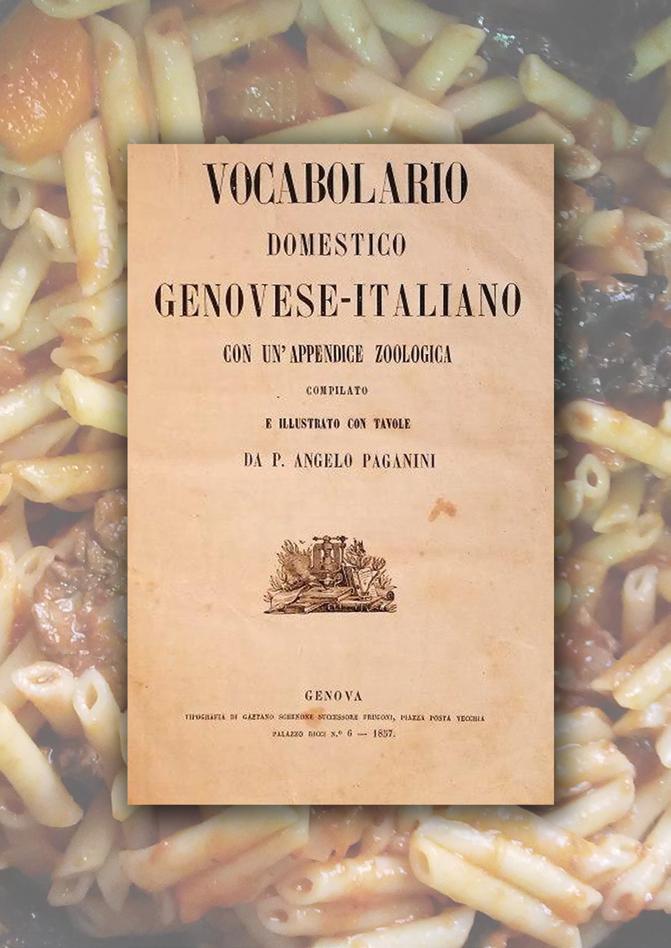
celery in the fried onion and meat sauce at the beginning. This second cookbook expands the Ratto’s book, with additions of his own and others’, although it basically reproduces the Ratto’s recipes. It clarifies, as a novelty, the elaboration of the tomato preserve, to which both recipe books allude: they are crushed, boiled, drained in a colander and the pulp, with some oil, is concentrated again over the fire. In these two recipe books, in addition to its use with different meats, the sauce is used to season different pastas (macaroni, ravioli, lasagne or a Genoese pasta such as corzettis). I translate the Maccheroni arrosto from the first book:
Rosto of macaroni. Boil a kilo and a half of macaroni and, halfway through cooking, remove them with a skimmer, letting them drain well. Put them in the frying pan, and season them all over with the sauce [rosto de vaca] and plenty of Parmesan cheese, sprinkled here and there. Then put some pieces of sausage the size of a small walnut, previously coated in the same grated cheese. Cook them again, with heat from above and below, and when they form a crust, serve them in the same pan at the table.
If we compare it with current Italian recipe books, we can see that the recipe is still made in the same way as it was then. The name of the sauce has been abbreviated and is popularly known as tòcco, being easy to find, already cooked, in many butcher’s shops in Genoa today. Also from there, as tuco, this meat and tomato sauce migrated to Argentina, Uruguay and Chile.
Its name has also been simplified in the current Gibraltarian recipe, here to rosto. This sauce is still used to season pasta dishes, especially macaroni, which are cooked separately and the sauce is only added at the end, or presented separately. It is still a sauce, of the type the Italians call ragù, where the vegetable (tomato) is the ingredient that binds the other substances. In the recipe for rosto published in the book Gibraltar’s Favorite Recipes, [circa 1970] by the Gibraltar League of Hospital Friends, the ratio of quantities between the meat (two and a quarter kilos) and the tomatoes (a quarter of a kilo), similar
anterior con el añadido de “alguna hierba aromática (saborizante), como zanahoria, setas secas ablandadas, etc.”. La receta se abre así a infinidad de variantes. En el diccionario de Paganini se enumeran algunas de esas hierbas utilizadas entonces en Génova como condimentos culinarios: perejil, borrana (consuelda), acedera, menta, hierbabuena, salvia, orégano, tomillo, ajedrea, etc.
Abundando en la diversidad de ingredientes que la salsa admite, en el siguiente recetario genovés publicado, La vera cuciniera genovese facile ed económica (1865), de Emanuele Rossi, la receta cambia la zanahoria por apio en el sofrito de cebolla y carne del principio. Este segundo recetario amplía el libro de los Ratto, con añadidos de cosecha propia y ajena, aunque reproduce en lo fundamental las recetas de aquellos. Aclara, como novedad, la elaboración entonces de la conserva de tomate, a la que ambos recetarios aluden: se trituran, hierven, se dejan escurrir en colador y, esa pulpa con algo de aceite, se vuelve a concentrar sobre el fuego. En estos dos recetarios, además de su empleo con diferentes carnes, la salsa condimenta distintas pastas (macarrones, raviolis, lasañas o una tan genovesa como los corzettis). Traduzco la de los Maccheroni arrosto del primer libro:
Rosto de macarrones. Poner a hervir un kilo y medio de macarrones y, a media cocción, extraerlos con una espumadera, dejándolos escurrir bien. Ponerlos en la sartén, y condimentarlos por toda su superficie con la salsa [rosto de vaca] y abundante queso parmesano, esparcido por aquí y allá. Se ponen entonces unos trozos de salchicha del tamaño de una nuez pequeña, rebozados antes en el mismo queso rallado. Volverlos a poner a cocinar, con calor por arriba y por abajo, y cuando formen costra, servirlos en esa misma sartén en la mesa.
Si la comparamos con recetarios italianos actuales vemos que la receta se sigue realizando igual que entonces. El nombre de la salsa se ha abreviado y se conoce popularmente como tòcco, siendo fácil de encontrar, ya cocinada, en numerosas carnicerías actuales de Génova. También desde allí, como tuco, emigró esta salsa de carne y tomate a Argentina, Uruguay y Chile.

to that suggested in the first Genoese recipes, stands out above all. The meat is still a cut of leg (the naughty or contra) of veal or beef. The sauce - in lard - has been enriched with other vegetables (celery, turnip) and spices (cloves, peppercorns), keeping the onion, carrots and dried mushrooms. In other versions of the Gibraltarian recipe, peppers and garlic are added to the sauce, spices such as paprika or curry, or Dutch cheese is grated on the plate. These are examples of an evolution of the recipe, which incorporates ingredients from the market and the cuisines it encounters. As part of that same acclimatization, the recipes also adapt to what is available. In the rosto published in Justin Bautista’s recipe book, 76 Mama Lotties, recipes from Gibraltar (2015), the recipe allows the use of beef or chicken and has simplified the sofrito to onions, garlic and carrots, leaving mushrooms as optional. And, most significantly, the quantities of meat (500 grams) and tomato (400 grams) tend to be balanced. It is a change to be observed in the evolution of the recipe in Gibraltar. With the same sense of domestic economy, in La Línea, on the other side of the border, the most frequent versions of rosto that I have found -without mushrooms- even reverse the ratio of ingredients. They have much more tomato: half a kilo or a kilo for each quarter of beef or pork, sometimes minced. But they do not become a meat in tomato, like others of the Andalusian cuisine, because they are not understood as a complete dish in itself. They still conserve, as a sign of their own identity, their use as a sauce to season macaroni. A unique sauce with a lot of history.
Igualmente se ha simplificado su nombre en la receta actual gibraltareña, aquí a rosto. Se mantiene la utilización de esta salsa para condimentar platos de pasta, especialmente macarrones, que se cuecen aparte y sólo se les añade la salsa al final, o se presentan por separado. Sigue siendo una salsa, del tipo que los italianos llaman ragús, donde la hortaliza (el tomate) es el ingrediente que liga las otras sustancias. En la receta de rosto publicada en el libro Gibraltar´s Favourite Recipes, [alrededor de 1970] por la Gibraltar League of Hospital Friends, destaca sobre todo la relación de cantidades entre la carne (dos kilos y cuarto) y los tomates (un cuarto de kilo), similar a la sugerida en las primeras recetas genovesas. La carne sigue siendo un corte de pierna (la traviesa o contra) de ternera o vaca. El sofrito –en manteca de cerdo- se ha enriquecido con otros vegetales (apio, nabo) y con especias (clavo, pimienta en grano), conservando la cebolla, las zanahorias y las setas secas. En otras versiones de la receta gibraltareña se añaden pimientos y ajo al sofrito, especias como pimentón o curry, o se le ralla queso de bola holandés, ya en el plato. Son ejemplos de una evolución propia de la receta, que incorpora ingredientes del mercado y las cocinas con las que se encuentra. Como parte de esa misma aclimatación, las recetas también se adaptan a lo disponible. En el rosto publicado en el recetario de Justin Bautista, 76 Mama Lotties, recetas de Gibraltar (2015), la receta permite usar carne de vacuno o de pollo y ha simplificado el sofrito a cebollas, ajos y zanahorias, dejando como opcionales los champiñones. Y, lo más significativo, las cantidades de carne (500 gramos) y tomate (400 gr) tienden a equilibrarse. Es un cambio a observar en la evolución de la receta en Gibraltar. Con el mismo sentido de economía doméstica, en La Línea, al otro lado de la frontera, las versiones más frecuentes de rosto que he encontrado –sin setas- llegan ya a invertir la relación de ingredientes. Llevan muchísimo más tomate: medio kilo o un kilo por cada cuarto de carne de vacuno o de cerdo, a veces picada. Pero no llegan a ser una carne en tomate, como otras de la cocina andaluza, porque no se entienden como plato completo en sí mismo. Aún conservan, como seña de identidad propia, su uso como salsa para condimentar los macarrones. Una salsa singular con mucha historia.
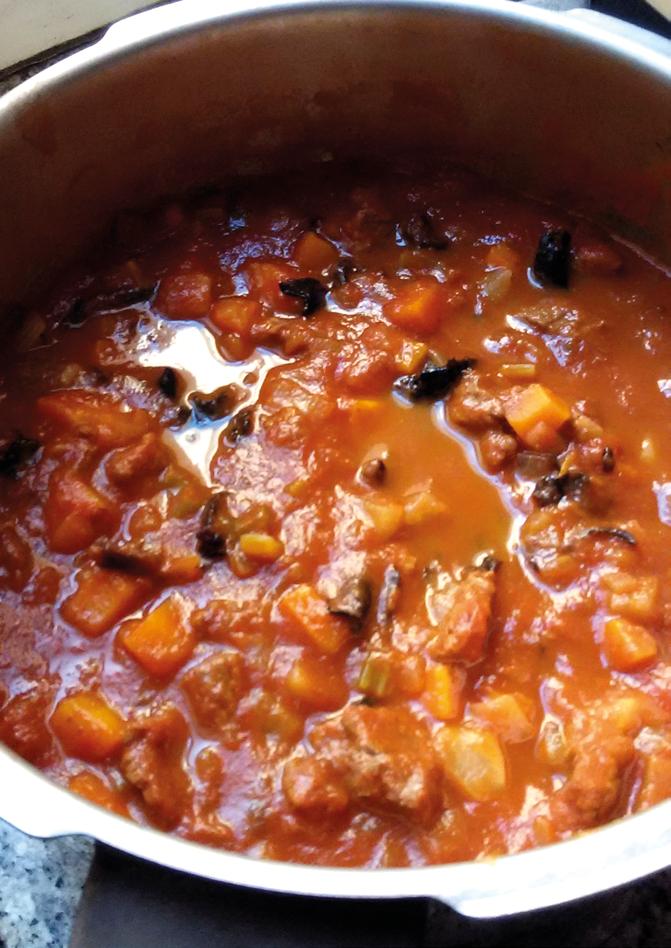
AISCURRI, M. y DE CARIA, A. 2017-2020. Indagaciones en torno al tuco. On the blog “El recopilador de sabores”. [Consultation: March 4, 2022].
Available: https://elrecopiladordesabores.blogspot. com/2020/06/
BAUTISTA, J. 2015. 76 Mama Lotties, recetas de Gibraltar. Gibraltar: CreateSpace Independent Publishing Platform.
CASACCIA, G. 1851. Vocabolario genovese-italiano compilato per la prima volta. Génova: Tipografía dei Fratelli Pagano.
Available: https://blogs.loc.gov/music/2016/11/ food-for-thought-recipes-in-the-collections/ Gibraltar´s Favourite Recipes. ca. 1970. Gibraltar: Gibraltar League of Hospital Friends.
GONZÁLEZ CRUZ, D. 2021. La religión católica en Gibraltar y Menorca en el siglo XVIII: modelos de coexistencia durante el dominio británico. Ohm: Obradoiro de historia moderna, 30, pp. 375-401
HILLS, G. 1982. Las poblaciones de Gibraltar a través de la historia. Revista Estudios Regionales, 9, pp. 185-195.
LINGUA, P. 2014. La cucina dei genovesi: Storia e ricette. Mulazzo: Orme Editore LÓPEZ AYALA, I. 1782. Historia de Gibraltar. Madrid: Antonio de Sancha.
PAGANINI, Á. 1857. Vocabolario domestico Genovese-Italiano con un´ apéndice zoologica. Génova: Tipografía de Gaetano Schenone successore Frugoni
PAGANINI, N. ca. 1840. Receta manuscrita. En: MILLER, C. Food for Thought: Recipes in the Collections. Web Library of Congress. [Consultation: March 2, 2022].
PIAGGIO, M. 1864. Poesie. 2ª ed. Génova: Tipografía dei Fratelli Pagano.
RATTO, G. B. y RATTO, G. 1893. La Cuciniera Genovese. 8ª ed. Génova: Tipografía dei Fratelli Pagano. ROSSI, E. 2019. La vera cuciniera genovese facile ed económica. Ebook produced by Youconprint.it of the edition s/f de Mendrisio: Giovanni Prina Editore. RUIZ TORRES, M. 2017. Cocina Histórica Gaditana Cádiz: Mayi Editions.
AISCURRI, M. y DE CARIA, A. 2017-2020. Indagaciones en torno al tuco. En el blog “El recopilador de sabores”. [Consulta: 4 de marzo de 2022].
Disponible: https://elrecopiladordesabores.blogspot.com/2020/06/
BAUTISTA, J. 2015. 76 Mama Lotties, recetas de Gibraltar. Gibraltar: CreateSpace Independent Publishing Platform.
CASACCIA, G. 1851. Vocabolario genovese-italiano compilato per la prima volta. Génova: Tipografía dei Fratelli Pagano.
Disponible: https://blogs.loc.gov/music/2016/11/ food-for-thought-recipes-in-the-collections/ Gibraltar´s Favourite Recipes. ca. 1970. Gibraltar: Gibraltar League of Hospital Friends.
GONZÁLEZ CRUZ, D. 2021. La religión católica en Gibraltar y Menorca en el siglo XVIII: modelos de coexistencia durante el dominio británico. Ohm: Obradoiro de historia moderna, 30, pp. 375-401. HILLS, G. 1982. Las poblaciones de Gibraltar a través de la historia. Revista Estudios Regionales, 9, pp. 185-195.
LINGUA, P. 2014. La cucina dei genovesi: Storia e ricette. Mulazzo: Orme Editore.
LÓPEZ AYALA, I. 1782. Historia de Gibraltar Madrid: Antonio de Sancha.
PAGANINI, Á. 1857. Vocabolario domestico Genovese-Italiano con un´ apéndice zoologica. Génova: Tipografía de Gaetano Schenone successore Frugoni PAGANINI, N. ca. 1840. Receta manuscrita. En: MILLER, C. Food for Thought: Recipes in the Collections. Web Library of Congress. [Consulta: 2 de marzo de 2022].
PIAGGIO, M. 1864. Poesie. 2ª ed. Génova: Tipografía dei Fratelli Pagano.
RATTO, G. B. y RATTO, G. 1893. La Cuciniera Genovese. 8ª ed. Génova: Tipografía dei Fratelli Pagano. ROSSI, E. 2019. La vera cuciniera genovese facile ed económica. Ebook realizado por Youconprint.it de la edición s/f de Mendrisio: Giovanni Prina Editore. RUIZ TORRES, M. 2017. Cocina Histórica Gaditana Cádiz: Ediciones Mayi.
See out the final days of this year’s summer season with a fun-filled Saturday with an eco-conscious twist!
OTWO are very excited to announce the first annual ECO Fest on Saturday the 24th of September 2022 at Europa Pool.
ECO Festival is all about bringing people of all ages together to have a good time and learn more about local eco-initiatives, sustainability projects and awareness campaigns.
Please come along and join OTWO, together with various local environmental organisations, for some great activities, fantastic food, promotional stalls and live music, with proceeds from the day going to GBC Open Day.
The day will start at 10:30 am, with local cycling enthusiasts and campaigners riding a cycling route to promote safer cycling on the Rock. If cycling isn’t quite your thing, you can head straight to Europa Pool to greet the cyclists as they arrive... (or be the first to jump into the pool!)
The ECO Fest will be open all day from 10:30 am to 7 pm and will include:
· Safer Cycling Awareness route from the Small Boats Harbour via Line Wall Road and on to Europa Pool
· A BBQ lunch including vegetarian and vegan options
· Live music
· A bouncy castle
· Pool access and activities
· Marquee stalls hosted by local eco organisations and businesses (TBC)
· Fundraising activities for GBC open day, including the UCM Everesting Event
· Plus, much more to be announced
The UCM Road & MTB Club Gibraltar will also be joining the ECO Festival and will spend the
day completing a unique fundraising feat! The local cycling promotion club will be ‘Everesting’ their way up the Rock to raise funds for charity.
The concept of Everesting is simple but not for the faint-hearted! The idea is for a single rider or group of riders to cycle uphill repeatedly over the course of the day until they complete a total of 8,848m – the height of Mount Everest!
UCM has decided to do Everesting a little differently and in their own style. Instead of a single rider, groups of UCM cyclists will take it in turns until they complete the 8848m climb.
Starting at Europa Pool, groups of three riders will cycle via the lighthouse, then up to the top of the Rock. They will then descend via the Moorish Castle, cycle through Flat Bastion Road, down Europa Road by the Rock Hotel and head south along Jumpers Battery back to Europa Pool; the next three cyclists will then head off and do the same route and so on.
Each ride comes to an accumulated elevation of approximately 1200m (400m per rider). The journey takes about an hour and will take about 8 trips to complete the total height of Everest.
The UCM & MTB Club hope to make this an annual event, and all the funds they raise on 24th September will go to GBC Open Day!
Tickets for the ECO Festival are available at buytickets.gi
Ticket cost: £5 per adult / £3 per child (Under 10) and includes pool and kids activities, bouncy castle, pool access, live music and stall access. Bicycle parking will also be available onsite.
Tickets available at www.buytickets.giif you would like any further information please contact us on 54001271 or email info@otwomag.com.


COAMBA manages the project “Expert in Sustainability Indicators”, framed within the 2022 call of the Empleaverde Program and co-financed by the European Social Fund (ESF) through the Empleaverde Program of the Biodiversity Foundation of the Ministry for Ecological Transition and the Demographic Challenge.
The public has begun to expect more and more information from businesses, in addition to the economic data they provide, on their potential environmental impacts, their care for the welfare of their own employees, and other socially significant issues.
Given this situation, which includes environmental degradation, resource overuse, and the current health and social crises, it is essential to train professionals with the knowledge and skills necessary to advise businesses on how to adopt a more sustainable model using objective and measurable standards like sustainability indicators.
It should be noted that the improvement of environmental sustainability is something that has a direct impact on the quality of life, which is a social benefit, and it is also important to bear in mind that the environmental impacts caused by companies can have repercussions beyond the local level.
Within this framework, the Professional Association of Graduates in Environmental Sciences of Andalusia (COAMBA) as beneficiary entity, started on April 11, 2022 the project “Expert in Sustainability Indicators”, framed within the 2022 call of the Empleaverde Program and co-financed by the European Social Fund (ESF) through the Empleaverde Program
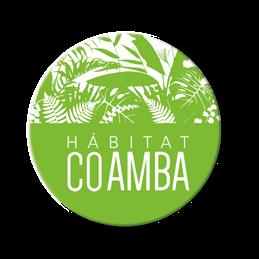
COAMBA gestiona el Proyecto “Experto/a en Indicadores de Sostenibilidad”, enmarcado dentro de la convocatoria 2022 del Programa Empleaverde y cofinanciado por el Fondo Social Europeo (FSE) a través del Programa Empleaverde de la Fundación Biodiversidad del Ministerio para la Transición Ecológica y el Reto Demográfico.
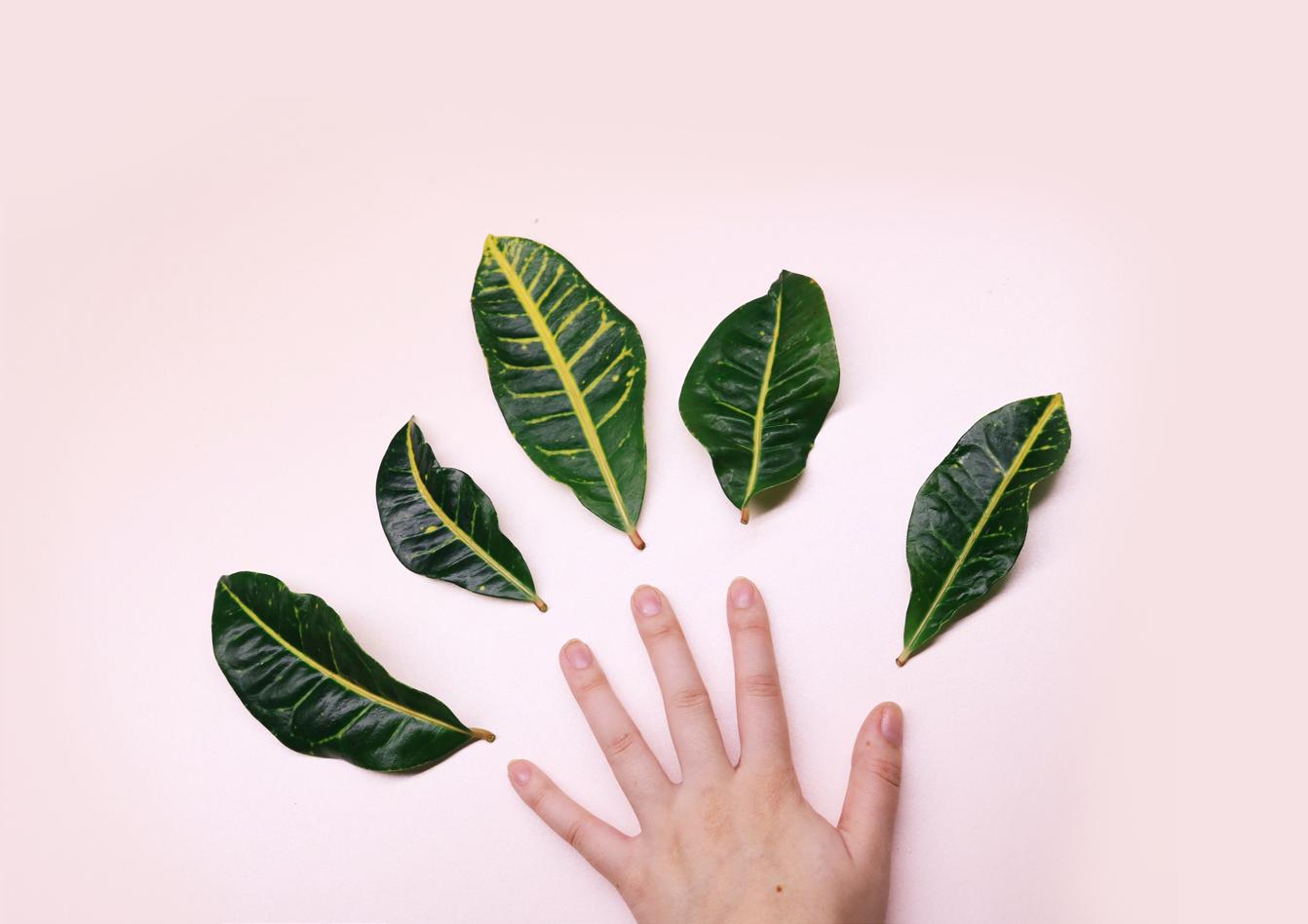
La sociedad ha comenzado cada vez en mayor medida a demandar información a las empresas, no conformándose con los datos económicos que ofrecen, sino exigiéndoles además información acerca de las posibles repercusiones medioambientales de sus actividades, de la preocupación empresarial por el bienestar de sus propios trabajadores, así como otros temas de índole social. En este contexto, unido a la degradación del medioambiente, la sobreexplotación de los recursos y la crisis tanto sanitaria como social que estamos viviendo, se hace necesaria la formación de profesionales con los suficientes conocimientos y herramientas que puedan asesorar a las organizaciones en seguir un modelo más sostenible, usando criterios objetivos y cuantificables, como son los indicadores de sostenibilidad.
Es de destacar que la mejora de la sostenibilidad ambiental es algo que repercute directamente en la calidad de vida, lo que supone un beneficio social, además es importante tener en cuenta que los impactos ambientales provocados por las empresas pueden tener repercusiones de ámbito superior al local.
En este marco, el Colegio Profesional de Licenciados y Graduados en Ciencias Ambientales de Andalucía (COAMBA) como entidad beneficiaria, dio inicio el 11 de abril de 2022 al proyecto «Experto/a en Indicadores de Sostenibilidad», enmarcado den-
of the Biodiversity Foundation of the Ministry for Ecological Transition and the Demographic Challenge.
The project was created with the aim of training unemployed people to analyze the environmental impact of the activities carried out in an organization and to be able to quantify them to enable their control and possible reduction, with the focus and search for sustainability. The “Expert in Sustainability Indicators” project is part of the “Green Economy” thematic block, Innova line, i.e. projects that experiment and test innovative solutions aimed at improving people’s employability and facilitating job creation.
This project is carried out entirely in Andalusia and comprises three mixed training actions on Sustainability Indicators in Seville, Malaga and Granada, which apart from the training includes an internship period in companies to be able to put into practice what has been learned and gain experience in the work environment, as well as two mixed counseling actions in Granada and Seville, focused on improving employability. It will be carried out for nine months (until January 2023).
The training modality will have a duration of 100 teaching hours and 100 hours of internships in companies, while the counseling part will have a duration of 25 hours. This part will work on the improvement of employability through the promotion of personal skills, preparing the participants to deal with the different situations they may face when entering the labor market and carrying out simulations of job interviews and the defense of their résumé.
This project, aimed at unemployed people, has the general objective of achieving training and quality employment. At all times it is an action co-financed by the ESF, and it is free of charge for the beneficiaries.
The aim is to train unemployed people to analyze the environmental impact of the activities carried out in an organization and to be able to quantify them to allow their control and possible reduction, with the approach and the search for sustainability.
Sustainability is consolidated as an added value within an organization, fundamental to gradually achieve the Sustainable Development Goals and the targets set in the 2030 Agenda.
In order to quantify whether a given organization is more or less sustainable, a series of indicators
tro de la convocatoria 2022 del Programa Empleaverde y cofinanciado por el Fondo Social Europeo (FSE) a través del Programa Empleaverde de la Fundación Biodiversidad del Ministerio para la Transición Ecológica y el Reto Demográfico.
El proyecto nace con el objetivo de formar a personas desempleadas para analizar la repercusión ambiental de las actividades llevadas a cabo en una organización y poder cuantificarlas para permitir su control y su posible reducción, con el enfoque y la búsqueda de la sostenibilidad. El Proyecto «Experto/a en Indicadores de Sostenibilidad», se enmarca dentro del Bloque temático «Economía verde», línea Innova, es decir proyectos que experimentan y ensayan soluciones innovadoras dirigidas a mejorar la empleabilidad de las personas y a facilitar la creación de empleo.
Este Proyecto se lleva a cabo íntegramente en Andalucía, comprende tres acciones de formación mixta sobre Indicadores de Sostenibilidad en Sevilla, Málaga y Granada, que aparte de la formación incluye un periodo de prácticas en empresas para poder poner en práctica lo aprendido y obtener experiencia en el entorno laboral, así como dos acciones de asesoramiento mixto en Granada y Sevilla, enfocados en la mejora de la empleabilidad. Se llevará a cabo durante nueve meses (hasta enero de 2023).
La modalidad de formación tendrá una duración de 100 horas lectivas y 100 horas de prácticas en empresas, mientras que la parte de asesoramiento tendrá una duración de 25 horas. En esa parte se trabajará en la mejora de la empleabilidad mediante el fomento de las competencias personales, preparando a los/as participantes a solventar las diferentes situaciones a las que pueden enfrentarse a la hora acceder al mundo laboral y llevando a cabo simulaciones de entrevistas de trabajo y la defensa del currículum.
Este Proyecto, destinado a personas desempleadas, tiene como objetivo general conseguir formación y un empleo de calidad. En todo momento se trata de una acción cofinanciada por el FSE, y es gratuito para las personas destinatarias.
Se desea formar a personas desempleadas para analizar la repercusión ambiental de las actividades llevadas a cabo en una organización y poder cuantificarlas para permitir su control y su posible reducción,
can be used according to the environmental aspects to be considered, focused on the certification of socially and environmentally responsible companies, which are becoming increasingly necessary for the positioning of the company in the national and international business scenario.
Once they have received this training, the beneficiaries will carry out an internship period in companies in the environmental sector, where they can put into practice the knowledge they have acquired, thus enabling them to perform their work and facilitating their subsequent labor market insertion. During these internships, the beneficiaries will have a teacher to review their activity and the tasks they are carrying out, as well as a person within the company who will be their tutor and will guide and supervise them on a daily basis.
Characteristics of the action Blended Training Course: Sustainability Indicators.
- 100 teaching hours (50 hours distance learning and 50 classroom hours).
- 100 hours of internships in companies of the environmental sector (classroom).
- Maximum 13 students per action.
Contents of the teaching hours (100 hours):
- Block 1: Sustainability as an added value to the company.
- Block 2: Incorporation of the Objectives of Sustainable development in the company.
- Block 3: Basic concepts of Circular Economics.
- Block 4: Introduction to the tools and sustainability indicators.
- Block 5: Life Cycle and Footprint Environmental Analysis
- Block 6: Carbon Footprint - Enrollment in Record of emissions.
- Block 7: Introduction to the Water Footprint.
- Block 8: Environmental communication Declaration Environmental Product (DAP).
Characteristics of the action: Mixed Counseling and Accompaniment: Improving your employability.
- 25 hours (20 hours distance learning and 5 hours face-to-face).
- Maximum of 10 students per action. This activity for the improvement of employability is proposed as a tool to achieve the final objective
con el enfoque y la búsqueda de la sostenibilidad. La Sostenibilidad se consolida como un valor añadido dentro de una organización, fundamental para alcanzar poco a poco los Objetivos de Desarrollo Sostenible y las metas marcadas en la Agenda 2030. Para poder cuantificar si una determinada organización es más o menos sostenible se pueden usar una serie de Indicadores según los aspectos ambientales a considerar, enfocados a la Certificación de las empresas sociales y ambientalmente responsables, que van siendo cada vez más necesarias para el posicionamiento de la empresa en el escenario de los negocios tanto nacionales como internacionales. Una vez recibida esta formación las personas destinatarias llevarán a cabo un periodo de prácticas en empresas del sector ambiental, donde puedan poner en práctica los conocimientos adquiridos y de esta forma se les pueda capacitar para el desempeño del trabajo y se facilite posteriormente la inserción laboral. Durante estas prácticas las personas destinatarias tendrán un docente que revise su actividad y las tareas que están llevando a cabo, así como una persona dentro de la empresa que sea su tutor/a y les guíe y supervise día a día.
Características de la acción Curso de Formación mixto: Indicadores de Sostenibilidad.
- 100 horas lectivas (50 horas a distancia y 50 presencial).
- 100 horas de prácticas en empresas del sector ambiental (presencial).
- Máximo 13 alumnos/as por acción.
Contenidos de las horas lectivas (100 horas):
- Bloque 1: La sostenibilidad como valor añadido en la empresa.
- Bloque 2: Incorporación de los Objetivos de Desarrollo Sostenible en la empresa.
- Bloque 3: Conceptos básicos sobre Economía Circular.
- Bloque 4: Introducción a las herramientas e indicadores de sostenibilidad.
- Bloque 5: Análisis de Ciclo de Vida y Huella Ambiental.
- Bloque 6: Huella de Carbono - Inscripción en Registro de emisiones.
- Bloque 7: Introducción a la Huella Hídrica y Huella del Agua.
of this Project, which is to obtain training and quality employment, linked to the green economy. Three fundamental aspects are worked on, such as the simulation of a job interview, the defense of the curriculum in front of an advisory team and a personalized job orientation service, preparing the students to solve the different situations they may face when trying to access the labor market.
On July 4, the first face-to-face session of the counseling actions for improving employability was held in Seville. The presentation was attended by Rosario Vargas Pacheco, President of COAMBA and Gema Espín Merino, professional coach of the Qualen team.
The presentation took place on July 5 in Granada, with the participation of María Beltrán Hermoso, Project Management at COAMBA and Gema Espín Merino, mentioned above.
The main characteristic of this activity is the degree of realism of the face-to-face personal interview phase, which is accompanied by advice on how to defend the CV and a final phase in which experts provide personalized professional guidance to the participants.
Previously, the participants have received online advice for the preparation of the different personnel selection tests, preparation for the elaboration of different types of curriculum, as well as tools to enhance the profile in linkedin and the use of social networks, job search techniques, information on the market situation, among others. Now they will be able to take advantage of the personalized mentoring/coaching service available to them.
There are more and more environmental risks and problems that arise as a result of an overexploitation of the environment due to the current socioeconomic model, as shown by the accentuation of climate change, loss of biodiversity, the increasing presence of plastics and waste in marine environments, soil and aquifer contamination, overexploitation of natural resources and as a possible consequence of this, the serious health crisis in which we find ourselves.
With this increasingly serious situation that undoubtedly affects our quality of life and our health, it is essential to train professionals who can calculate
- Bloque 8: Comunicación ambiental - Declaración Ambiental de Producto (DAP).
Características de la acción Asesoramiento y Acompañamiento mixto: Mejorando tu empleabilidad.
- 25 horas (20 horas a distancia y 5 presencial).
- Máximo 10 alumnos/as por acción.
Esta actividad para la mejora de la empleabilidad se plantea como herramienta para alcanzar el objetivo final de este Proyecto que es conseguir formación y un empleo de calidad, vinculado a la economía verde. Se trabajan tres aspectos fundamentales para ello, como son la simulación de una entrevista de trabajo, la defensa del curriculum frente a un equipo asesor y un servicio de orientación laboral personalizada, preparando a los alumnos a solventar las distintas situaciones a las que pueden enfrentarse a la hora de intentar acceder al mundo laboral.
El día 4 de julio se llevó a cabo en Sevilla la primera sesión presencial de las acciones de asesoramiento para la mejora de la empleabilidad. En la presentación participó Rosario Vargas Pacheco, Presidenta de COAMBA y Gema Espín Merino, coach profesional del equipo de Qualen.
El 5 de julio se realizó en Granada, en la presentación participó María Beltrán Hermoso, Administración de proyectos en COAMBA y Gema Espín Merino, antes mencionada.
La principal característica de esta actividad, es el grado de realismo del que se intenta dotar a la fase presencial de entrevista personal, a la que se acompaña de consejos para defender el CV y una última fase en la que expertos, orientan profesionalmente de una forma personalizada a los participantes.
Previamente los/as participantes han recibido de forma online un asesoramiento para la preparación de las diferentes pruebas de selección de personal, preparación para elaborar diferentes tipos de curriculum, así como herramientas para potenciar el perfil en linkedin y el uso de redes sociales, técnicas de búsqueda de empleo, información sobre la situación del mercado, entre otros. Ahora podrán aprovechar el servicio de mentoring/coaching personalizado del que disponen.
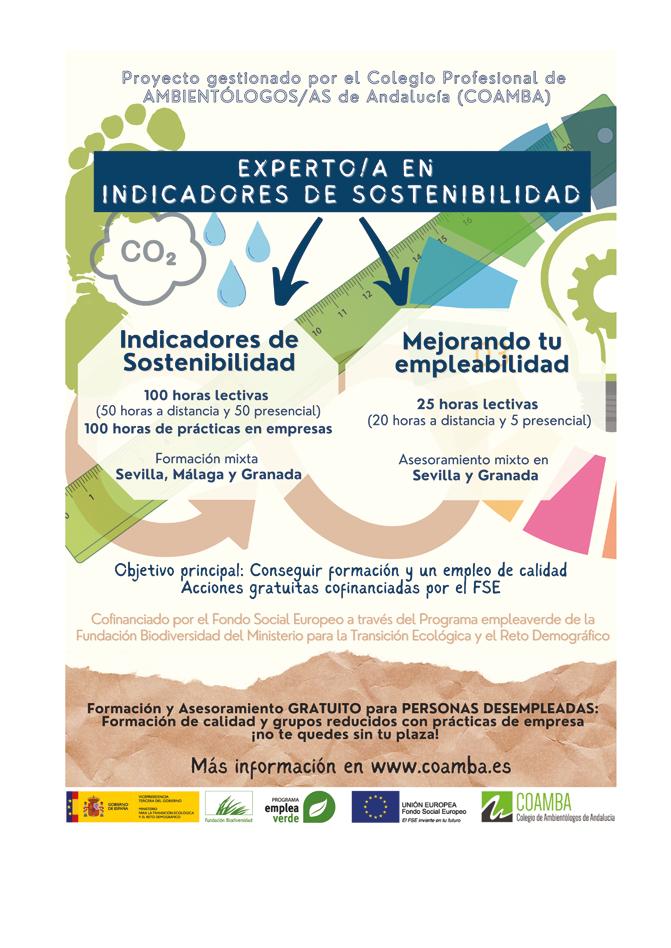
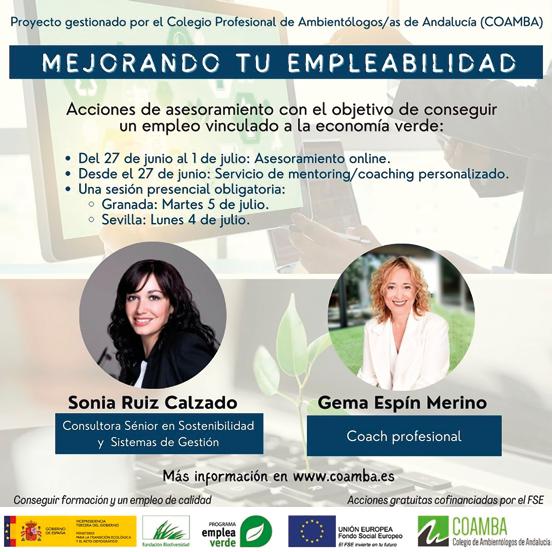

in an objective way, thanks to the indicators used, the sustainability of a given organization, which can advise in this way to improve their processes, with the aim of being more sustainable. This project has an impact on several MITECO strategies or plans, including the following:
Long-Term Strategy for a Modern, Competitive and Climate Neutral Spanish Economy in 2050 (ELP 2050) because the project will train people capable of quantifying the number of resources and waste generated in a given organization. For example, by calculating the carbon footprint and the process of registering emissions, it will be possible to establish goals and measures for their reduction, the general objective of the plan, which is to have an economy with zero net greenhouse gas emissions, achieving climate neutrality. This plan also contemplates an increase in employment, the main objective of this project.
Spanish Climate Change and Clean Energy Strategy (EECCEL), In this same line, it has a positive impact on this strategy by encouraging the reduction of GHG emissions, increasing the awareness and sensitization of organizations regarding clean energy and climate change, in short, being able to quantify the waste and the impact generated through sustainability indicators, in order to reduce it. Other objectives of the plan will also be achieved, such as contributing to sustainable development and compliance with climate change commitments through the use of flexibility mechanisms such as this type of project, increasing awareness and sensitization regarding clean energy and climate change thanks to the continuous communication actions of this project and promoting the rational use of energy and saving resources, in this case in the companies themselves and in the end consumers.
Spanish Circular Economy Strategy. Circular Economy and Life Cycle Analysis/Environmental Footprint are two important blocks in the training contents of this project, being able to then apply them in the companies in the practical part, with the aim of minimizing waste generation and taking advantage as far as possible of those that cannot be avoided, the general objective of the plan. The measures defined to achieve this objective include reducing national consumption of materials,
Dimensión ambiental del proyecto Cada vez son más los riesgos y problemáticas ambientales que surgen como consecuencia de una sobreexplotación del medio debido al modelo socioeconómico actual, siendo muestra de ello el acentuamiento del cambio climático, pérdida de biodiversidad, la cada vez mayor presencia de plásticos y residuos en medios marinos, la contaminación del suelo y acuíferos, la sobreexplotación de los recursos naturales y como posible consecuencia de ello, la grave crisis sanitaria en la que nos encontramos.
Con esta situación cada vez más grave que afecta sin duda nuestra calidad de vida y nuestra salud, se hace indispensable formar a profesionales que puedan calcular de una forma objetiva, gracias a los indicadores usados, la sostenibilidad de una Organización determinada, que puedan asesorar de esta forma a mejorar sus procesos, con el objetivo de ser más sostenibles.
Este Proyecto incide en varias estrategias o planes del MITECO, destacando:
Estrategia a Largo Plazo para una Economía Española Moderna, Competitiva y Climáticamente Neutra en 2050 (ELP 2050) porque gracias al proyecto se formarán personas capaces de cuantificar la cantidad de recursos y residuos generados en una organización determinada. Por ejemplo, mediante el cálculo de la huella de carbono y el proceso de inscripción en el registro de emisiones se podrán establecer metas y medidas para su reducción, objetivo general del plan, que es el de tener una economía con cero emisiones netas de gases de efecto invernadero, alcanzando la neutralidad climática. En este plan también se contempla un aumento del empleo, objetivo principal de este proyecto. Estrategia Española de Cambio Climático y Energía Limpia (EECCEL), en esta misma línea incide positivamente sobre esta estrategia al incentivar la reducción de emisiones GEI, aumentar la concienciación y sensibilización de las organizaciones en lo referente a energía limpia y cambio climático, en definitiva, poder cuantificar mediante los indicadores de sostenibilidad los residuos y el impacto generado, para poder reducirlo.
También se conseguirán otros objetivos del plan como por ejemplo contribuir al desarrollo sostenible y al cumplimiento de los compromisos de cambio

reducing waste in the production and supply chains in various sectors, various areas, including municipal waste, improving efficiency in the use of water, as well as reducing greenhouse gas emissions. In order to establish these types of goals and objectives within an organization, it is necessary to be able to quantify the waste that is currently being generated, as well as the consumption of raw materials, thus being able to establish new goals that can make them more sustainable.
In addition to this, the Project contributes to the fulfillment of some of the Sustainable Development Goals, such as: 3. Health and well-being, 7.
In the same way, we are framed in territories with a multitude of ecosystems linked to the Natura 2000 network, such as Sites of Community Importance (SCI) and Special Protection Areas for Birds (SPA). This project will train professionals who can advise organizations on how to carry out their activities with a better use of resources and in a more sustainable way, improving their sustainability indicators and therefore having a more respectful impact on the surrounding natural environments.
climático mediante el uso de los mecanismos de flexibilidad como este tipo de proyectos, aumentando como ya se ha comentado anteriormente la concienciación y sensibilización en lo referente a energía limpia y cambio climático gracias a las continuas acciones de comunicación de este proyecto e impulsando el uso racional de la energía y el ahorro de recursos, en este caso en las propias empresas y en los consumidores finales.
Estrategia Española de Economía Circular. La Economía circular y el Análisis del Ciclo de Vida/Huella ambiental son dos bloques importantes en los contenidos de formación de este proyecto, pudiendo luego aplicarlos en las empresas en la parte de prácticas, con el objetivo de reducir al mínimo la generación de residuos y aprovechar con el mayor alcance posible los que no se puedan evitar, objetivo general del plan.
En las medidas definidas para conseguir este objetivo se incluye la reducción del consumo nacional de materiales, reducción de residuos en las cadenas de producción y suministro en varios sectores, varios ámbitos, incluidos los residuos municipales, mejorar la eficiencia en el uso del agua, así como reducir la emisión de gases de efecto invernadero. Para que dentro de una organización se puedan establecer este tipo de metas y objetivos es necesario poder cuantificar los residuos que se están generando actualmente, así como el consumo de materia prima, pudiendo de esta forma establecer nuevas metas que puedan hacerlas más sostenibles.
Además de esto, el Proyecto contribuye a cumplir con algunos de los Objetivos de Desarrollo Sostenible, como pueda ser: 3. Salud y bienestar, 7. Energía sostenible y no contaminante, 11. Ciudades y comunidades sostenibles, 13. Acción por el Clima.
Del mismo modo nos enmarcamos en territorios con multitud de ecosistemas vinculados a la red natura 2000, como lugares de Importancia Comunitaria (LIC) y Zonas de Especial Protección para las Aves (ZEPA). Este proyecto formará a profesionales que puedan asesorar a las organizaciones para llevar a cabo su actividad con un mejor aprovechamiento de los recursos y de una forma más sostenible, mejorando sus indicadores de sostenibilidad y por tanto incidiendo de una forma más respetuosa sobre los entornos naturales próximos.
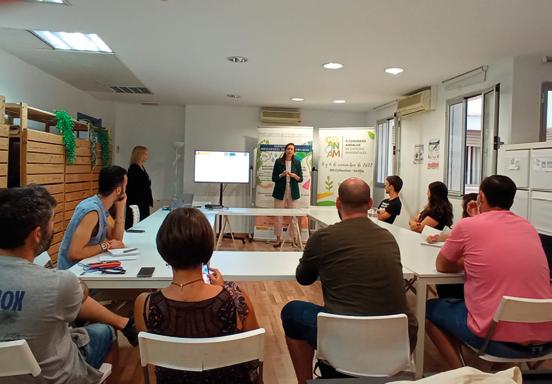
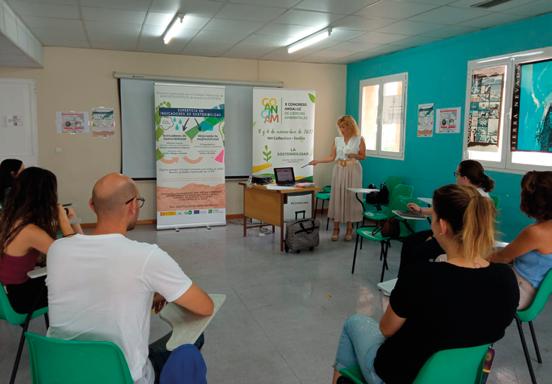


Los moluscos como recurso pesquero del Estrecho de Gibraltar as a fishery resource
Félix Ríos Jiménez y Alfredo Valencia Pereira
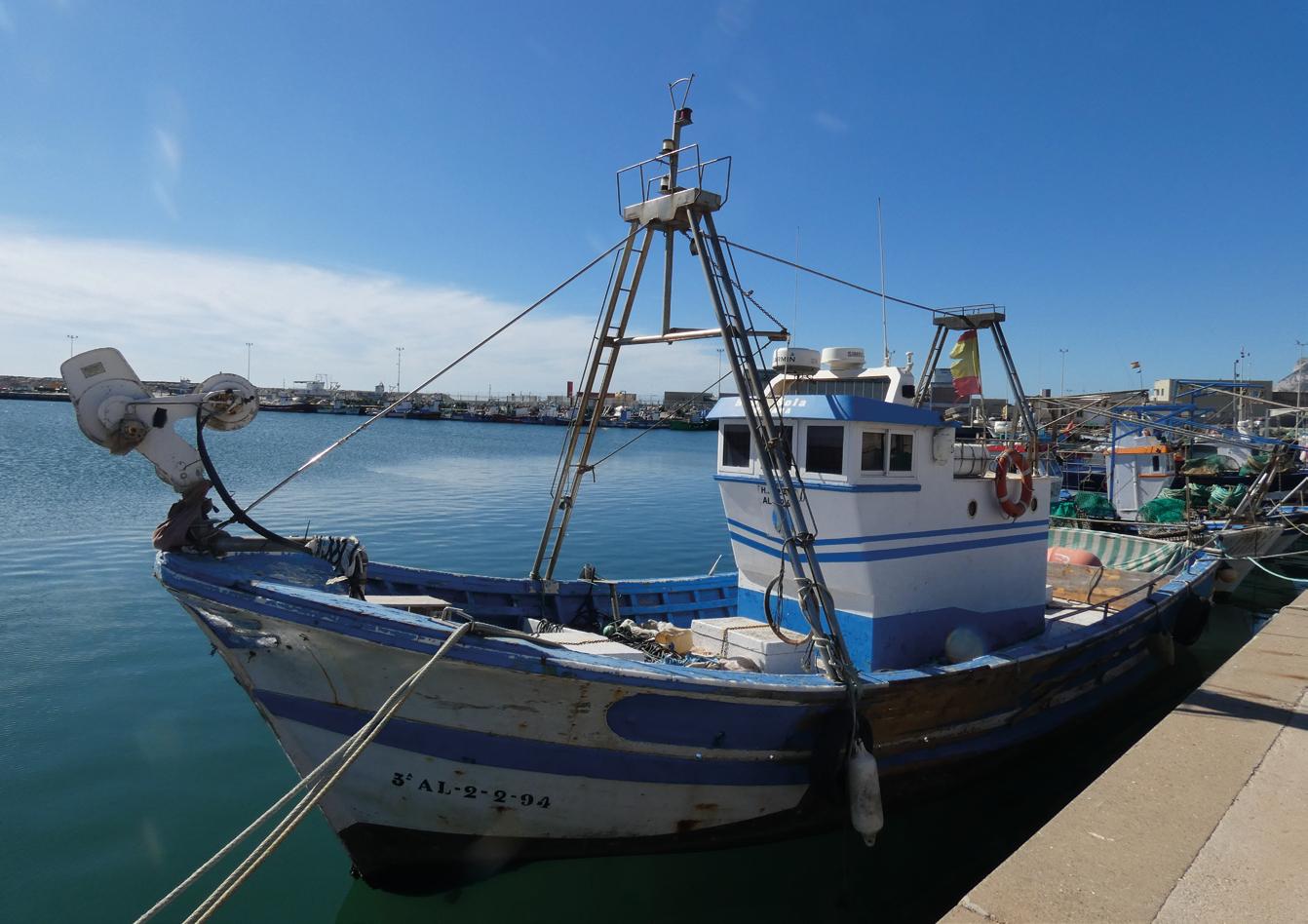
Boats in the port of La Atunara. Embarcaciones del puerto de la Atunara. Photography: Félix Ríos.
The Strait of Gibraltar is the confluence of the Atlantic Ocean and the Mediterranean Sea and separates two continents: Africa and Europe. It has a length of 58 km and a width of 14.4 km between the tip of Tarifa and the tip of Cires in Tangier. It has a maximum depth of 900 meters. The western basin receives through the Strait of Gibraltar an inflow of Atlantic surface waters over a flow of deep Mediterranean waters that leave and reappear in the middle of the Atlantic. This dynamic favors the entry of juveniles and larvae of many Atlantic species.
El Estrecho de Gibraltar es la confluencia del océano Atlántico y el mar Mediterráneo, además, separa dos continentes: África y Europa. Tiene una longitud de 58 km y una anchura de 14,4 km entre la punta de Tarifa y la punta Cires en Tánger. Tiene una profundidad máxima de 900 metros. La cuenca occidental recibe por el Estrecho de Gibraltar una entrada de aguas superficiales atlánticas sobre un flujo de aguas mediterráneas profundas que salen y vuelven a aparecer en mitad del Atlántico. Esta dinámica favorece la entrada de alevines y larvas de muchas especies atlánticas. Este fenómeno natural hace que el canal del Estrecho destaque por su alta diversidad en especies marinas.
Los recursos pesqueros en la zona son muy varia-
This natural phenomenon makes the Strait channel stand out for its high diversity of marine species.
Fishing resources in the area are very varied, and among them, molluscs are an important source of income for the local economy. The fishermen’s guild of La Línea de la Concepción has a Center of Expedition and Commercialization of molloscs in the port of La Atunara, which allows the unloading of these species and their commercialization in the facilities themselves. The fishing fleet is made up of between 60 and 70 boats. In 2015, the Organization of Fishing Producers (OPP) was created for the capture of corruco and its sale under the Tunara brand. Apart from corruco, clams and planchetá are the main products. In the port of Algeciras we can highlight the Volaor squid trade.
In Andalusia, 42 species are subject to shellfishing, including 7 species of snails, 23 species of clams, 3 species of octopus and 9 species of squid. Although many of them are for local consumption depending on the chosen area and in any case, they are always marketed fresh.
The fishing gear is very varied depending on the product to be caught, in the area the methods are trawling, shellfishing on foot, trawl, busanera, enmalle, trail, hydraulic dredge, draft gear, nasa, slats, potera, alcatruz, etc.
Let’s take a look at each of these delicacies:
Corruco: Acanthocardia tuberculata (Linnaeus, 1758). This species is known throughout the Andalusian coast as corruco. The usual size for its capture is between 6 and 9 cm in diameter. It is an endobenthic species, that is, it lives buried in the sand or mud, from 10 to 80 meters deep. It is caught with traces. Around 2,300 tons a year are caught on the Mediterranean coast, with the ports of La Atunara and Fuengirola accounting for 72% of total production. Only the foot (the digging organ used to bury itself) is used for the corruco. Its meat is consumed canned under the name of “langostillo”. In the province of Cadiz only 11% of the total production of the Andalusian canning sector is elaborated.
Clams: Callista chione (Linnaeus, 1758). This species is known as concha fina throughout the Andalusian coast. In our territory, the Strait of Gibraltar, its common name is onion, and in other parts of Andalusia, such as Jaén and Granada, it is known as concha
dos, y entre ellos, los moluscos son una importante fuente de ingreso para la economía local. La cofradía de pescadores de La Línea de la Concepción, cuenta en el puerto de la Atunara con un Centro de Expedición y Comercialización de moluscos, que permite la descarga de estas especies y de su comercialización en las propias instalaciones. La flota pesquera está formada entre 60 y 70 barcos. En el año 2015 fue creada la Organización de Productores Pesqueros (OPP) para la captura del corruco y de su venta bajo la marca Tunara. Aparte del corruco, la concha fina y la planchetá son los productos principales. En el puerto de Algeciras podemos resaltar el comercio del calamar volaor.
En Andalucía, 42 especies son objeto de marisqueo, entre ellas, 7 especies de caracoles, 23 especies de almejas, 3 especies de pulpos y 9 especies de calamares. Si bien muchas de ellas son de consumo local dependiendo de la zona elegida y que en cualquier caso siempre se comercializan en fresco.
Las artes de pesca son muy variadas dependiendo del producto a capturar, en la zona los métodos son de arrastre, marisqueo a pie, zarcillo, busanera, enmalle, rastro, draga hidráulica, artes de tiro, nasa, tablillas, potera, alcatruz, etc.
Veamos cada uno de estos manjares: Corruco: Acanthocardia tuberculata (Linnaeus, 1758). Esta especie se conoce en todo el litoral andaluz como corruco. La talla habitual para su captura está entre 6 y 9 cm de diámetro. Es una especie endobentónica, es decir, vive enterrada en la arena o fango, desde los 10 a los 80 metros de profundidad. Se captura con rastro. En el litoral mediterráneo se pescan alrededor de 2.300 toneladas al año, siendo los puertos con más volumen de capturas los de La Atunara y Fuengirola, con un 72% de la producción total. Del corruco solo se aprovecha el pie (órgano excavador que utiliza para enterrarse). Su carne se consume en conserva bajo la denominación de «langostillo». En la provincia de Cádiz solo se elabora el 11% de la producción total del sector conservero andaluz. Concha fina: Callista chione (Linnaeus, 1758). Esta especie es conocida como concha fina en todo el litoral andaluz. En nuestro territorio, el Estrecho de Gibraltar, su nombre común es cebollera, y en otros lugares de Andalucía, como Jaén y Granada, se le conoce como concha malagueña. La talla de captura

Callista chione.
Photography: José Muñoz.
Acanthocardia tuberculata.
Photography: José Muñoz.
Doxinia exoleta.
Photography: José Muñoz.
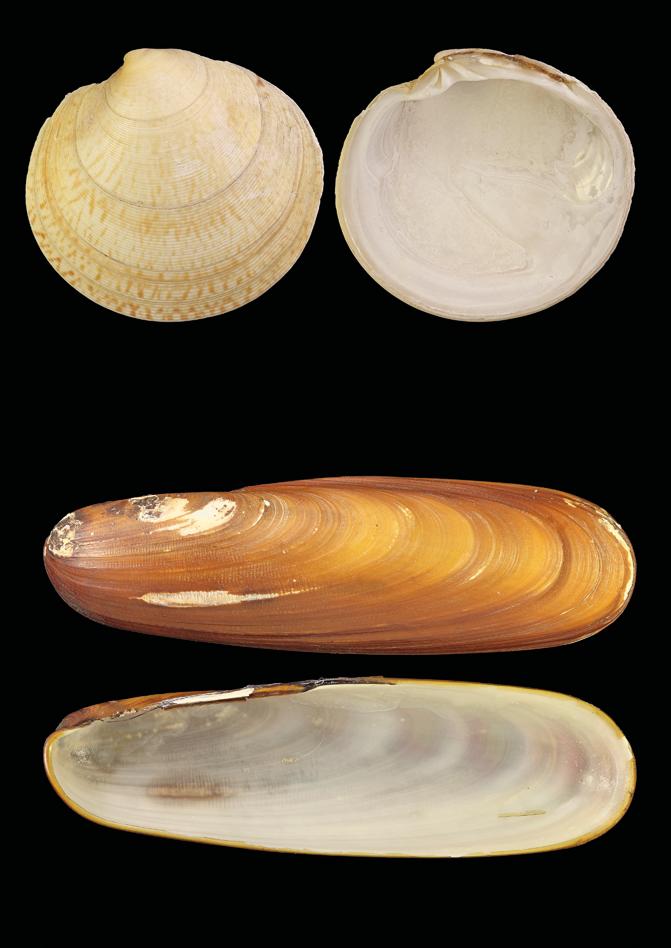
Lithophaga lithophaga.
Photography: José Muñoz.
malagueña. The catch size is between 6 and 7 cm in length. It lives in the infralittoral and circalittoral levels up to 200 meters deep, in sandy or sandy-muddy bottoms. It is caught by trawl. In the Mediterranean around 700 tons a year are caught, the main ports being those of La Atunara, Estepona, Caleta de Vélez and Fuengirola, with 97% of the total production. The largest catch occurs in the months of April to July. 90% of the production of the port of La Atunara is destined for the province of Malaga, where this bivalve is most consumed. In 2021, more than 110,000 kg were sold in the Cadiz fish markets. Planchetá: Dosinia exoleta (Linnaeus, 1758). This species is known on the Andalusian coast as relojito. In Isla Cristina it is called duro, while in La Línea de la Concepción it is known as medalla or planchetá. The catch size can reach up to 6 cm in length. It lives in the infralittoral and circalittoral levels, up to 150 meters deep, in sandy bottoms. It is caught by trawl. In the Mediterranean about 700 kg are caught per year, the main ports being those of La Atunara and Huelva. The months with the highest production are October and November. Its capture is prohibited in February and March. It is consumed locally and is a gastronomic delight in the localities where it is caught.
Sea date: Lithophaga lithophaga (Linnaeus, 1758). Fishery resource or species to be protected?
It is a mollusk that has been highly appreciated in the gastronomy of Mediterranean countries since ancient times. However, today the species is considered rare or endangered. It is currently included in Annex IV of the Habitats Directive (animal and plant species of Community interest requiring strict protection), Annex II of the Bern Convention (strictly protected fauna species) and Annex II of the Barcelona Convention (list of endangered or threatened species).
The distribution area of this mollusc is very wide, globally it is found in the Mediterranean, eastern Atlantic coasts, from southern Portugal to Angola, Canary Islands, Madeira and also in the Red Sea. In the Mediterranean it is found along the entire coastline, including the Tyrrhenian (Italy), the Adriatic and the Aegean. In Andalusia it has been cited in all coastal provinces, except Huelva, as there are no rocky substrates here.
está entre los 6 y 7 cm de longitud. Vive en los niveles infralitoral y circalitoral hasta los 200 metros de profundidad, en fondos arenosos o arenoso-fangosos. Se captura con rastro. En el Mediterráneo se capturan alrededor de 700 toneladas al año, siendo los puertos principales los de la Atunara, Estepona, Caleta de Vélez y Fuengirola, con el 97% de la producción total. La mayor captura se produce en los meses de abril a julio. El 90% de la producción del puerto de La Atunara va destinada a la provincia de Málaga, donde más se consume éste bivalvo. En 2021 se vendieron en las lonjas gaditanas más de 110.000 kg.
Planchetá: Dosinia exoleta (Linnaeus, 1758). Esta especie se conoce en el litoral andaluz como relojito. En Isla Cristina recibe el nombre de duro, mientras que en La Línea de la Concepción se le conoce como medalla o planchetá. La talla de captura puede alcanzar hasta los 6 cm de longitud. Vive en los niveles infralitoral y circalitoral, hasta los 150 metros de profundidad, en fondos arenosos. Se captura con rastro. En el Mediterráneo se capturan unos 700 kg al año, siendo los principales puertos los de La Atunara y Huelva. Los meses con mayor producción son octubre y noviembre. Su captura está prohibida en los meses de febrero y marzo. Su consumo es local y supone una delicia gastronómica en las localidades de captura.
Dátil de mar: Lithophaga lithophaga (Linnaeus, 1758). ¿Recurso pesquero o especie a proteger? Se trata de un molusco que ha sido muy apreciado en la gastronomía de los países mediterráneos desde la antigüedad. Sin embargo, hoy la especie es considerada rara o en estado de extinción. Actualmente está incluida en el Anexo IV de la Directiva Hábitats (especies animales y vegetales de interés comunitario que requieren una protección estricta), en el Anexo II del Convenio de Berna (especies de fauna estrictamente protegidas) y en el Anexo II del Convenio de Barcelona (lista de especies en peligro o amenazadas).
El área de distribución de este molusco es muy amplia, a nivel global se encuentra en el Mediterráneo, costas atlánticas orientales, desde el sur de Portugal hasta Angola, Islas Canarias, Madeira y también en el mar Rojo. En el Mediterráneo se encuentra en todo el litoral, incluyendo el Tirreno (Ita-
This species belongs to the endolithic community, which is formed by the burrowing species themselves, such as the date mussel, and those that use the empty cavities produced by it. It preferentially colonizes calcareous rocks. The species is not equally distributed along the coast, being lower its presence in the coastal stretches where other types of rock such as granite, slate and others predominate, where the species is practically absent. It is found from 0 meters to 25 meters deep, up to 50 meters on the island of Alboran. They drill holes between 10 and 20 cm deep, following a direction perpendicular to the surface of the rock, thus optimizing the use of space and avoiding interbreeding between specimens.
The populations with the highest density of specimens are found between 2 and 5 meters depth, which is the most optimal bathymetric range for the species. Between 0 and 2 meters is more inhospitable due to the impact of waves, which hinders the settlement of juveniles and the strong incidence of atmospheric changes in surface areas.
The growth rate of the date mussel is the lowest of all known bivalve species. This species dedicates the autumn-winter months to excavation and the spring-summer months to reproduction.
For the shellfishing of this species, in most cases it is necessary to destroy the rocky substrate where the species settles, in times, using hammers and chisels to break the rock and later the use of pneumatic hammers and even the use of explosives became generalized. This has caused significant ecological damage. Once the area has been depleted, it will not present new populations of dates of commercial size for about 20 years, as long as the extraction activity allows the settlement of new specimens. The density of specimens with commercial size (over 5 cm) does not usually exceed 100 specimens/m² in most areas, however, in places where environmental conditions are more favorable (calcareous substrate and bathymetric range of 0-5 meters) with a large amount of organic matter in suspension and low sedimentation rate, populations can exceed 200 specimens/m², even reaching 300 specimens/m².
Finally, the extremely slow growth of the date mussel makes any type of cultivation or the use of artificial substrates for breeding and fattening unfeasible.
lia), el Adriático y el Egeo. En Andalucía se ha citado en todas las provincias del litoral, excepto Huelva, ya que aquí no existen sustratos rocosos. Esta especie pertenece a la comunidad endolítica, que está formada por las propias especies excavadoras, como el propio Dátil de mar, y aquellas que utilizan las cavidades vacías producidas por ésta. Coloniza preferentemente las rocas calcáreas. La especie no se reparte por igual a lo largo de la costa, siendo más baja su presencia en los tramos de costa donde predominan otros tipos de roca como granitos, pizarras y otras, dónde prácticamente está ausente la especie. Se encuentra desde los 0 metros hasta los 25 metros de profundidad, hasta 50 metros en la isla de Alborán. Perforan orificios de entre 10 y 20 cm de profundidad, siguiendo una dirección perpendicular a la superficie de la roca, de esta forma se optimiza el uso del espacio y se evita el entrecruzamiento entre ejemplares.
Las poblaciones con más densidad de ejemplares la encontramos entre 2 y 5 metros de profundidad, que es el rango batimétrico más óptimo para la especie. Entre 0 y 2 metros resulta ser más inhóspito por el impacto del oleaje, que dificulta el asentamiento de juveniles y por la acusada incidencia de los cambios atmosféricos en zonas superficiales.
La tasa de crecimiento del Dátil de mar es la más baja de las especies conocidas de bivalvos. Esta especie dedica los meses de otoño-invierno a la actividad excavadora y los de primavera-verano a la reproductora.
Para el marisqueo de ésta especie en la mayoría de ocasiones hay que destruir el sustrato rocoso donde se asienta la especie, en tiempos, utilizando martillos y cinceles para romper la roca y posteriormente se generalizó el uso de martillo neumático e incluso el uso de explosivos. Esto ha ocasionado importantes daños ecológicos. Una vez esquilmada la zona, ésta no volverá a presentar nuevas poblaciones de dátiles con talla comercial hasta pasado unos 20 años, siempre y cuando la actividad de extracción permita el asentamiento de nuevos ejemplares. La densidad de ejemplares con talla comercial (más de 5 cm) no suele superar los 100 ejemplares/m² en la mayoría de las zonas, sin embargo, en los lugares donde las condiciones ambientales son más favorables (sustrato calcáreo y rango batimétrico de 0-5

Flying squid: Illes coindetii (Vèrany, 1837). This species is known along the Andalusian coast as volaor, volado or volaó. This species is found on the coasts of the western Mediterranean and the South Atlantic. It is caught by trawling, pots and creels. Seasonality goes from summer to the end of the year, although there is a peak in the months of April, November and December. The main ports are Puerto de Santa María, Conil, Barbate, Tarifa, Algeciras and Caleta de Vélez, with catches exceeding 300 to 400 tons per year, about 95% of the total in Andalusia. This species is commercialized together with other species such as the coastal squid (Todaropsis eblanae) and the European squid (Todarades sagittatus). It is sometimes marketed under the name of squid. It is consumed fresh.
The Strait is continuously subjected to a multitude of threats, spills, toxins, bathymetric changes by housing or port constructions, and a long etcetera to which we now add the invasion of the Asian alga Rugulopterys okamurae, which arrived as a stowaway a few years ago and is putting in check both the marine fauna and the economy of the Strait of Gibraltar. The rapid expansion of the same is an S.O.S. to the Administration to demand urgent plans for its eradication and if necessary, the reuse of the arribazones. The Asian algae is suffocating with giant steps both our environment and the people who live on fishing resources.

metros) con gran cantidad de materia orgánica en suspensión y baja tasa de sedimentación, las poblaciones pueden superar los 200 ejemplares/m², incluso llegar a 300.
Por último, el crecimiento extremadamente lento del dátil de mar hace inviable cualquier tipo de cultivo o la utilización de sustratos artificiales para su cría y engorde.
Pota voladora: Illes coindetii (Vèrany, 1837). Esta especie es conocida en todo el litoral andaluz como volaor, volado o volaó. Esta especie se localiza en las costas del Mediterráneo occidental y el suratlántico. Se captura en pesca de arrastre, potera y nasas. La estacionalidad va desde el verano hasta finales de año, aunque hay un máximo en los meses de abril, noviembre y diciembre. Los puertos principales son el Puerto de Santa María, Conil, Barbate, Tarifa, Algeciras y Caleta de Vélez, con capturas que superan entre 300 y 400 toneladas anuales, cerca del 95% del total de Andalucía. Esta especie es comercializada junto con otras como la pota costera (Todaropsis eblanae) y la pota europea (Todarades sagittatus). En ocasiones se comercializa con el nombre de calamar. Se consume en fresco.
El Estrecho está continuamente sometido a multitud de amenazas, vertidos, tóxinas, cambios batimétricos por construcciones de viviendas o portuarias, y un largo etcétera al que ahora añadimos la invasión del alga asiática Rugulopterys okamurae, que llegó como polizón hace unos años y está poniendo en jaque tanto a la fauna marina como la economía del Estrecho de Gibraltar. La rápida expansión de la misma es un S.O.S. a la Administración para exigir planes urgentes para su erradicación y en su caso la reutilización de los arribazones. El alga asiática está asfixiando a pasos de gigante tanto a nuestro entorno como a las personas que viven de los recursos pesqueros.
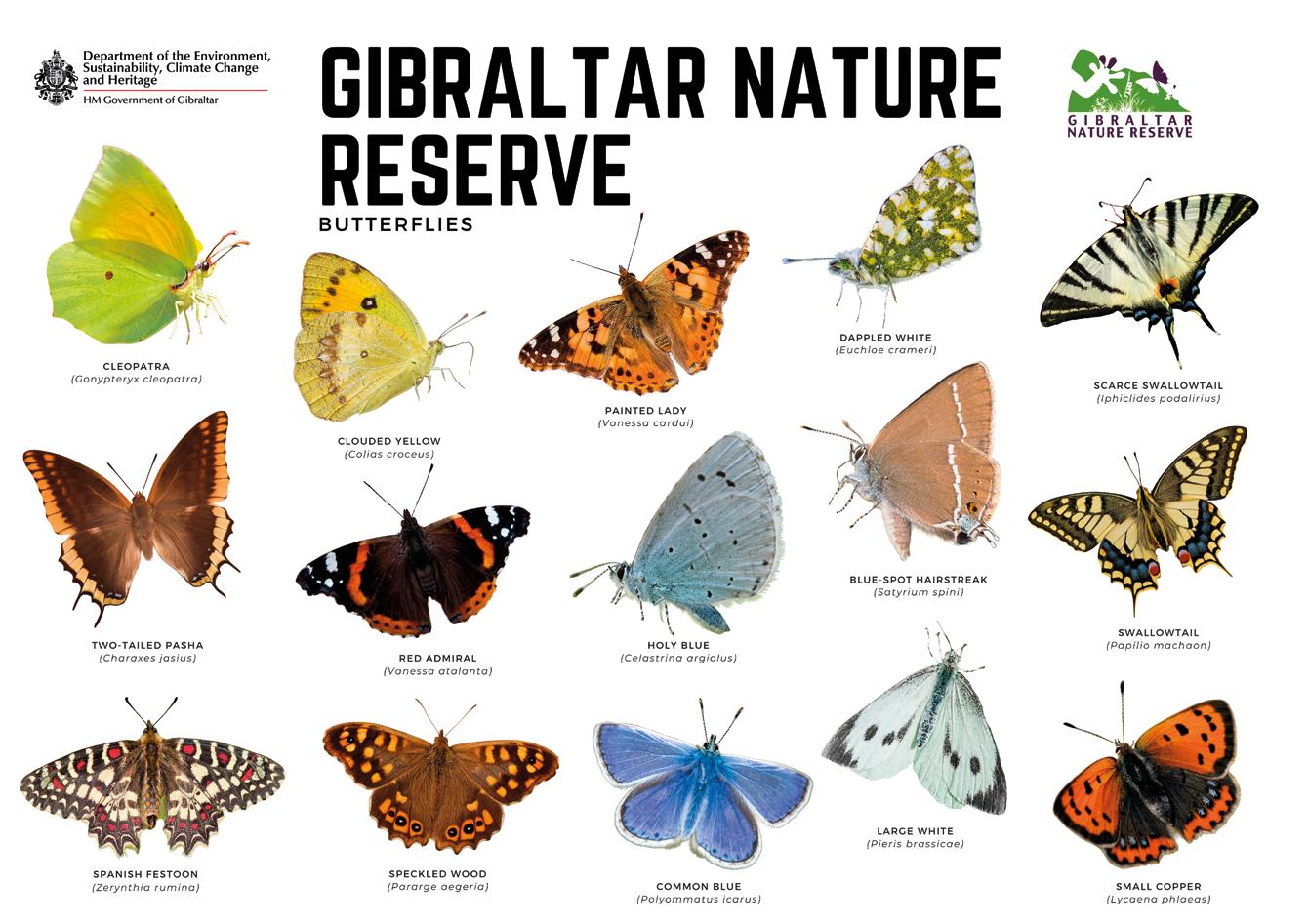
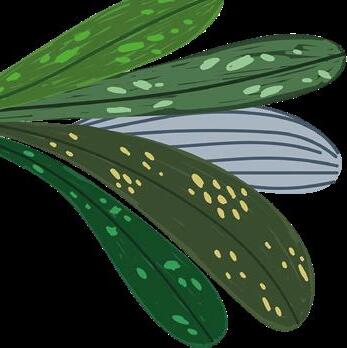

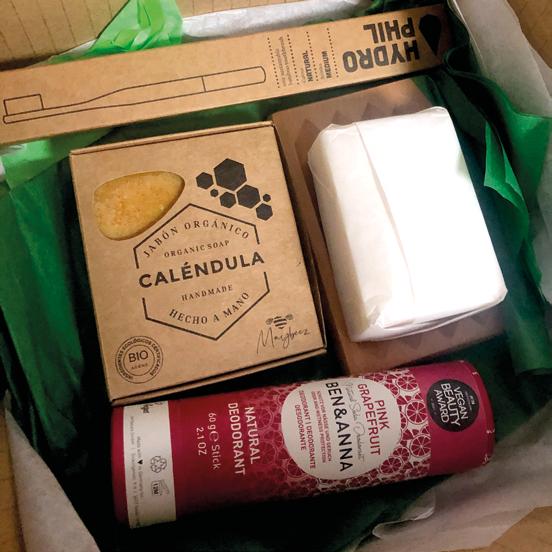
This Apricot Kernal solid shampoo bar smells divine and is made with 100% natural ingredients. It’s not tested on animals and is suitable for vegans. The natural apricot kernal oil will leave your hair wonderfully smooth. The castor oil can also help prevent dry skin and scalp as well as thicken hair and promote hair growth.
Lather up as normal soap and apply like shampoo or massage a little into your scalp to lather up. You can also use it on the rest of your body as normal soap. Keep the shampoo bar dry after use to help it last longer.
Many people say once they are used to solid shampoo bars, they would never switch back to using liquid shampoo. Make the change today. Try this Apricot Kernal solid shampoo and reduce your use of plastic bottles.
easy application. It is vegan, cruelty free, paraben free, gluten free, aluminium free, plastic free, 100% natural and handmade in Germany. The antibacterial properties will fight odor while allowing your skin to breathe naturally. It never feels greasy or sticky and the fragrance is divine. It makes the perfect addition to your plastic-free bathroom.
In cooler climates, holding the tube to your armpit for a couple of seconds allows the warmth from your armpit to soften the deodorant for easier application. In very hot climates you can store the deodorant in the fridge, and generally it’s best kept in a cool, dark place.

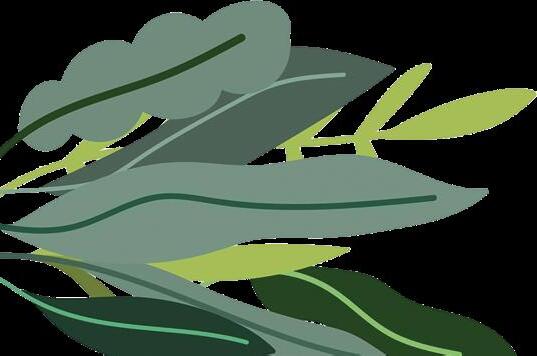
These beautiful organic and handmade calendula soaps are made in the Canary Islands with certified ecological ingredients, many of which come from the maker’s own land. The 90g bar works for both face and body and does not dry the skin like commercial soap can, thanks to the high content of extra virgin olive oil and cocoa butter. The certified ecological calendula oil gives a divine smell while being gentle and natural at the same time. The packaging is made from 100% recycled cardboard. Another win for your plastic-free bathroom and zero waste lifestyle.
This plastic-free, natural deodorant balm comes in a cardboard tube for
This beautifully crafted wooden soap dish will help ensure your soaps or shampoo bars stay dry. The holes in the middle allow the water to drain away completely so your soap or shampoo bars can last longer. Being wooden also means that at the end of its life the dish will completely biodegrade. The card label can also be recycled.
These bamboo toothbrushes will ensure that you never have to use a plastic toothbrush again. Bristles are medium to soft. The handles are made from fastgrowing sustainable bamboo and are fully biodegradable The bristles are made from petroleum-free renewable raw materials (castor oil) which is the most eco-friendly substance that the manufacturer can currently use.



Hueso de Albaricoque Shampoo (para cabellos normales )
Este champú sólido de Albaricoque huele increíble y está hecho con ingredientes 100% naturales. No está probado en animales y es apto para veganos. El aceite de ricino también puede ayudar a prevenir la piel seca y el cuero cabelludo, así como espesar el cabello y promover el crecimiento del cabello.
Frote un poco la barra de champú en el cuero cabelludo para crear la espuma. También se puede utilizar en el resto de su cuerpo como jabón normal. Mantener la barra de champú en seco después de su uso para que dure más tiempo.
Mucha gente dice que una vez se han convertido a bares de champú sólido, nunca quieren a volver a usar champú líquido. Haz el cambio hoy y reduce el uso de botellas de plástico.
Jabón orgánico de caléndula hecho a mano
una fácil aplicación. Es vegano, sin crueldad, sin parabenos, sin gluten, sin aluminio, sin plástico, 100% natural y hecho en Alemania. Las propiedades antibacterianas combaten el olor y permiten que la piel respire naturalmente. Nunca se siente grasiento o pegajoso y la fragancia es divina. Es el complemento perfecto para tu baño sin plástico.
En climas más fresquita, mantener el tubo en la axila durante un par de segundos permite que el calor de la axila ablande el desodorante para facilitar la aplicación. En climas muy cálidos, puedes almacenar el desodorante en la nevera, y en general es mejor guardarlo en un lugar fresco y oscuro.
Jabonera de madera
Esta jabonera de madera ayudará a asegurar que sus jabones o barras de champú permanezcan secos. Los huecos en el medio permiten que el agua se sale completamente, por lo que las barras de jabón o champú pueden durar más tiempo. Hecho de madera también significa que al final de su vida, la jabonera se biodegradará completamente. La etiqueta de carton también puede ser reciclada.
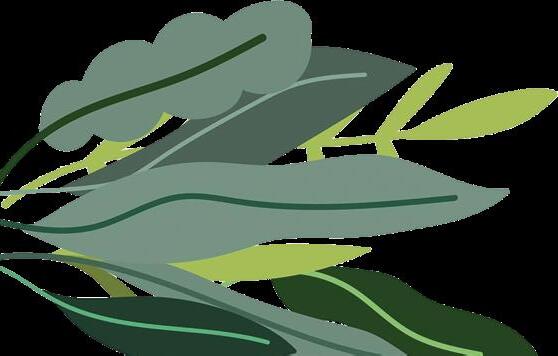
Estos increíbles jabones orgánicos de caléndula hechos a mano están hechos en las Islas Canarias con ingredientes ecológicos certificados, muchos de los cuales proceden directamente de los terrenos del fabricante. La barra de champú de 90g sirve tanto para la cara como para el cuerpo y no reseca la piel como lo puede hacer un jabón comercial, gracias a su alto contenido en aceite de oliva virgen extra y manteca de cacao. El aceite ecológico de caléndula certificado da un olor increíble y a la vez suave y natural. El envase está hecho de cartón 100% reciclado. Otra victoria para tu cuarto de baño sin plásticos y un paso más en tu estilo de vida zero waste.
Desodorante natural Pink Grapefruit
Este desodorante natural es libre de plástico y viene en un tubo de cartón para

Cepillo de dientes Hydrophil
Estos cepillos de dientes de bambú asegurarán que nunca más tengas que usar un cepillo de dientes de plástico. Son cómodos de sostener y vienen en varios colores. Las cerdas son de medio a suave. Los mangos están hechos de bambú sostenible de crecimiento rápido y son totalmente biodegradables. Las cerdas están hechas de materias primas renovables libres de petróleo (aceite de ricino), que es la sustancia más ecológica que el fabricante puede usar actualmente.
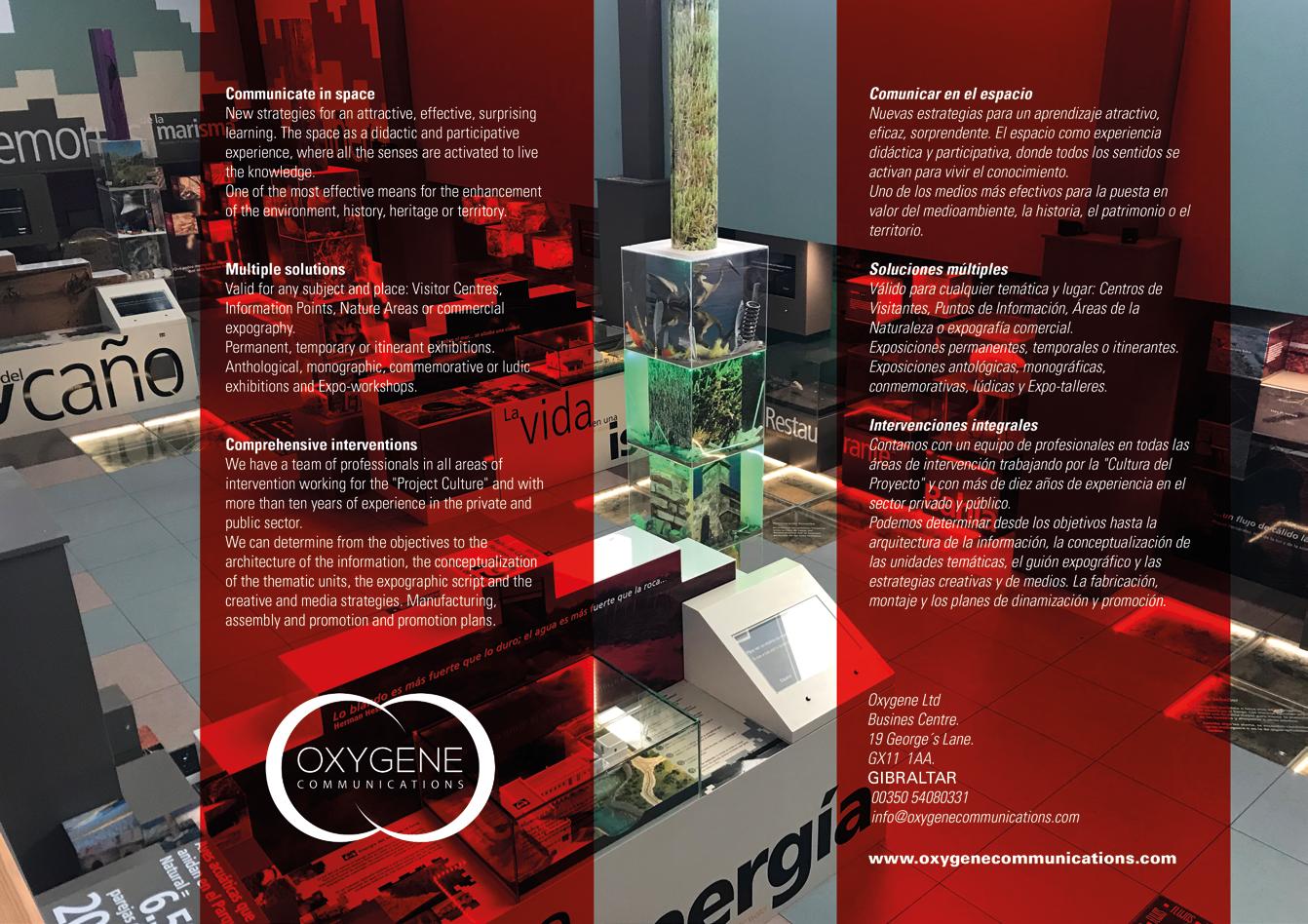
Article and images VOLUME 3 / VOLUMEN 3
Juanlu González
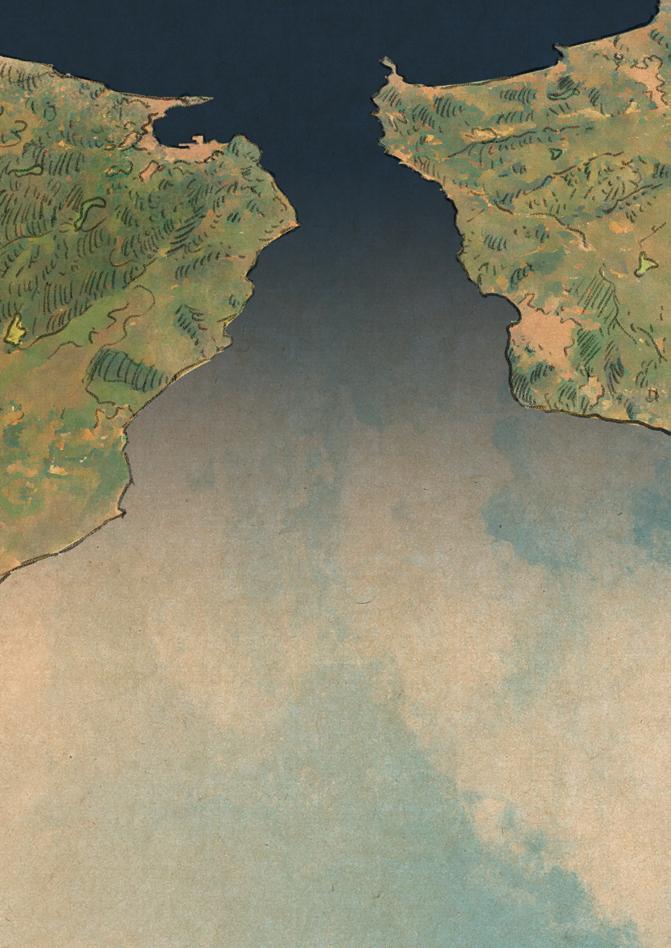


Going back in time to the history of his father, Juba I, the Berber king of Numidia who ascended to the throne with the help of Pompey Magnus, the military commander of Rome, is necessary to comprehend the reasons for the complex life of Juba II. Along with Marcus Licinius Crassus and Julius Caesar, Pompey was a member of the triumvirate of consuls who had been in charge of Rome since 60 BC. However, their strained relationship eventually erupted into a civil war that affected all of the Roman provinces from 49 to 45 BC and was, of course, reflected in the waters of the Strait, which played a pivotal role in a pivotal episode, the Battle of Carteia, in late During the civil war, Juba took Pompey’s side; but it was Caesar who, in the end, declared himself the winner and became the sole leader of the entire Republic until his well-known assassination by Brutus. Three great battles decided the war in his favor: that of Pharsalus in Greece, that of Munda in Baetica and that of Tapso in Tunisia, which pitted Juba and Scipio against the troops of Caesar and his North African allies. After this defeat Juba committed suicide, as did Scipio, throwing himself into the sea,
Para comprender las causas de la compleja vida de Juba II, hay que remontarse a la historia de su Padre, Juba I, rey bereber de Numidia, que llegó al trono gracias al favor de Pompeyo Magno, líder militar de Roma. Pompeyo formaba parte del triunvirato de cónsules que dirigía Roma desde el año 60 a.C. junto con Marco Licinio Craso y Julio César, pero la relación entre ellos se torció hasta desembocar en una guerra civil que afectó a todas las provincias romanas desde el año 49 al 45 a.C., y que tuvo su reflejo —¡cómo no!— en las aguas del Estrecho, que protagonizó un crucial episodio, la Batalla de Carteia, a finales del año 46.
Durante la guerra civil, Juba tomó partido por Pompeyo; pero fue César quien, a la postre, se declaró vencedor para convertirse en el único líder de toda la República hasta su archiconocido asesinato por la mano de Bruto. Tres grandes batallas decantaron la guerra en su favor: la de Farsalia en Grecia, la de Munda en la Bética y la de Tapso en Túnez, que enfrentó a Juba y Escipión contra las tropas de César y sus aliados norteafricanos. Tras esta derrota Juba se suicidó, como también lo hicieron Escipión,

and another prominent Pompeian leader, Cato the Younger, who cut open his entrails after learning of the fatal outcome of the conflict. Another rebel, Publius Atius Varus, managed to flee with the remains of the Pompeian army to take refuge in Carteia, until his death in the battle of Munda, which took place near Cordoba.
But the enmity between Caesar and Juba was not only due to the civil war. Almost twenty years earlier, Caesar had defended before the Senate a rebellious Numidian nobleman who refused to pay taxes to the then Berber king Hiempsal, represented in the dispute by his son, Prince Juba. During the heated legal proceedings, Caesar went so far as to pull the Berber nobleman’s beard in public, which was considered at the time a humiliation against his manhood, a mockery he would never forget, even though the Roman Senate eventually ruled in his favor in the litigation. On the other hand, Caesar had been in favor of incorporating Numidia as another Roman province, depriving it of the - relative - independence it enjoyed and of the power wielded by its kings. Be that as it may, after the defeat, Juba did not want to fall into the hands of the tyrant and preferred, without further ado, in a fit of dignity, to take his own life.
In the absence of a king, Caesar captured Juba’s son and took him to Rome as a booty to be exhibited in the multitudinous triumphal parades that they used to organize after military victories. Along with him, two other royal prisoners were exhibited at the festivities: Vercingetorix, the leader of the Gauls who was executed at the end of the celebrations, and Arsínoe, Cleopatra’s sister and young queen of Egypt. In these capital commemorative acts, the authorities preferred to hide or whitewash as much as possible what concerned the civil war and highlight the conquest of Numidia, hence the importance of having in the Triumph with the small Juba, along with the colorful elephants of the Berber army and the rest of the usual elements of this ceremonial route. The victorious army and its generals, the captured prisoners, together with the spoils of war and other representative political, civil and religious symbols were not missing in the parade. At the same time, the soldiers were rewarded with large salaries, the poorest citizens were given an economic bonus and provided with food, and multitudinous banquets and games
arrojándose al mar, y otro destacado jefe pompeyano, Catón el Joven, que se abrió las entrañas tras conocer el fatal desenlace de la contienda. Otro rebelde, Publio Atio Varo, logró huir con los restos de la armada pompeyana para refugiarse en Carteia, hasta su muerte en la batalla de Munda, acontecida en las cercanías de Córdoba.
Pero la enemistad entre César y Juba no venía sólo de la guerra civil. Casi veinte años atrás, César había defendido ante el Senado a un noble rebelde númida que se negaba a pagar los impuestos al entonces rey bereber Hiempsal, representado en el litigio por su hijo, el príncipe Juba. Durante el acalorado proceso legal, César llegó a tirar de la barba del noble beréber en público, lo que se consideraba en aquel entonces una humillación contra su virilidad, una burla que nunca olvidaría, a pesar de que el senado romano, finalmente, le dio la razón en el litigio. Por otra parte, César se había mostrado partidario de incorporar a Numidia como una provincia romana más, privándola de la independencia —relativa— de la que disfrutaba y del poder que ostentaban sus reyes. Sea como fuere, tras la derrota, Juba no quiso caer en manos del tirano y prefirió, sin más, en un arranque de dignidad, quitarse la vida. A falta de rey, César capturó al hijo de Juba y lo llevó a Roma como un botín a exhibir en los multitudinarios desfiles triunfales que acostumbraban a organizar tras las victorias militares. Junto a él, otros dos presos reales se exhibieron en los fastos: Vercingétorix, el líder de los galos que fue ejecutado al terminar las celebraciones, y Arsínoe, hermana de Cleopatra y joven reina de Egipto. En estos actos conmemorativos capitalinos, las autoridades prefirieron optar por esconder o blanquear en lo posible lo concerniente a la guerra civil y resaltar la conquista de Numidia, de ahí la importancia de contar en el Triunfo con el pequeño Juba, junto con los vistosos elefantes del ejército beréber y el resto de los acostumbrados elementos de esta ruta ceremonial. No faltaron, pues, en el desfile el ejército vencedor y sus generales, los prisioneros capturados, junto al botín de guerra y otros símbolos representativos políticos, civiles y religiosos. Paralelamente, se premió a los soldados con grandes salarios, a los ciudadanos más pobres se les entregó una gratificación económica y se les proporcionó alimentos y se organizaron multitudina-
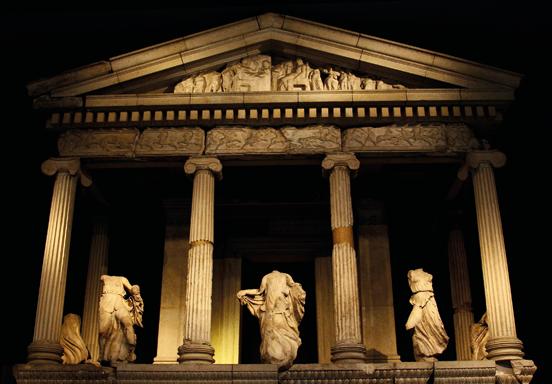
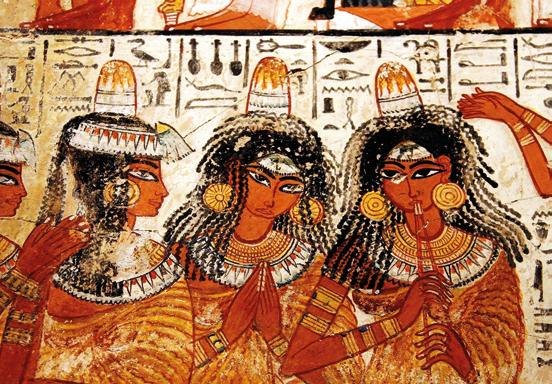
Cleopatra Selene and Alexander Helios.
Cleopatra Selene y Alejandro Helios.

with gladiators and wild animals were organized. Everything was used to extol war as a great source of wealth and power for Rome.
In the Triumph of 46 B.C. several victories were united in a single commemoration, specifically those that took place in Gaul, in Egypt, in Greek Pontus (Bithynia) and in our Numidia. In spite of all its historical relevance, as it usually happens, the celebrations are remembered for anecdotes such as the jokes sung by the soldiers trying to lower Julius Caesar’s temper. As his chariot passed by, they shouted “Romans, watch your women carefully because the bald adulterer is coming”. But, above all, because of the anger he felt when he heard the crowd chanting “Caesar subdued Gaul, Nicomedes subdued Caesar”, insinuating a homosexual relationship with the king of Bithynia, where the dictator of the Republic was “put under”, the other meaning of subdue in the Latin language. Legend has it that the slave who held the laurel wreath over the head of the honored general during the Triumph whispered in his ear the phrase “memento mori”-remember that you are mortal-, but it seems that the soldiery already took care of it in a much more expeditious manner.
Once little Juba settled in Rome, when he was only 5 years old or maybe less, he was raised as a member of the family of Octavian Augustus (greatnephew and heir of Julius Caesar), with whom he became a great friend that would last all their lives. As befitted a Roman nobleman, he learned Latin and Greek and was even granted full citizenship. Perhaps this was the most unknown stage of his life and the one about which the least is known, but it is assumed that he must have stood out for his intelligence and education because, at the age of 20, he had already written his first book on the history of Rome and had entered into battle in Hispania. He was not the only child raised in the court of the metropolis, it could be said that it was almost a custom to adopt children of barbarian chiefs (foreigners) to Romanize them and accustom them to the ways of Rome. Thus, in the house of Octavia, the sister of Augustus, who was the one who actually raised the little ones, a small kindergarten had been organized. In fact, a few years later the two living children of Mark Antony and Cleopatra - the twins Cleopatra Selene and Alexander Helios - arrived at the court,
rios banquetes y juegos con gladiadores y animales salvajes. Todo valía para ensalzar la guerra como gran fuente de riqueza y poder de Roma. En el Triunfo del 46 a.C. se unieron varias victorias en una sola conmemoración, concretamente las acontecidas en las Galias, en Egipto, en el Ponto griego (Bitinia) y en nuestra Numidia. A pesar de toda su relevancia histórica, como suele suceder, las celebraciones se recuerdan por anécdotas como los chascarrillos que cantaban los soldados tratando de bajarle los humos a Julio César. Al paso de su carruaje gritaban «romanos, vigilad con atención a vuestras mujeres pues ya llega el calvo adúltero». Pero sobre todo, por el enfado que le produjo oír a la multitud canturreaban «César sometió a las Galias, Nicomedes a César», insinuando una relación homosexual con el rey de Bitinia, donde el dictador de la República era «puesto debajo», la otra acepción de someter en lengua latina. La leyenda dice que el esclavo que sostenía la corona de laurel sobre la cabeza del general homenajeado durante el Triunfo le susurraba al oído la frase «memento mori»— recuerda que eres mortal—, pero parece que ya la soldadesca se encargaba de ello de manera mucho más expeditiva.
Una vez el pequeño Juba asentado en Roma, cuando sólo contaba con apenas 5 años o quizá menos, fue criado como un miembro más de la familia de Octavio Augusto (sobrino-nieto y heredero de Julio César), con quien trabó una gran amistad que duraría toda sus vidas. Como correspondía a un noble romano, aprendió latín y griego e incluso se le otorgó la ciudadanía plena. Quizá esa fue la etapa más desconocida de su vida y de la que menos se tiene conocimiento, pero se supone que debió destacar por su inteligencia y formación porque, apenas con 20 años ya escribió su primer libro sobre la historia de Roma y había entrado en batalla en Hispania. No era el único niño criado en la corte de la metrópoli, podría decirse que era casi una costumbre adoptar a hijos de jefes bárbaros (extranjeros) para romanizarlos y habituarlos a los modos de Roma. Así, en casa de Octavia, la hermana de Augusto, que era quien realmente criaba a los pequeños, se había organizado casi una pequeño jardín de infancia. De hecho, unos pocos años después llegaron a la corte los dos hijos vivos de Marco Antonio y Cleopatra —


after the suicide of both parents, after losing the battle of Accio and seeing how Octavian invaded Egypt in 32 B.C. All were exhibited in the corresponding triumph and all had their lives spared. However, to give drama to the procession, the little ones were tied with heavy gold chains, a fact that unleashed the wrath of the people towards their rulers for the cruelty shown towards innocent children. Cleopatra Selene, the eventual wife of Juba II, was not even 10 years old when she was shown as spoils of war to the crowd
So, Juba and Cleopatra, adopted by the imperial family, were raised together at court under the protection of Octavia. Their marriage was planned and agreed upon as an affair of state aimed at consolidating Roman rule over North Africa. Octavian Augustus reinstated Juba II as king of a kind of pro-

los mellizos Cleopatra Selene y Alejandro Helios—, tras el suicidio de ambos progenitores, al perder la batalla de Accio y ver cómo Octavio invadía Egipto en el año 32 a.C. Todos fueron exhibidos en el correspondiente triunfo y a todos les fue perdonada la vida. Sin embargo, para dar dramatismo al cortejo, los pequeños fueron amarrados con pesadas cadenas de oro, hecho que desató las iras del pueblo hacia sus gobernantes por la crueldad mostrada hacia unos niños inocentes. Cleopatra Selene, la que sería a la postre esposa de Juba II, no tendría ni 10 años cuando fue mostrada como botín de guerra a la multitud. Así que Juba y Cleopatra, adoptados por la familia imperial, se criaron juntos en la corte bajo la protección de Octavia. Su matrimonio fue planificado y acordado como un asunto de estado destinado a consolidar el dominio romano sobre el norte de Áfri-
tectorate of Numidia in 29 BC and of Mauretania a few years later (now in northern Morocco and Algeria) and granted him a huge dowry for his marriage to Cleopatra, who also served as a real queen and not only as a decorative consort, as attested by her unusual presence on coins minted during his reign and the titles she continued to hold after the royal wedding.
Initially, the couple placed their royal residence in Numidia, but their compatriots did not welcome them with the expected warmth. The Amazigh people did not want such a highly Romanized leader. So, they decided to go to Mauretania, where he took direct contact with the Strait of Gibraltar, as he was in fact the king of its southern shore. There they settled in an ancient Carthaginian town located in present-day Algeria called Iol, which they renamed
ca. Octavio Augusto restituyó a Juba II como rey de una especie de protectorado de Numidia en el año 29 a.C. y de Mauretania unos pocos años después (actualmente en el norte de Marruecos y Argelia) y le otorgó una enorme dote para su boda con Cleopatra, quien ejerció también como reina verdadera y no únicamente como consorte decorativa, como atestigua su presencia nada usual en las monedas acuñadas durante su reinado y los títulos que siguió ostentando tras la boda real.
Primeramente, la pareja situó su residencia real en Numidia, pero sus compatriotas no los acogieron con la calidez esperada. El pueblo amazigh no quería un dirigente tan sumamente romanizado. Por eso decidieron marchar a Mauretania, donde tomó contacto directo con el Estrecho de Gibraltar, pues era de hecho el rey de su orilla sur. Allí se establecie-

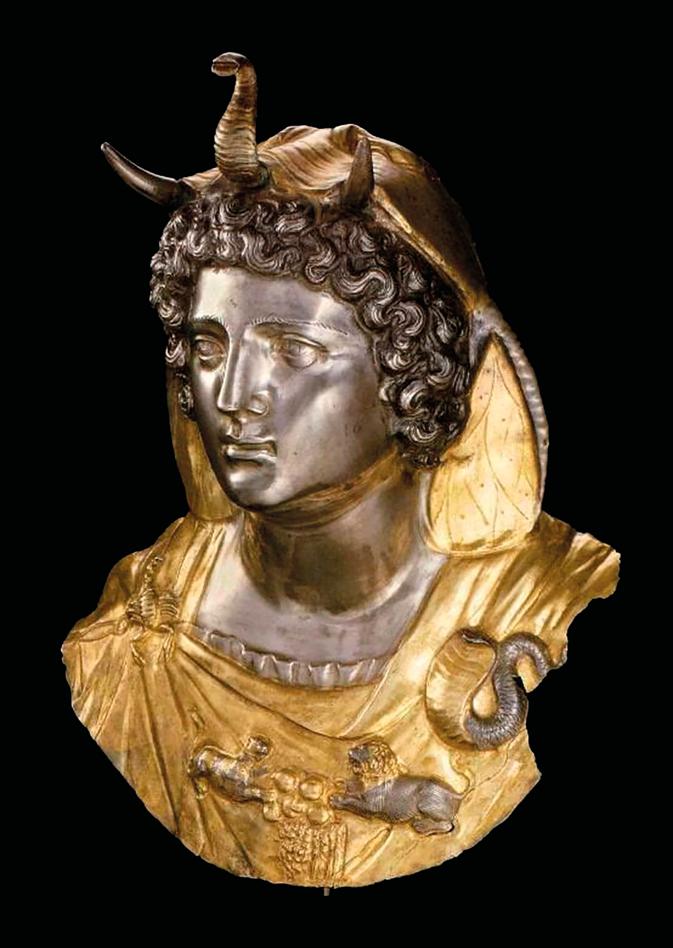


Caesarea, in honor of Augustus and made the capital of Mauretania Caesarea. They also focused their governmental and urbanizing efforts on the Moroccan city of Volubilis, declared capital of Mauretania Tingitana. Its architecture was a wise mixture of Roman, Greek and Egyptian styles, as corresponded to the origins and education received by both kings and where gods of all the Mediterranean pantheons were venerated, including the Egyptian gods of Isis and Anubis. Tangier was not left out either, it became a regional commercial power of the first order on the shores of the Strait of Hercules.
But Juba was not a king to the use, in fact he was a great intellectual of the most outstanding of his time in all the West. Although no complete text is preserved, the references of other authors, including Pliny himself, indicate that he wrote at least twenty books on many different subjects. He devoted much attention to natural history and geography, but also to history, archaeology, grammar, literature and theater. He sent several expeditions to investigate the geography and the flora and fauna of the Atlas, Madeira and the Canary Islands, where he is considered as their first king and, above all, who named the archipelago after the large number of ferocious dogs -canes- that the Mauretanian explorers found there.
Another reason why Juba’s legacy will be everlasting is because of the book he wrote about a kind of medicinal and toxic succulent plant he discovered in the Moroccan Atlas. He named it Euphorbia, after his personal physician of Greek origin named Euphorbus, who also investigated the effects of the latex exuded by various euphorbias on human health. In the 18th century, Linnaeus kept the name given by Juba for the entire botanical genus, which consists of more than 2,000 plants worldwide.
As it happens to many of us, when one frequents one side of the Strait, one does not rest until getting to know the other. Thus, Juba became an assiduous visitor to the region, especially to the temple of Hercules and the city of Gades. He was so captivated by his figure that he invented a lineage that would make him descend from the union of the god with the Tangier woman he married after his victory over Antaeus, which invested his figure with divine breath and legitimized him before his subjects. He min-
ron en una antigua población cartaginesa situada en la actual Argelia llamada Iol, a la que rebautizaron como Cesárea, en honor a Augusto y convirtieron en la capital de la Mauretania Cesarea. También centraron sus esfuerzos de gobierno y urbanizadores en la ciudad marroquí de Volubilis, declarada capital de la Mauretania Tingitana. Su arquitectura en una sabia mezcla de los estilos, romano, griego y egipcio, como correspondía a los orígenes y la educación recibida por ambos reyes y donde se veneraron dioses de todos los panteones mediterráneos, incluidos los egipcios de Isis y Anubis. Tánger tampoco se quedó al margen, la convirtieron en toda una potencia comercial regional de primer orden en las orillas del Estrecho de Hércules.
Pero Juba no fue un rey al uso, en realidad fue un gran intelectual de los más destacados de su tiempo en todo Occidente. Aunque no se conserva ningún texto completo, las referencias de otros autores, entre ellos del mismísimo Plinio, indican que escribió al menos una veintena de libros sobre muy distintas materias. Dedicó mucha atención a la historia natural y la geografía, pero también a la historia, la arqueología, la gramática, la literatura o el teatro. Envió varias expediciones para investigar la geografía y la flora y la fauna del Atlas, de Madeira y de las Islas Canarias, donde se le considera como su primer rey y, sobre todo, quien puso nombre al archipiélago por la gran cantidad de perros —canes— feroces que allí se encontraron los exploradores mauretanos.
Otro motivo por el que el legado de Juba será imperecedero es por el libro que escribió sobre una especie de planta suculenta medicinal y tóxica que descubrió en el Atlas marroquí. La bautizó con el nombre de Euphorbia, en honor a su médico personal de origen griego llamado Euphorbus quien, además, investigó los efectos del látex que exudan distintas euphorbias en la salud humana. En el siglo XVIII, Linneo mantuvo el nombre dado por Juba para todo el género botánico, que consta de más de 2.000 plantas en todo el mundo.
Como nos sucede a muchos, cuando uno frecuenta una orilla del Estrecho, no descansa hasta conocer la otra. Así Juba se convirtió en asiduo visitante de la región y, especialmente del templo de Hércules y la ciudad de Gades. Quedó tan prendado de su figura que se inventó un linaje que lo haría descender

ted coins where he was represented with the lion skin on his head and the mace, the most characteristic herculean habits.
Such was his link with Gades and its territory that Rome named him honorary duunviro of the city, a kind of symbolic mayor, perhaps also a patronus benefactor, most probably because he collaborated with the financing of the temple or other public buildings or with the maintenance and reconstruction of the city after wars and sieges in which it had been involved in recent times. We cannot forget that Gades was the religious center of the majority cult professed by the Mauros, the inhabitants of Mauretania, of which he was monarch. But also, as some authors affirm, because in Gades were kept the secrets of ancient sea explorations carried out by Egyptian, Greek and Punic sailors, above all, on the coasts of Africa, which could have had as a summit the first circumnavigation of the continent.
Be that as it may, it is unacceptable that a historical figure of this stature should remain almost forgotten. A character that combines the best of the Amazigh, Punic, Greek, Roman and Egyptian tradition, that concentrates in his figure the pure essence of the Mediterranean, with such a novel or cinematographic life, cannot be only the patrimony of scholars or specialists. And even less so for the estrechenses and our readers.
Memento mori, memento viviere.

de la unión del dios con la mujer tangerina con la que se casó tras su victoria sobre Anteo, lo que investía a su figura del hálito divino y lo legitimaba ante sus súbditos. Acuñó monedas donde se le representaba con la piel de león sobre la cabeza y la maza, los hábitos hérculeos más característicos.
Tal fue su vinculación con Gades y su territorio que Roma lo nombró duunviro honorario de la ciudad, para entendernos, una especie de alcalde simbólico, quizá también un patronus benefactor, muy probablemente porque colaborase con la financiación del templo u otros edificios públicos o con el mantenimiento y reconstrucción de la urbe tras guerras y asedios en los que se había visto envuelta en fechas recientes. No podemos olvidar que Gades era el centro religioso del culto mayoritario que profesaban los mauros, los habitantes de la Mauretania, de la que era monarca. Pero también, como afirman algunos autores, porque en Gades se guardaban los secretos de antiguas exploraciones por mar realizadas por marinos egipcios, griegos y púnicos, sobre todo, en las costas de África, que pudieron tener como cumbre la primera circunnavegación del continente.
Sea como fuere, es inaceptable que un personaje histórico de esta talla permanezca casi en el olvido. Un personaje que aúna lo mejor de la tradición amazigh, púnica, griega, romana y egipcia, que concentra en su figura la pura esencia del Mediterráneo, con una vida tan novelesca o cinematográfica, no puede ser solo patrimonio de eruditos o especialistas. Y menos aún para los estrechenses y nuestros lectores y lectoras.
Memento mori, memento viviere.
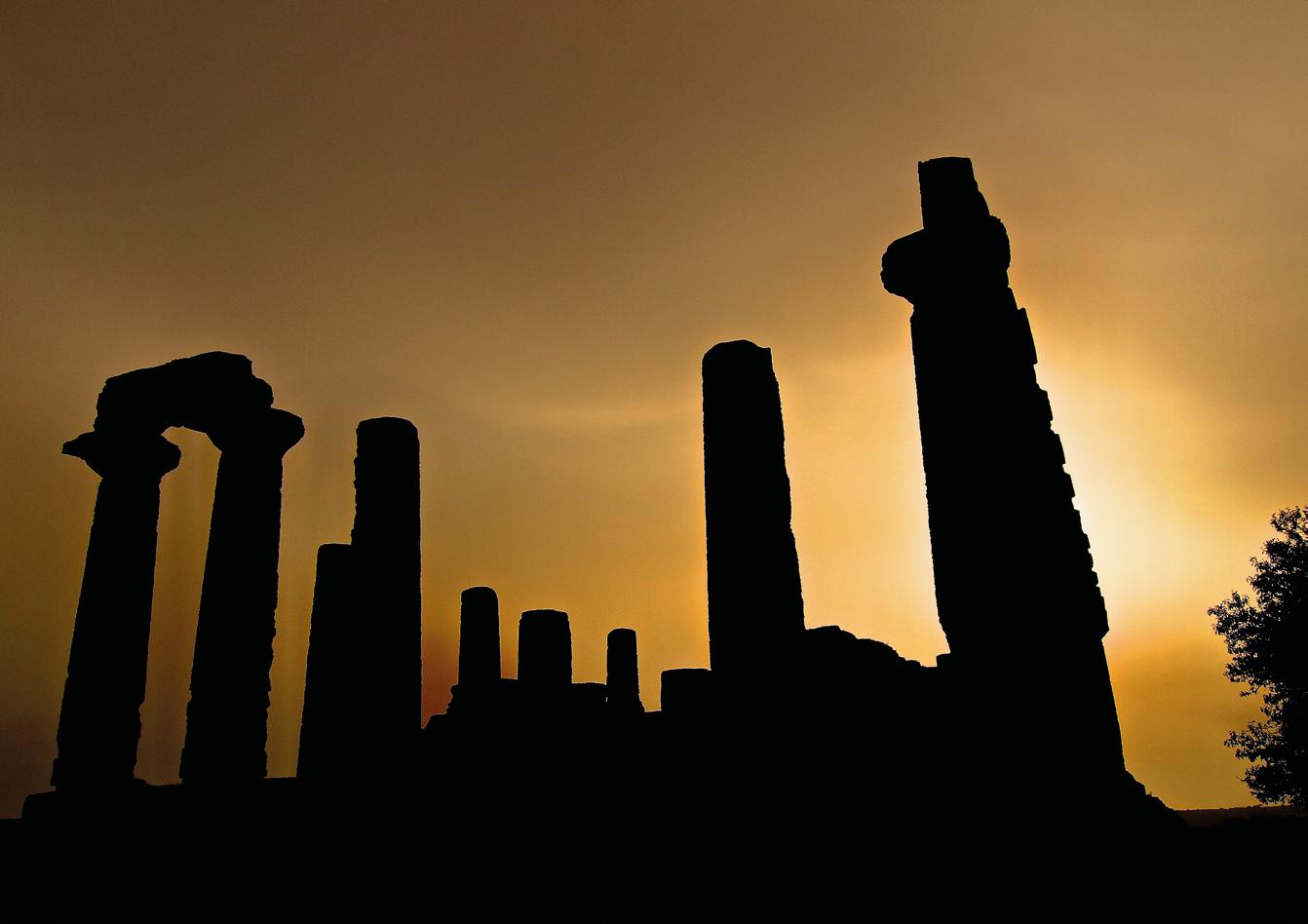



Wastage Products Ltd
AquaGib
Monique’s Bistro
Eroski Mas Cafe
O’Reilly’s Jury’s Cafe
Gibraltar Arms
Bridge Bar & Grill
Westside Secondary School
The Lord Nelson
Victoria Stadium Complex
Bistro Point
St Bernard’s Upper Primary School
Alameda Wildlife
Conservation Park (AWCP)
John Mackintosh Hall
Blands Travel
The Star Bar
The Britannia Bar
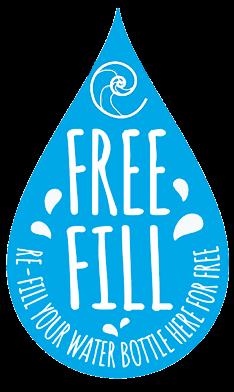
The Three Owls
Trusted Novus Bank
Paper Cloud
University of Gibraltar
Little English
Europa FC Academy
Domino’s Pizza
Risso’s Daily
Soul Kitchen
Europa Rugby Facilities
SUMMER LIFEGUARD POSTS
Little Bay
Camp Bay
Eastern Beach
Western Beach
Catalan Bay
Sandy Bay
Yvette de la Rosa

DESCRIPTION
A Refreshing, colorful, thirst quenching drink to serve at any occasion. Don’t forget to add the ice as this drink is delicious served very cold.
INGREDIENTS
1/2 of an orange, thinly sliced (peel on).
1/2 of an apple, thinly sliced (peel on.)
1 cup pomegranate juice
1/4 cup brandy.
1/4 cup Malibu
2 tbsp brown sugar.
1 tbsp cinnamon.
1 bottle red wine.
1 cup pomegranate arils(pink seeds).
METHOD:
Add the apple and orange in a large jug or bowl and stir to get the flavors going
Add the juice,brandy, Malibu and brown sugar and stir again
Add the wine, pomegranate seeds and then add
DESCRIPCIÓN
Una bebida refrescante, colorida y que quita la sed para servir en cualquier ocasión. No olvide añadir el hielo, ya que esta bebida es deliciosa servida muy fría.

INGREDIENTES
1/2 naranja en rodajas finas (con piel).
1/2 manzana cortada en rodajas finas (con piel).
1 taza de zumo de granada.
1/4 de taza de brandy.
1/4 de taza de Malibú.
2 cucharadas de azúcar moreno.
1 cucharada de canela.
1 botella de vino tinto.
Stir for about 30 seconds to get all the flavors to
Let it chill for a few hours then add ice before serving

1 taza de arilos de granada (semillas rosas).
PREPARACIÓN:
Añadir la manzana y la naranja en una jarra o bol grande y remover para que cojan sabor.
Añade el zumo, el brandy, el Malibú y el azúcar moreno y vuelve a remover.
Añadir el vino, los granos de granada y luego la canela (poco a poco sin dejar de remover).
Remover durante unos 30 segundos para que se mezclen bien todos los sabores.
Dejar enfriar unas horas y añadir hielo antes de servir.

There are so many stories about the inevitable fall of our global ecosystem that it can all feel pointless. This article is meant to highlight some of the incredible efforts and projects that are changing our world for the better.
1. Sea Turtle Conservation. In Bali, young turtle hatchlings are collected to protect them from poaching. They are then released into the sea once they are strong enough.
2. Coral Reef Conservation. Across Seychelles, the Yucatan Peninsula, and Indonesia, volunteers and researchers are embedding coral structures grown on land into local reefs. Another project in Australia uses a robot to patrol reefs and inject poison into invasive starfish species while it monitors the water quality.
3. Bubble Barrier. In Amsterdam, a curtain of bubbles has appeared in one of the main waterways feeding the River IJ. Using a bubbler at the bottom of the waterway, trash and pollutants are lifted to the service and guided to a catchment area. This has the potential to remove up to 90% of trash flowing through, whilst providing safe passage for aquatic species.
4. The Ocean Cleanup. Many of our readers are familiar with the Dutch-led organization that developed the Interceptor. This feat of engineering has been deployed in various waterways and has collected hundreds of thousands of kilograms of waste, preventing it from reaching our ocean.
When you feel forlorn about the state of our world, remember that projects like these are ongoing and there is hope for future generations.
Join us next month to learn about the impact of legislation on conservation efforts. In the meantime, follow Science & Nature for weekly research bites and to connect with our author.

Hay tantas historias sobre la inevitable caída de nuestro ecosistema global que todo puede parecer inútil. Este artículo pretende destacar algunos de los increíbles esfuerzos y proyectos que están cambiando nuestro mundo para mejor.
1. Conservación de las tortugas marinas. En Bali se recogen crías de tortuga para protegerlas de la caza furtiva. Luego se liberan en el mar cuando son lo suficientemente fuertes.
2. Conservación de los arrecifes de coral. En las Seychelles, la península de Yucatán e Indonesia, voluntarios e investigadores están incrustando en los arrecifes locales estructuras de coral cultivadas en tierra. Otro proyecto en Australia utiliza un robot para patrullar los arrecifes e inyectar veneno a las especies de estrellas de mar invasoras mientras vigila la calidad del agua.
3. Barrera de burbujas. En Ámsterdam ha aparecido una cortina de burbujas en uno de los principales cursos de agua que alimentan el río IJ. Mediante un burbujeador situado en el fondo del cauce, la basura y los contaminantes se elevan al servicio y se guían hacia una zona de captación. Esto tiene el potencial de eliminar hasta el 90% de la basura que fluye, a la vez que proporciona un paso seguro para las especies acuáticas.
4. La limpieza de los océanos. Muchos de nuestros lectores conocen la organización holandesa que ha desarrollado el interceptor. Esta hazaña de la ingeniería se ha desplegado en varios cursos de agua y ha recogido cientos de miles de kilogramos de residuos, impidiendo que lleguen a nuestro océano.
Cuando te sientas abatido por el estado de nuestro mundo, recuerda que proyectos como estos están en marcha y que hay esperanza para las generaciones futuras.
Acompáñenos el próximo mes para conocer el impacto de la legislación en los esfuerzos de conservación. Mientras tanto, siga a Ciencia y Naturaleza para conocer las investigaciones semanales y conectar con nuestro autor.
La flor del mes
Dr Keith Bensusan. Director Gibraltar Botanic Gardens.The Carrion Plant Orbea variegata is a member of a group that shows some of the most incredible adaptations among flowering plants. This interesting succulent plant has remarkable flowers that appear in the early autumn, but its biology is more interesting still than its appearance. The flowers emit an odour that mimics rotting flesh to attract a specific group of pollinators: flies. However, the flies are not after its pollen or nectar. They mistake the flower for a dead, decomposing animal and they lay their eggs on it. In doing so, the flies pick up packets of pollen known as pollinia (a feature shared mainly with orchids) and deposit these on other flowers, allowing pollination. The eggs hatch but the maggots are left foodless and quickly perish. The flies are thus the victims of deception: the flowers benefit from pollination, whereas the flies have their attempts at reproduction thwarted. This species, which is the best-known among the carrion plants, is native to South Africa, including in climates similar to Gibraltar’s. Most carrion plants are distributed between southern Africa and Arabia, but some are found elsewhere, from the Mediterranean to Myanmar. Two reach the driest parts of southern Spain.
La Planta de Carrión Orbea variegata es miembro de un grupo que muestra algunas de las adaptaciones más increíbles entre las plantas con flores. Esta interesante planta suculenta tiene unas flores notables que aparecen a principios de otoño, pero su biología es aún más interesante que su aspecto. Las flores emiten un olor que imita la carne podrida para atraer a un grupo específico de polinizadores: las moscas. Sin embargo, las moscas no buscan su polen o néctar. Confunden la flor con un animal muerto en descomposición y ponen sus huevos en ella. Al hacerlo, las moscas recogen paquetes de polen conocidos como polinias (una característica compartida principalmente con las orquídeas) y los depositan en otras flores, permitiendo la polinización. Los huevos eclosionan, pero los gusanos se quedan sin alimento y perecen rápidamente. Las moscas son así víctimas de un engaño: las flores se benefician de la polinización, mientras que las moscas ven frustrados sus intentos de reproducción. Esta especie, que es la más conocida entre las plantas carroñeras, es originaria de Sudáfrica, incluso en climas similares al de Gibraltar. La mayoría de las plantas carroñeras se distribuyen entre el sur de África y Arabia, pero algunas se encuentran en otros lugares, desde el Mediterráneo hasta Myanmar. Dos llegan a las zonas más secas del sur de España.

September is Suicide Prevention Awareness Month — a time to raise awareness on this stigmatised, and often taboo, topic. In addition to shifting public perception, we use this month to spread hope and vital information to people affected by suicide. Our goal is to ensure that individuals, friends, and families have access to the resources they need to discuss suicide prevention and to seek help.
Suicide and self-harm are not mental health problems themselves, but they are linked with mental distress. In the UK in 2019, 6,524 people took their own lives. Men are three times more likely than women to die by suicide. Women are more likely to report suicidal thoughts. Men aged 45-49 and women aged 50-54 have the highest suicide rates in England and Wales.
Know the warning signs
Distinguishing “normal” behaviours from possible signs of a mental illness isn’t always easy. There’s no simple test to label one’s actions and thoughts as mental illness, typical behaviour or the result of a physical ailment.
Each illness has its own symptoms, but common signs of mental illness in adults and adolescents can include the following:
- Excessive worrying or fear.
- Feeling excessively sad or low .
- Confused thinking or problems concentrating and learning.
- Extreme mood changes, including uncontrollable “highs” or feelings of euphoria.
- Prolonged or strong feelings of irritability or anger.
- Avoiding friends and social activities
- Difficulties understanding or relating to other people.
- Changes in sleeping habits or feeling tired and low energy.
- Changes in eating habits such as increased hunger or lack of appetite.
- Changes in sex drive.
- Difficulty perceiving reality (delusions or hallucinations, in which a person experiences and senses things that don’t exist in objective reality)
- Inability to perceive changes in one’s own feelings, behaviour or personality (”lack of insight” or anosognosia) .
- Overuse of substances like alcohol or drugs.
- Multiple physical ailments without obvious causes (such as headaches, stomach aches, vague and ongoing “aches and pains”).
- Thinking about suicide.
- Inability to carry out daily activities or handle daily problems and stress.
- An intense fear of weight gain or concern with appearance.
Calls to action
If you or someone you know is in crisis, call 111 immediately.


Septiembre es el Mes de la Concienciación sobre la Prevención del Suicidio, un momento para concienciar sobre este tema estigmatizado y a menudo tabú. Además de cambiar la percepción pública, aprovechamos este mes para difundir esperanza e información vital a las personas afectadas por el suicidio. Nuestro objetivo es garantizar que las personas, los amigos y las familias tengan acceso a los recursos que necesitan para hablar de la prevención del suicidio y buscar ayuda.
El suicidio y las autolesiones no son problemas de salud mental en sí mismos, pero están relacionados con el malestar mental. En el Reino Unido, en 2019, 6.524 personas se quitaron la vida. Los hombres tienen tres veces más probabilidades que las mujeres de morir por suicidio. Las mujeres son más propensas a reportar pensamientos suicidas. Los hombres de 45 a 49 años y las mujeres de 50 a 54 años tienen las tasas de suicidio más altas en Inglaterra y Gales.
Conoce las señales de advertencia
Distinguir los comportamientos “normales” de los posibles signos de una enfermedad mental no siempre es fácil. No existe una prueba sencilla para etiquetar las acciones y pensamientos de una persona como enfermedad mental, comportamiento típico o resultado de una dolencia física.
Cada enfermedad tiene sus propios síntomas, pero los signos comunes de enfermedad mental en adultos y adolescentes pueden ser los siguientes:
- Preocupación o miedo excesivos.
- Sentirse excesivamente triste o decaído.
- Pensamiento confuso o problemas de concentración y aprendizaje.
- Cambios extremos en el estado de ánimo, incluyendo “subidas” incontrolables o sentimientos de euforia.
- Sentimientos prolongados o fuertes de irritabilidad o ira.
- Evitar a los amigos y las actividades sociales
- Dificultades para entender o relacionarse con otras personas.
- Cambios en los hábitos de sueño o sensación de cansancio y poca energía.
- Cambios en los hábitos alimentarios, como aumento del hambre o falta de apetito.
- Cambios en el deseo sexual.
- Dificultad para percibir la realidad (delirios o alucinaciones, en los que la persona experimenta y siente cosas que no existen en la realidad objetiva)
- Incapacidad para percibir cambios en los propios sentimientos, comportamiento o personalidad («falta de perspicacia» o anosognosia).
- Consumo excesivo de sustancias como el alcohol o las drogas.
- Múltiples dolencias físicas sin causas evidentes (como dolores de cabeza, de estómago, “dolores” vagos y continuos).
- Pensar en el suicidio.
- Incapacidad para llevar a cabo las actividades diarias o manejar los problemas cotidianos y el estrés.
- Miedo intenso al aumento de peso o preocupación por el aspecto físico
Llamada a la acción
Si usted o alguien que conoce está en crisis, llame al 111 inmediatamente.
Language: Vietnamese.
Currency: Vietnamese Dong (VND)).
Capital: Hanoi.
Famous for: Historical Cities and Buddhist temples. French colonial architecture. Vietnamese coffee and food. Some top places: Explore the old and the new in Hanoi. Discover the hustle and bustle of Ho Chi Minh City. Slowdown in beautiful Hue and explore the magnificent Imperial City. Step into the past in the lovely town of Hoi An. Take a boat cruise through the limestone peaks of Halong Bay. Delve into one of the world biggest caves in Phong Nha-Ke Bang . Relax on the white sand beaches and crystal-clear waters of Phu Quoc Island Go on an adventure in Ba Be National Park with its rugged mountains, waterfalls and unique wildlife.
Activities: Hiking, swimming, snorkelling, caving, zip-lining, kayaking, cycling, gastronomy, culture and history.
Weather:
High Season (Jul & Aug) Hot & humid weather, more expensive.
Shoulder (Dec to Mar) Mild weather.
Low Season (Apr to Jun & Sep to Nov) Warm weather.
Eco fact: Nearly 50% of Vietnam is still covered in forested land.
Eco resorts:
Budget: Eco Luxury Hotel Hanoi from £22 per night (Hanoi).
Mid: Hoi An Chic Hotel from £50 per night (Hoi An).
Luxury: An Lam Retreats Saigon River from £170 per night (Ho Chi Minh City.
Idioma: Vietnamita.
Moneda: EDong Vietnamita (VND.)
Capital: Hanoi.
Famoso por: Ciudades históricas y templos budistas. Arquitectura colonial francesa. Café y comida vietnamita.
Algunos de los mejores lugares: EExplora lo antiguo y lo nuevo en Hanoi. Descubre el ajetreo y el bullicio de la ciudad de Ho Chi Minh. Disfruta de la hermosa y tranquila cuidad de Hue y explore su magnífica Ciudad Imperial. Viaja al pasado en la encantadora ciudad de Hoi An. Tome un crucero en barco por la bahía de Halong. Descubre una de las cuevas más grandes del mundo en Phong Nha-Ke Bang. Relájate en las playas de arena blanca y aguas cristalinas de la isla de Phu Quoc. Embárca en una aventura en el Parque Nacional Ba Be con sus montañas, cascadas y vida salvaje única.
Actividades: Senderismo, natación, snorkel, espeleología, tirolina, kayak, ciclismo, gastronomía, cultura e historia.
Clima: Temporada alta (Jul y Ago) Clima caluroso y húmedo, menos económico.
Temporada intermedia (Dic a Mar) Clima templado.
Temporada baja (Abr a Jun y Sep a Nov) Clima cálido. Hecho ecológico: Casi el 50% de Vietnam todavía está cubierto de tierras boscosas.
Resorts ecológicos:
Económico: Eco Luxury Hotel Hanoi desde £22 por noche (Hanoi).
Medio: Hoi An Chic Hotel desde £50 por noche (Hoi An).
Lujo: An Lam Retreats Saigon River desde £170 por noche (Ho Chi Minh City.

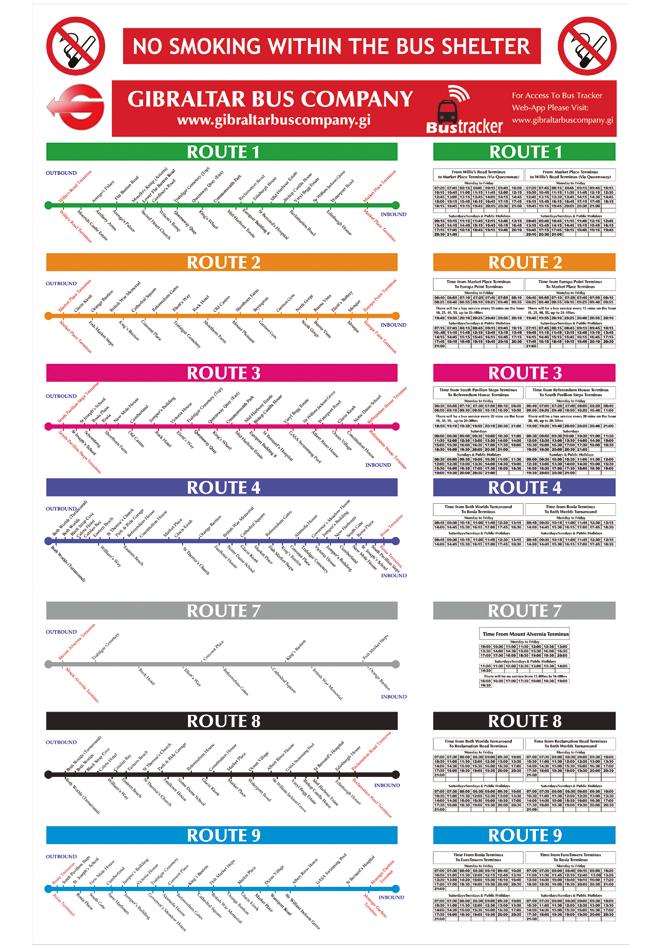

Organized
Tel. +00350 22500799
info@otwomag.com
Transport available for groups. Check with us for your requirements. OTWO is a facilitator on these packages.
All activities are contracted directly between the respective centre operator and the client.
Prices are for the month of September only, please contact us for other dates.
Transporte disponible para grupos.
Consultenos si estás interesado.
OTWO es un mediador de estos paquetes. Todas las actividades se contratan directamente entre el operador y el cliente.
Precios válidos solo para el mes de agosto, consulte para otras fechas.

Gibraltar
Enjoy breath taking views across 3 countries and 2 continents, explore Gibraltar’s fascinating history and be introduced to our most famous inhabitants, the Barbary macaques – the only free roaming monkeys in Europe!
Price: £69 per person.
Highlights
Europa Point and Lighthouse. Upper Rock Nature Reserve.
Pillars of Hercules Monument.
Windsor Suspension Bridge. O’Hara’s Battery (top of Rock 424m). Skywalk.
Ape’s Den.
Great Siege Tunnels. Moorish Castle. …And many more.
What’s included?
Premium e-bike by Riese&Müller. Cycle helmet. Safety instructions.
Entrance fee into the Nature Reserve. An official tour guide. Bottled water.
DURATION:
3 hours. Suitable for everyone over 155 cm, over 12 years old and capable of riding a bicycle.
Gibraltar
Disfrute de las impresionantes vistas de 3 países y 2 continentes, explore la fascinante historia de Gibraltar y conozca a nuestros habitantes más famosos, los macacos de Berbería, ¡los únicos monos que se desplazan libremente en Europa!
Precio: £69 por persona.
Puntos destacados
Punta de Europa y el Faro
Reserva Natural Upper Rock (Parte superior del peñon)
Monumento de las Columnas de Hércules
Puente colgante de Windsor
Bateria de O’Hara (parte superior del peñon - 424m).
El Skywalk
Guarida de los monos
Gran túneles de asedio
Castillo Arabé. …y muchos más
¿Qué está incluido?
Alta calidad E-bike de Riese&Müller. Casco de bicicleta
Instrucciónes de seguridad
Entrada a la reserva natural Guía oficial Agua embotellada.
3 horas. Adecuadas para todos los que midan más de 155 cm, tengan más de 12 años de edad y puedan montar en bicicleta.
Organized by: OTWO Magazine
Tel. +00350 22500799
info@otwomag.com
Transport available for groups.Check with us for your requirements.
OTWO is a facilitator on these packages. All activities are contracted directly between the respective centre operator and the client.
Organized by: OTWO Magazine
Tel. +00350 22500799
info@otwomag.com
Transporte disponible para grupos.
Consultenos si estás interesado.
OTWO es un mediador de estos paquetes. Todas las actividades se contratan directamente entre el operador y el cliente.
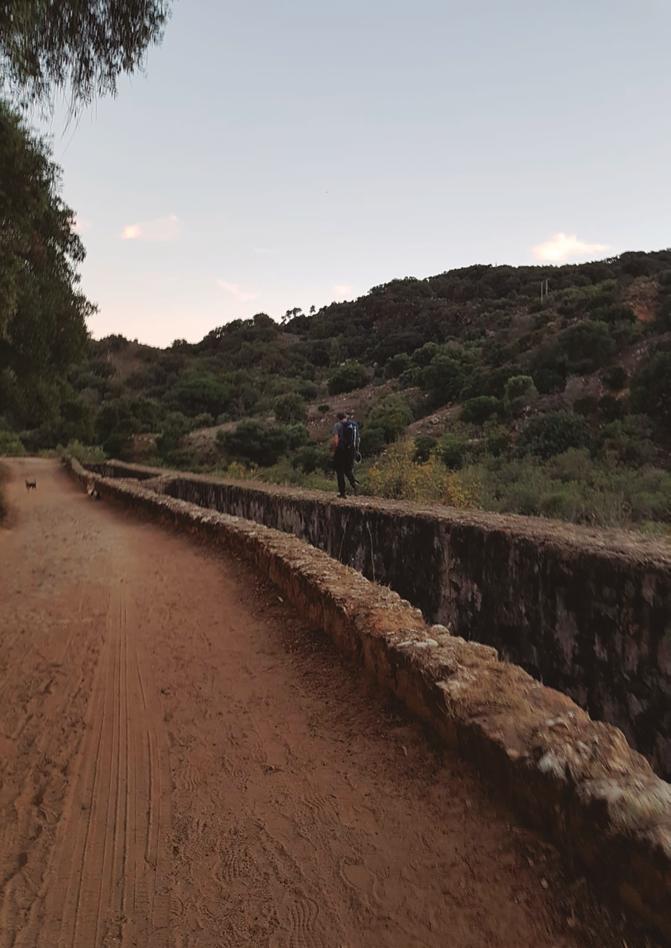
The Hozgarganta River, one of the many charms of the town of Jimena de la Frontera, the Roman road, the viewpoint of the Asomadillas, the Royal Pump Factory ... these are places that will be present on this route, thus enjoying, in addition to the nature of a few moments of historical and cultural content.
We will be able to see a diversity of birds and highlight the presence of wild orchids on our way in addition to the rich diversity of flora in the area.
Location: Municipal district of Jimena de la Frontera.
Duration: 3 hours approximately.
Distance: 9 km approx.
Starting point: Parking lot of Los Alcornocales campsite.
Clothing and footwear: comfortable clothing and footwear.
Authorization: No.
Route: Circular.
Difficulty: Low (suitable for children from 6 years old)
Date: Spring, autumn and winter.
Price: 10€.
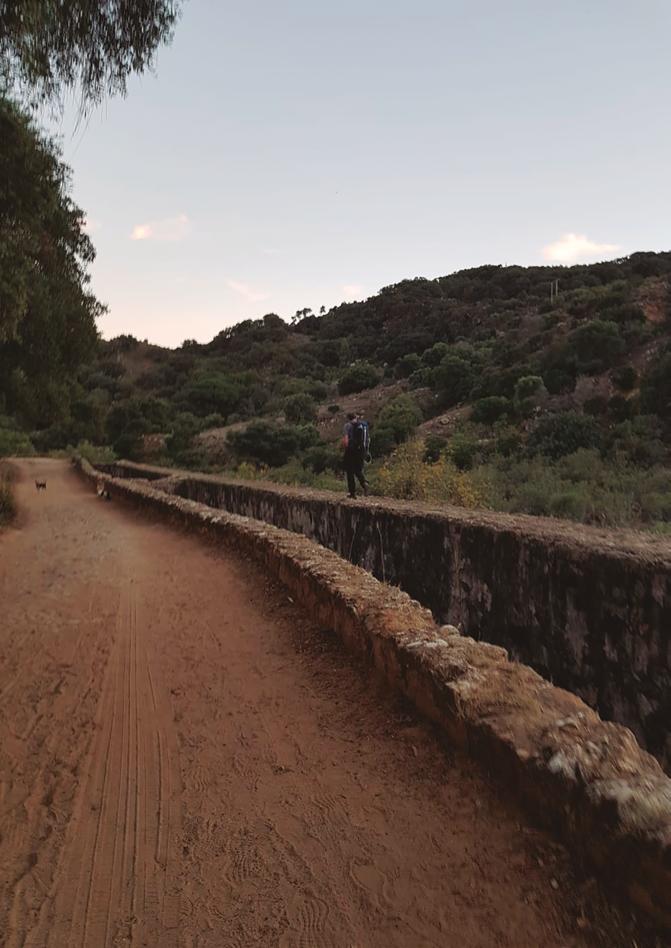
El Rio Hozgarganta, uno de los muchos encantos de la población de Jimena de la Frontera, la calzada romana, el mirador de las Asomadillas, la Real Fábrica de Bombas …son lugares que van a estar presentes en esta ruta, disfrutando así, además de la Naturaleza de unos momentos de contenido histórico y cultural.
Podremos avistar diversidad de aves y destacar la presencia de orquídeas silvestres en nuestro camino además de la rica diversidad de flora de la zona.
Localización: Término municipal de Jimena de la Frontera.
Duración: 3 horas aproximadas.
Distancia: 9 km aproximados.
Lugar de partida: Aparcamiento del camping Los Alcornocales.
Ropa y calzado: vestimenta y calzado de campo
Autorización: No.
Ruta: Circular.
Dificultad: Baja (apta para niños a partir de 6 años).
Fecha: primavera, otoño e invierno.
Precio: 10€.


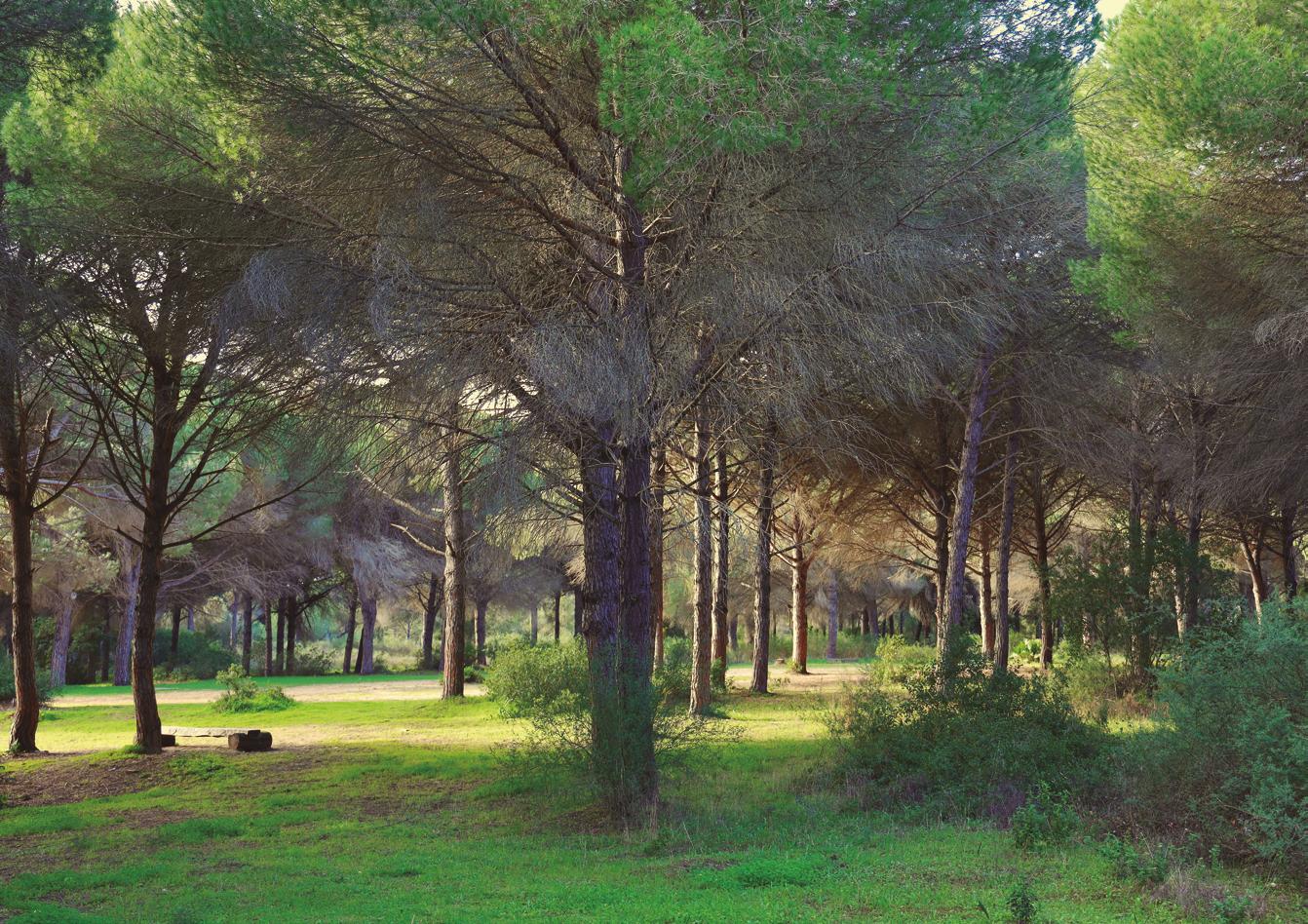
In the Natural Park Los Alcornocales, the Pinar del Rey is located between the municipalities of San Roque and Castellar de la Frontera, in Cadiz.
Its origin dates back to 1800, this place was chosen to plant pine trees (Pinus Pinea) brought from Vejer de la Frontera, and thus obtain wood for the construction of ships.
It currently consists of a recreational area with a picnic area and barbecues, the Alhaja stream, the Nature Classroom and a botanical garden. In addition, there are two trails: El Cerro del Águila and Tajo del Pajarraco.
A peculiar place, with a mild climate, and a migratory bird route. Its environmental conditions make it a paradise for flora. We can even see some plants that only occur in northern Spain and the Canary Islands. We will walk through a mixed forest, with cork oaks, gall oaks, poplars, alders and ash trees, with a wide variety of botanical species, some of them endangered. In addition, of course we will discover its rich and varied fauna.
In addition, the Pinar del Rey, was part of a sandy seabed settlement, so we can easily find shells and marine pieces.
Discover the cumulative effect that nature has, the nuances in you had never noticed, the calm that offers a place with so much magic.
To begin the activity we will leave the car at the end of the parking lot of the recreational area of Pinar del Rey (San Roque), it is important to bring water, sunscreen, (optional mat for floor and camera).
Duration: 2 to 3 hours.
Minimum and maximum number of participants: 5 to 15 people
Dates: Any season of the year. Maximum distance: 2 kilometers.
Important: Notify any food allergies.
Prices: 20£ /person. (RC and accident insurance included).
En el Parque Natural Los Alcornocales, se ubica el Pinar del Rey entre los términos municipales de San Roque y Castellar de la Frontera, en Cádiz.
Su origen se remonta a 1800, este lugar fue elegido para plantar ejemplares de pinos piñoneros (Pinus Pinea) traídos desde Vejer de la Frontera, y obtener así madera para la construcción de navíos.
Actualmente consta de un área recreativa con una zona de picnic y barbacoas, el arroyo de Alhaja, el Aula de Naturaleza y un jardín botánico. Además, existen dos senderos: El Cerro del Águila y el Tajo del Pajarraco.
Un lugar peculiar, de clima suave, y paso de ruta de aves migratorias. Sus condiciones ambientales lo convierten en un paraíso para la flora. Incluso podemos ver algunas plantas que únicamente se dan en el norte de España y en las Islas Canarias. Recorreremos un bosque mixto, con alcornoques, quejigos, álamos, alisos y fresnos, con una extensa variedad de especies botánicas, algunas de ellas amenazadas. Y por supuesto descubriremos su rica y variada fauna.
Además, el Pinar del Rey, formó parte de un asentamiento arenoso de fondos marinos, con lo cual podremos encontrar fácilmente conchas y piezas marinas.
Descubre el efecto acumulativo que tiene la naturaleza, los matices en los que nunca te habías fijado, la calma que ofrece un lugar con tanta magia.
Para comenzar la actividad dejaremos el coche al final del aparcamiento de la zona recreativa del Pinar del Rey (San Roque), es importante llevar agua, protección solar, (opcional esterilla para suelo y cámara de fotos).
Duración: 2 a 3 horas.
Mínimo y máximo de participantes:. 5 a 15 personas.
Fechas: Cualquier estación del año. Distancia máxima: 2 kilómetros.
Importante: Informar de alergias alimenticias .
Precios: 20£ /persona.
(Seguro RC y accidentes incluidos),
Photographs: Juan Luis González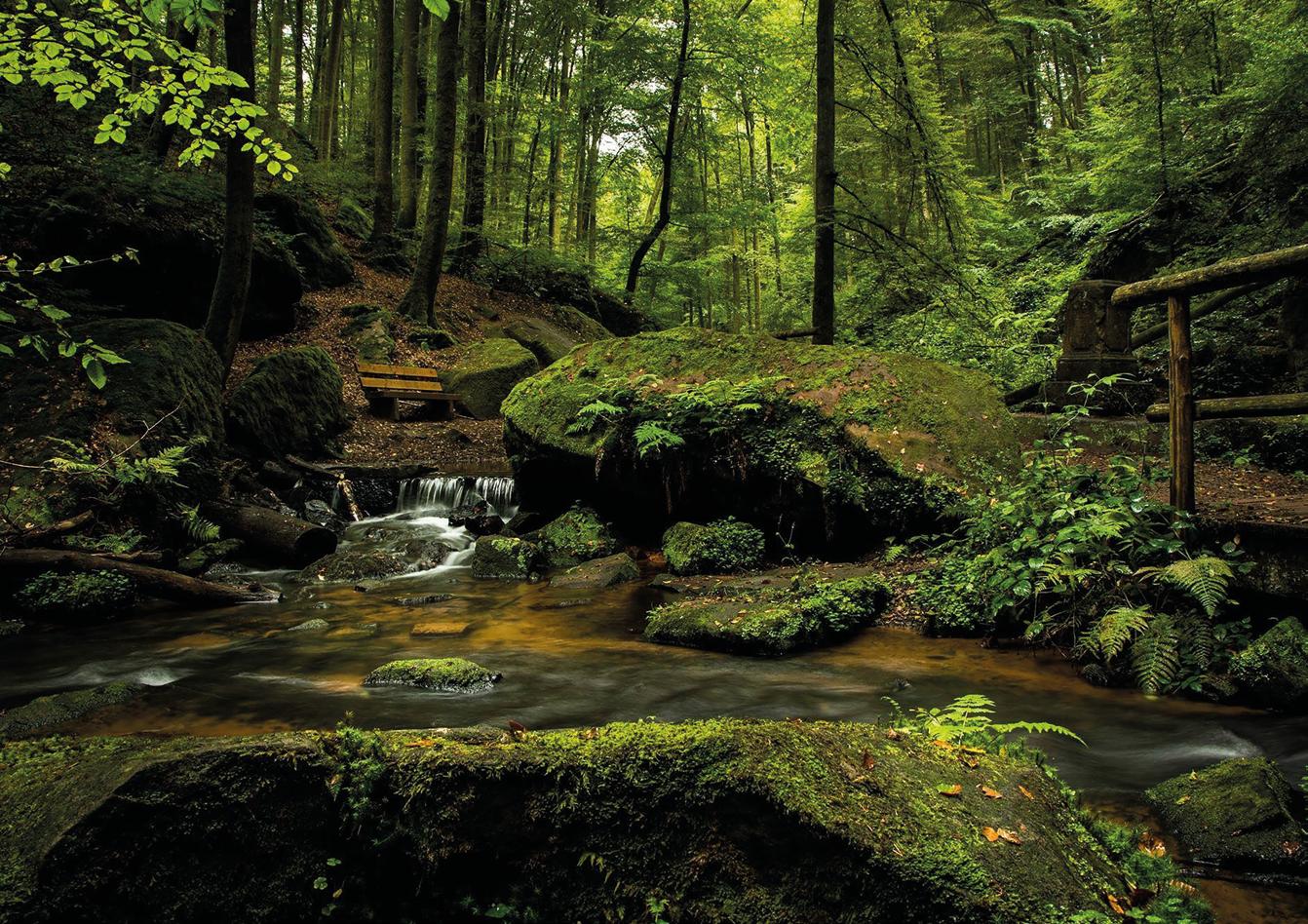
The treatment, cure, and care provided to deal with some evil or disease was known to the Greeks as therapeia. Our word “treatment” is derived from this. It is normal for someone to wonder how they will administer the forest to them if we add it. Will it be in pills, syrups, or serum? It doesn’t harm, so don’t worry. Even with all the humor, individuals who read us need to understand that we lead the individual to a total immersion in Nature, in some type of natural habitat, preferably woods.
Using the forest as therapy means that we will use the benefits provided by Nature as a way to intervene in people’s health. Not only in their physical health, but also in their mental and social health; even, for those who so wish, in their spiritual health. Each of these people has a specific need, or a specific health problem, or a personal difficulty. Taking into account these personal needs, we will try to find the most concise way to repair it, doing it in a structured way.
The approach of the Forest Baths is always therapeutic. The professionals who are dedicated to the Forest Baths are trained to be able to collaborate with guarantees with health professionals, making available to the general public, to the Institutions, all the set of interventions that we have.
What are we talking about then? We are talking about promoting healthy lifestyles, those that improve our quality of life. We are talking about relieving the day-to-day stress in which we live. We are also talking about preventing or dealing with burnout, that which is caused by work and production. Finally, we talk about more specific interventions on the health of any person, always under supervision.
Los griegos llamaban therapeia al remedio, al tratamiento, a los cuidados para hacer frente a algún mal, a alguna enfermedad. De ahí viene nuestra palabra terapia. Si le añadimos lo del bosque es normal que alguien pueda pensar, ¿cómo me van a dar el bosque?, ¿en pastillas, jarabes, lo tendrán en suero? No se preocupen, no duele. Bromas aparte, lo que tienen que saber los que nos lean es que llevamos a la persona a realizar una inmersión completa, mente y cuerpo, en la Naturaleza, en algún tipo de entorno natural, especialmente los bosques.
Usar el bosque como terapia significa que utilizaremos los beneficios que procuran la Naturaleza, como una forma de intervenir en la salud de las personas. No solo en su salud física, también en la mental y en la social; incluso, para los que así lo deseen, en la salud espiritual. Cada una de esas personas tiene una necesidad específica, o un problema de salud concreto, o alguna dificultad personal. Teniendo en cuenta estas necesidades personales trataremos de buscar la forma más concisa de repararlo, haciéndolo de manera estructurada.
El enfoque de los Baños de Bosque es siempre terapéutico. Los profesionales que nos dedicamos a los Baños de Bosque estamos formados para poder colaborar con garantías con los profesionales de salud, poniendo a disposición del público en general, de las Instituciones, todo el conjunto de intervenciones que tenemos.
¿De qué estamos hablando entonces? Hablamos de promover estilos de vida saludables, de eso que mejoran nuestra calidad de vida. Hablamos de aliviar el estrés del día a día en el que vivimos. Hablamos también de prevenir o hacer frente al burnout, ése que nos provoca el trabajo y la producción. Hablamos, por último, de intervenciones más específicas sobre la salud de cualquier persona siempre bajo supervisión.
